CONVEYORS, CRUSHERS, AND SCREENS


AUGUST 2023 | www.canadianminingjournal.com | PM # 40069240 FORTUNA’S SUCCESS STORY IN WEST AFRICA ALMONTY’S PROFITABLE TURNAROUNDS A REMARKABLE YEAR FOR CANADA’S TOP 40 Canada’s TOP 40
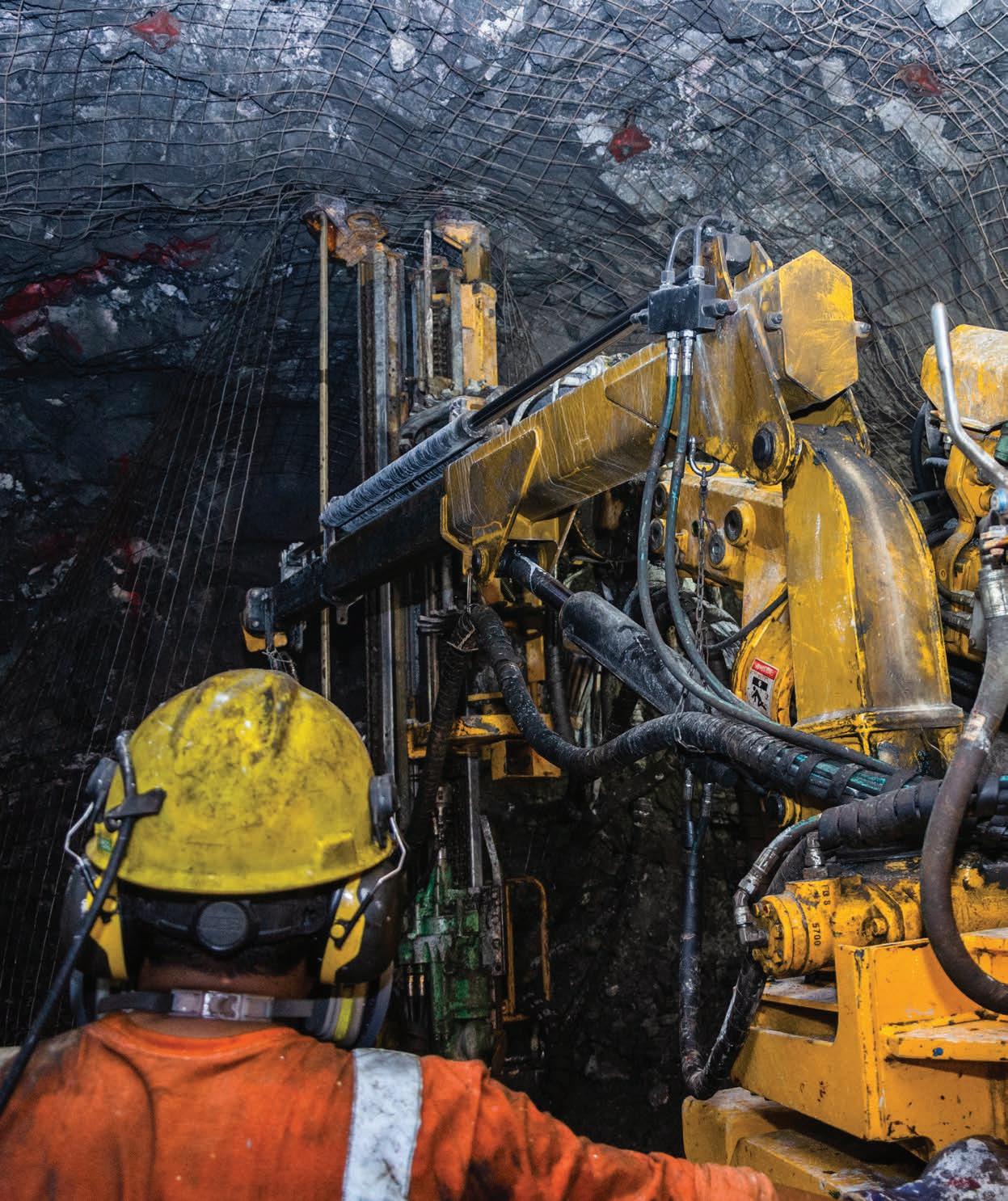

Hand protection for mining hazards 800-265-7617 superiorglove.com/mining
FEATURES
TOP 40
15 Top 40 revenues are more than $177 billion in 2022.
29 A Canadian success story in West Africa: Reporting on the Fortuna Silver Mines’ Séguéla mine visit.
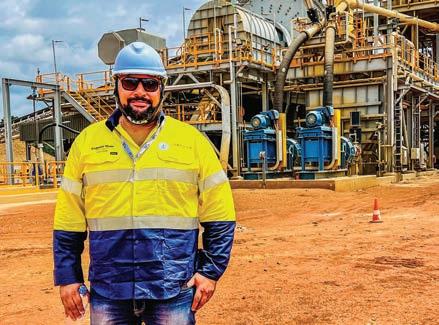
TECHNOLOGY
23 Is there a mining technology investment landscape?
GLOBAL MINING
25 Almonty Industries: The experts in profitable turnarounds.
57 What future for shipping in the Arctic region?
CONVEYORS, CRUSHERS, AND SCREENS
41 Efficient shaft revitalization with remote-controlled demolition equipment.
43 Mobile crushing carves a path into mining.

46 Finding the best solution to common screening issues.
48 Prepping for conveyor maintenance and upgrades.
52 Essential considerations in belt conveyor design.
RECLAMATION, ELECTRIFICATION, AND DECARBONIZATION
33 Zero carbon solutions for tomorrow’s clean technologies.
36 Seabridge Gold’s model for responsible exploration, mining, and Indigenous engagement.
39 The new age of productivity and sustainability.
55 Clean mining.
HISTORY OF MININGY
59 Canada’s first mining scandal.
DEPARTMENTS
4 EDITORIAL | A remarkable year for Canada’s Top 40.
6 FAST NEWS | Updates from across the mining ecosystem.
9 LAW | Gitxaala First Nation challenges British Columbia’s mineral tenure regime.
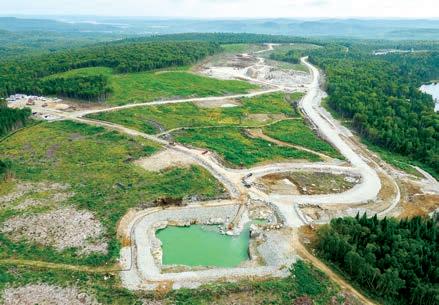
10 CORRECTION |
11 MIN(E)D YOUR BUSINESS | Distributing securities to Canadian First Nations and the need to modernize NI45-106.
13 COSTMINE | The effect of rock’s compressive strength on costs.
60 ON THE MOVE | Tracking executive, management, and board changes in Canada’s mining sector.

www.canadianminingjournal.com
For More Information
Please visit www.canadianminingjournal.com for regular updates on what’s happening with Canadian mining companies and their personnel both here and abroad. A digital version of the magazine is also available at https://www.canadianminingjournal.com/digital-edition/

Coming in September 2023 Canadian Mining Journal’s September issue will report on gold projects of merit across Canada and North America. We will also look at innovative technology designed to help gold miners operate more efficiently and sustainably.
Front cover image: Workers at the Sangdong mine in South Korea. CREDIT: ALMONTY INDUSTRIES
29 33 AUGUST 2023 VOL. 144, N O .6
CANADIAN MINING JOURNAL | 3 43
A remarkable year for Canada’s Top 40
Tamer Elbokl, PhD
It is that time of the year again where we publish our highly anticipated Top 40 ranking of Canadian mining companies, which is based on financials from 2022. See pages 15 to 22 to go immediately to the charts! Top 40 total revenues climbed up to more than $177 billion in 2022, enhanced by first place Nutrien’s total revenue boost by almost $15 billion. The numbers show that the mining sector continued to handle the diminishing impacts of Covid-19 pandemic effectively. As mentioned in the article, encouraged by the soaring commodity prices in recent years, several corporations were able to throw money into capital projects, including mergers and acquisitions, in expectation of higher demand.
It required a robust corporation to deal with the impacts of the Covid-19 pandemic and geopolitical instability on the mining sector in the last few years. The mining sector in Canada proved to be as solid and robust as it could be.
Also in this issue, we feature several articles on conveyors, crushers, and screens on pages 41 to 54. On pages 25 and 33, there are also two interviews with industry leaders (CEOs of Almonty Industries and Nouveau Monde Graphite) that offer updates on their major projects and their forecast for the future of the industry and the challenges they are facing.
Earlier this month, I visited Fortuna Silver’s new Séguéla gold mine in the north of the West African country of Côte D’Ivoire. I totally enjoyed my first mine visit outside of North America, and the article on page 29 offers a brief story of the mine site visit. Fortuna Silver Mines is a Canadian precious metals mining company with four operating mines and a development project in Argentina, Mexico, Peru, Côte d’Ivoire, and Burkina Faso. Fortuna produces gold and silver and improved its ranking on this year’s Top 40 list from 31 in 2021 to 28.
We also continue publishing the new department called “Min(e)d Your Business” in this issue (see page 11). This issue’s article reports on distributing securities to Canadian First Nations.
Moreover, John Sandlos continues to contribute to a series of articles on the history of mining that started in May 2023 issue, and this issue, he reports on Canada’s first mining scandal on page 59.
Finally, our next issue, September 2023, will report on gold projects of merit across Canada and North America. We will also look at innovative technology designed to help gold miners operate more efficiently and sustainably. Relevant editorial contributions can be sent directly to the Editor in Chief no later than Aug. 7, 2023. CMJ
AUGUST 2023 Vol. 144 – No . 06
225 Duncan Mill Rd. Suite 320, Toronto, Ontario M3B 3K9
Tel. (416) 510-6789 Fax (416) 510-5138 www.canadianminingjournal.com
Editor in Chief
Dr. Tamer Elbokl TElbokl@CanadianMiningJournal.com

News Editors
Marilyn Scales mscales@canadianminingjournal.com
Walter Strong wstrong@canadianminingjournal.com
Production Manager
Jessica Jubb jjubb@glacierbizinfo.com
Advisory Board
David Brown (Golder Associates)
Michael Fox (Indigenous Community Engagement)
Scott Hayne (Redpath Canada)
Gary Poxleitner (SRK)
Manager of Product Distribution
Allison Mein 416-510-6789 ext 3 amein@glacierrig.com
Publisher & Sales
Robert Seagraves
416-510-6891 rseagraves@canadianminingjournal.com
Sales, Western Canada
George Agelopoulos
416-510-5104 gagelopoulos@northernminer.com
Toll Free Canada & U.S.A.:
1-888-502-3456 ext 2 or 43734
Circulation Toll Free Canada & U.S.A.: 1-888-502-3456 ext 3

President, The Northern Miner Group
Anthony Vaccaro
Established 1882
Canadian Mining Journal provides articles and information of practical use to those who work in the technical, administrative and supervisory aspects of exploration, mining and processing in the Canadian mineral exploration and mining industry. Canadian Mining Journal (ISSN 0008-4492) is published 10 times a year by Glacier Resource Innovation Group (GRIG). GRIG is located at 225 Duncan Mill Rd., Ste. 320, Toronto, ON, M3B 3K9 Phone (416) 510-6891.
Legal deposit: National Library, Ottawa. Printed in Canada. All rights reserved. The contents of this magazine are protected by copyright and may be used only for your personal non-commercial purposes. All other rights are reserved and commercial use is prohibited. To make use of any of this material you must first obtain the permission of the owner of the copyright. For further information please contact Robert Seagraves at 416-510-6891. Subscriptions – Canada: $51.95 per year; $81.50 for two years. USA: US$64.95 per year. Foreign: US$77.95 per year. Single copies: Canada $10; USA and foreign: US$10. Canadian subscribers must add HST and Provincial tax where necessary. HST registration # 809744071RT001.
From time to time we make our subscription list available to select companies and organizations whose product or service may interest you. If you do not wish your contact information to be made available, please contact us via one of the following methods:
Phone: 1-888-502-3456 ext 3; E-mail: amein@glacierrig.com
Mail to: Allison Mein,
225 Duncan Mill Rd., Ste 320, Toronto, ON M3B 3K9
We acknowledge the financial support of the Government of Canada.
4 | CANADIAN MINING JOURNAL www.canadianminingjournal.com
FROM THE EDITOR
Canada’s TOP 40


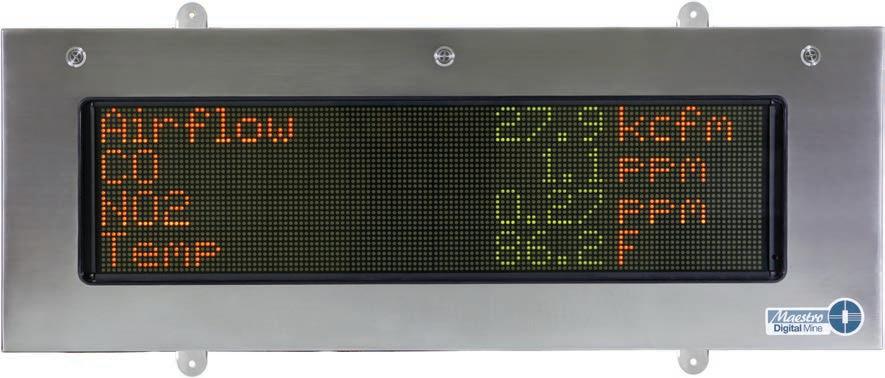
maestrodigitalmine.com SuperBrite™ Marquee Display SuperBrite™ Marquee Display provides fail-safe, real-time data by ensuring only current information is displayed – preventing unsafe old data from display when network is off-line. Easily integrated into wireless or Ethernet network and written to directly from any Vigilante AQS™ or Zephyr AQS™ stations, SCADA, DCS, PLC or HMI control system. Eliminate guesswork and know with confidence when it’s safe to move about the mine. “MAXIMIZE SAFETY AND PRODUCTIVITY BY PROVIDING REAL-TIME AIR QUALITY DATA AND EMERGENCY MESSAGES ON A LARGE DISPLAY THAT INTEGRATES WITH ANY NETWORK.” Safety in Numbers.
| MAC offers TSM as a subscription
• DECARBONIZATION | Meet net-zero targets with Decarbonomics from SNC-Lavalin

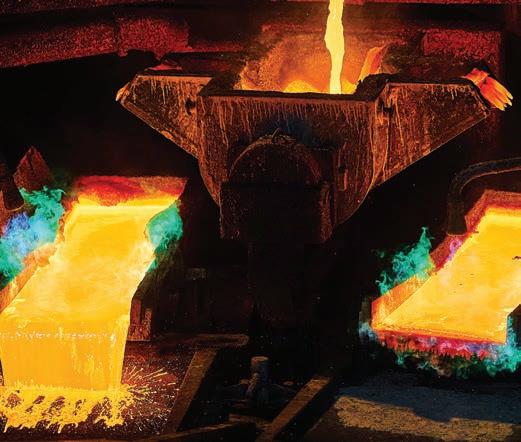
The Mining Association of Canada now offers its Towards Sustainable Mining (TSM) program as a subscription service. This performance system improves environmental and social practices in the mining sector. The first to sign up was Ioneer (ASX: INR), owner of the Rhyolite Ridge lithium-boron development in Nevada.
Ioneer has committed to the standard’s implementation. In its next ESG report, set to be released in September, the company will publicly report on its performance on the standard’s eight protocols, including climate change, tailings management, water stewardship, Indigenous and community relationships, safety and health, biodiversity conservation, crisis management, and preventing child and forced labour.
“The new TSM subscription service represents a natural evolution for the standard as uptake by mining associations internationally continues to grow alongside individual company interest focused on prioritizing greater transparency on how their mines operate,” said Pierre Gratton, president and CEO of the Mining Association of Canada. “Fourteen mining associations on six continents now incorporate TSM as a mandatory component of their membership and we are proud to welcome companies in our sector, like Ioneer, that are voluntarily opting to hold themselves accountable to the high ESG standards that form the baseline of the program.”
First established in 2004, TSM helps drive performance improvement at the site level. Using the program contributes to securing support for mining projects from the communities where they operate. CMJ
SNC-Lavalin is launching its decarbonization service for the industrial sector – enabling industrial users in global markets to make informed, tailored and data-led decisions about reaching net-zero targets.
The move is the latest progression for the award-winning Decarbonomics service, following its initial launch at the start of 2022 for commercial and government sector building portfolios. SNC-Lavalin has adapted the tool to enable its expansion into sectors such as mining, industrial, power and renewables, and aviation infrastructure.
What is Decarbonomics? It is a data-driven approach to decarbonizing existing assets and processes, through cost and program-optimized Net-zero strategies. By working on the ground with clients and understanding how their industrial complexes operate, Decarbonomics calculates the potential carbon and cost savings that can be achieved by combining digital tools with process engineering expertise. This is based on a three-step approach of benchmark, roadmap and delivery which has a proven track record of success in the commercial buildings and public sector with multiple use cases, both in the U.K. and North America.
The result is tailored, robust roadmaps that take into account the financial and operational impacts of introducing energy efficiency improvements, low carbon technology, or other interventions that will enable energy intensive users to decarbonize operations.
SNC-Lavalin has delivered this scope of work for multiple clients including its role as engineering partner for the U.K. government’s Industry of Future Programme in 2022. During its first year of operation, Decarbonomics helped more than 2,000 building and estates working with 150 consultants around the globe. Three hundred thousand tonnes of carbon reduction were identified, and two industry awards were won. CMJ
6 | CANADIAN MINING JOURNAL www.canadianminingjournal.com
FAST NEWS
Updates from across the mining ecosystem
Copper smelting CREDIT: NORDRODEN/ADOBE STOCK
• ESG REPORTING
Make sure to send your press releases to: editor@canadianminingjournal.com
CREDIT: DEEMERWHA STUDIO/ADOBE STOCK
DEEPLY INVESTED IN MINING.


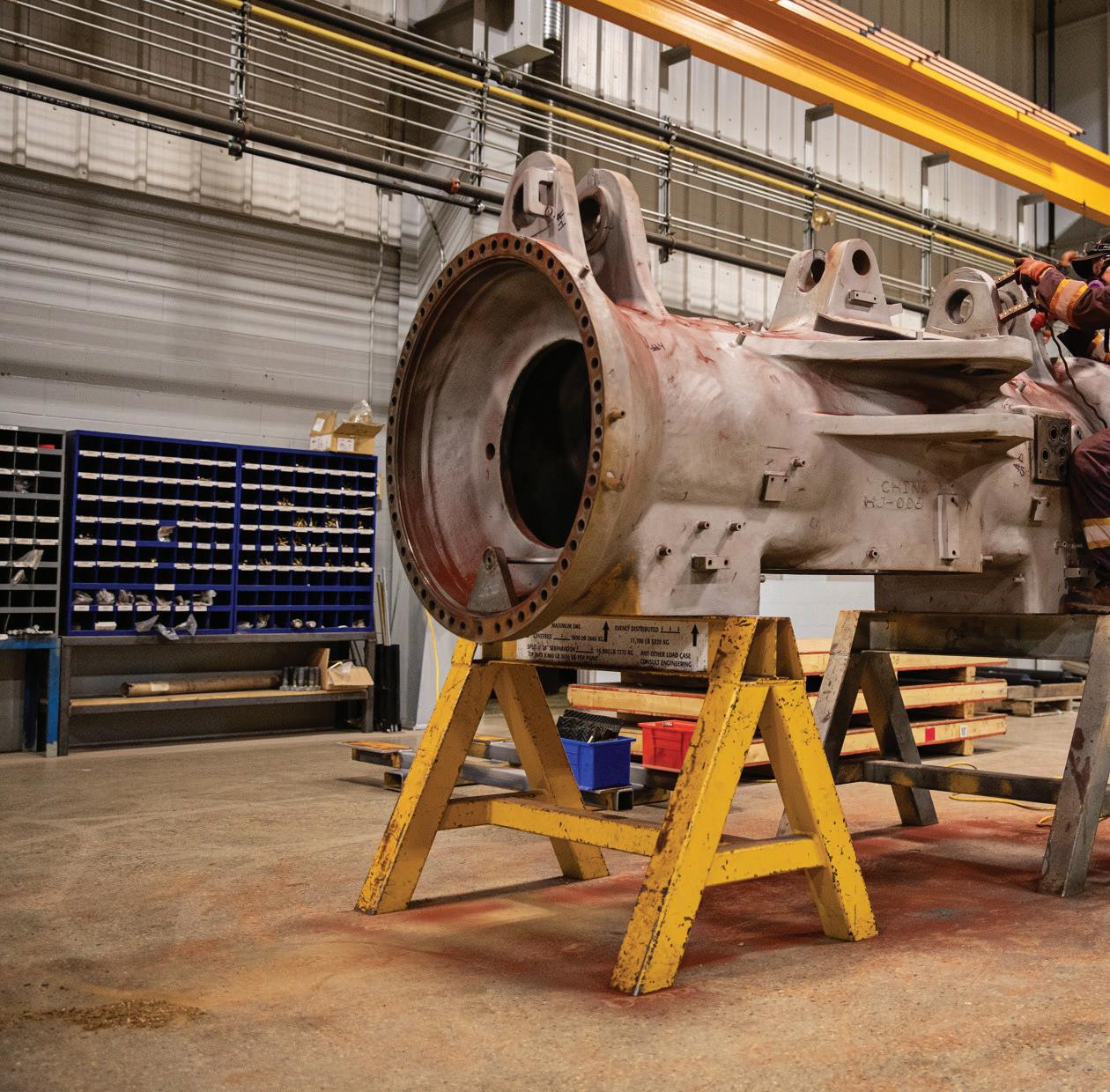
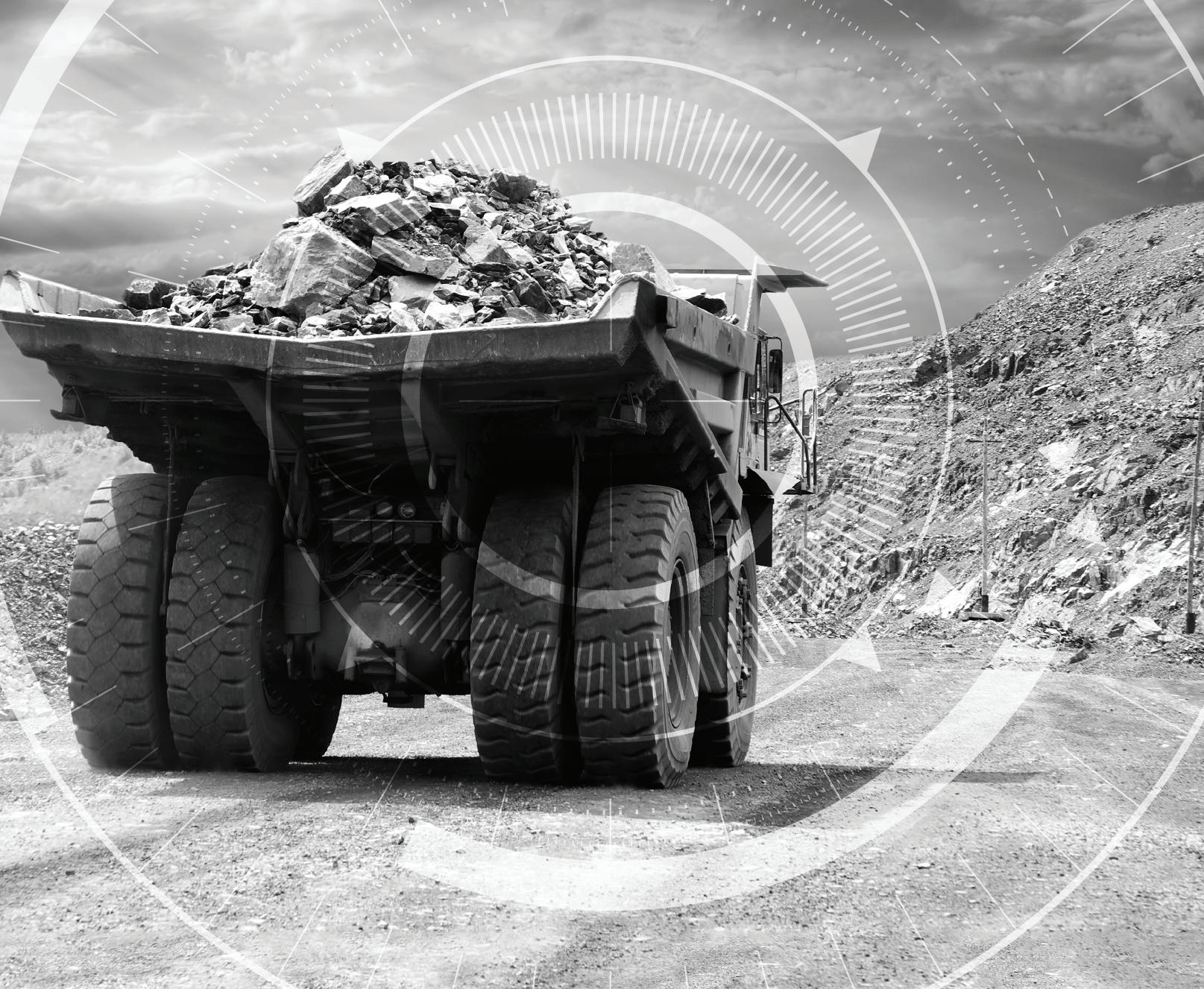

Updates from across the mining ecosystem
• AUTOMATION | Hexagon to buy out Canadian automation firm Hard-Line
Hexagon’s solutions connect all parts of a mine with technologies that make sense of data in real-time
 CREDIT: HEXAGON
CREDIT: HEXAGON
Sweden’s digital technology group Hexagon announced in July the acquisition of Canadian mine automation and remote control solutions Hard-Line for an undisclosed sum.
The move, Hexagon said, will help the company strengthen its solution offering with remote control via electronic and hydraulic by-wire technologies, innovation necessary for achieving full autonomy in the mine.
“The pressure to remove humans from dangerous situations where it’s unsafe to operate a manned vehicle is increasing, particularly as mines push deeper underground for minerals and metals,” Nick Hare, president of Hexagon’s mining division, said in the statement.

The company will operate as part of Hexagon’s mining division. CMJ
• EXPLORATION | Windfall Geotek uses AI to pinpoint gold targets
Windfall Geotek has used artificial intelligence (AI) to pinpoint at least 12 gold targets on properties belonging to Exploits Discovery about 90 km south of Gander, Nfld. The targets were generated using AI on a compilation of available historic data and proprietary machine-learned filtering.
The project area is in south-central Newfoundland and covers 1,208.75 km2 known as the Great Bend, Middle Ridge, and True Grit project areas. Only a limited amount of exploration over the past 40 years has been conducted in this area, making it an ideal candidate for Windfall’s industry-leading appraisal system.
Windfall is an AI company that has been in business for over 15 years developing its proprietary CARDS analysis (AI) and data mining techniques. Windfall Geotek a multidisciplinary team that includes professionals in geophysics, geology, AI, and mathematics. It combines available public and private datasets including geophysical, drill hole and surface data.
The algorithms designed and employed by Windfall are calculated to highlight areas of interest that have the potential to be geologically similar to other gold deposits and mineralization. The company’s objective is to develop a new royalty stream by significantly enhancing and participating in the exploration success rate of mining and to continue the Land Mine detection application as a high priority.
CMJ
• MILLING | Eriez magnetic liners cut energy use
A new report from Eriez reveals how its magnetic mill liners (MML) are significantly improving safety standards, energy efficiency, and operational longevity at the Nexa Resources N.A. installation in the central Andes of Peru.
Each MML is composed of individual sections that are much lighter than traditional liners, facilitating safer and easier installation procedures. Weighing only 20 to 40 kg per section, the MML eliminates the requirement for specialized cranes within the mill, streamlining operations and enhancing safety protocols.
There are environmental advantages to using MMLs. Heavier steel liners require enormous fuel consumption for transportation and material handling while lightweight MMLs can be installed by hand. Additionally, Nexa reports a significant reduction in noise levels with the MML.
The case study highlights the energy-efficient aspects of MMLs. In traditional ball mills, small ball chips do not contribute to grinding, leading to wasted energy. However, MMLs eliminate small ball chips, resulting in energy savings of up to 11% during the grinding process.
Unlike conventional liners that necessitate frequent replacement, the Eriez MML has garnered a track record of success through many installations in diverse mining operations worldwide. These installations provide evidence that MMLs outlast rubber or metallic liners by two to three times. CMJ
8 | CANADIAN MINING JOURNAL www.canadianminingjournal.com
FAST NEWS
Gitxaala First Nation challenges
British Columbia’s mineral tenure regime
By Robin Longe and David Hunter
The province of British Columbia’s “free entry” mineral tenure regime, which allows the holder of a free miner certificate to acquire mineral claims issued by the provincial government, is the subject of a recent court challenge brought by the Gitxaala First Nation in the Supreme Court of British Columbia. The Gitxaala allege the current mineral tenure regime violates the provincial Crown’s constitutional obligation to consult prior to disposing of an interest on lands where Aboriginal rights have been asserted, in addition to the province’s commitment to implement the United Nations’ Declaration on the Rights of Indigenous Peoples. The court began hearing arguments on this ground-breaking legal challenge on April 3, 2023.
In British Columbia, the Mineral Tenure Act governs the acquisition of entitlements to minerals held by the provincial government on certain “mineral lands,” which includes provincial government land and private land where mineral rights have been reserved to the government. Under this system, which has been in place since the gold rush era, a person who holds a free miner certificate is able to acquire mineral claims on mineral lands without requiring the consent of the government or landowner.
This process of mineral claim acquisition, commonly referred to as the “free entry” system, was designed to encourage mining activity of the province’s vast and underexplored resource potential. While a mineral claim provides the holder with certain limited rights to minerals that may or may not be present, it does not permit the claim holder to cause any material disturbance to the lands or to develop and operate a mine. Rather, the mineral claim represents a mere chattel interest in the minerals which, with limited exceptions, remain under government control. Without additional permits, a claim holder is restricted to carrying out low-impact, non-mechanized activities.
The Mines Act is the principal statute regulating mining activity through the lifecycle of a mine in British Columbia, through initial exploration to development and operations and, ultimately, to closure and reclamation. The process to obtain a Mines Act permit to conduct any impactful operations includes requirements, proportionate to the proposed activity, for consultation with third parties whose interests may be affected, including Indigenous groups. If and when the potential impact of the proposed activity increases, a proponent will face a correspondingly more intensive regulatory regime, requiring third-party consultations and the requirements of other legislation, including for example, over environmental and water management.
In 2018 and 2020, the province’s chief gold commissioner,


without consultation with the Gitxaala Nation, registered several mineral claims over lands on Banks Island, B.C. – an area the Gitxaala claim they have exclusively occupied, governed, managed and harvested for thousands of years. The Gitxaala have asserted Aboriginal rights, including Aboriginal title, to this area, and, consequently, argue they are entitled to the exclusive possession, use and control of minerals. The Gitxaala’s position is that the provincial government failed to consult prior to accepting and registering mineral claims over lands where Aboriginal rights and title have been asserted.

In addition to other declarations, the Gitxaala are seeking to set aside the Banks Island mineral claims, together with an order to discontinue or suspend the operational functions of the mineral titles registry which grant mineral claims without consultation.
In brief, the principal legal issue in the proceeding is whether the registration of a mineral claim, in and of itself, triggers the duty to consult and accommodate affected Indigenous groups. Canadian case law has established that the duty to consult arises whenever the government is contemplating a decision or
AUGUST 2023 CANADIAN MINING JOURNAL | 9
LAW
CONTINUED ON PAGE 10
CREDIT: SHAWN.CCFADOBE IMAGES
action that has the potential to adversely affect asserted or established Aboriginal or treaty rights. When triggered, the duty to consult (and accommodate where appropriate), is a process that requires collaboratively working together to find a compromise that balances the conflicting interests at issue, in a manner that minimally impairs the right.
In its response, the province asserts the system for registration of mineral claims is consistent with its obligations under Section 35 of Canada’s Constitution Act, 1982, and the principles guiding the conduct of the Crown in its dealings with Indigenous peoples. The position of the provincial government is that the registration of a mineral claim alone does not adversely affect Aboriginal rights, and the Mines Act permitting process (which includes consultation with Indigenous groups) is required before the occurrence of impactful mining activity. Since, in some instances, the accommodation of Aboriginal interests may mean the denial of applications for certain authorizations

(including Mines Act permits), the province has argued that the conduct of the government on Banks Island is consistent with its obligations.
The Gitxaala’s legal challenge to the province’s mineral tenure regime is an example of the ongoing tension between the rights of Indigenous peoples and government decisions associated with resource development activities. The outcome of this case is likely to have significant implications, both for Indigenous groups in British Columbia and for mining companies operating within the province. It remains to be seen whether and to what extent these impacts might extend beyond the process to acquire new mineral claims, to also affect the interests of private parties in acquiring and transferring mineral tenures. CMJ
Correction
On page 18 of the printed May 2023 issue, the last paragraph under “Generation Mining” title should read as follows:
“As Generation Mining noted in its latest corporate presentation, “Green is the new gold.” There are several deposits to be mined; together they total 230.7 million measured and indicated tonnes at 0.55 g/t palladium and 0.21% copper, as well as 28.6 million inferred tonnes grading 0.39 g/t palladium and 0.23% copper. Platinum, gold, and silver will also be recovered.”
memo2023.cim.org

THE NEXT LEVEL SEPTEMBER 17 - 20, 2023 SASKATOON COME AND JOIN US! REGISTER NOW LAW
ROBIN LONGE is a partner in Dentons Canada LLP’s Corporate group and acts as co-leader of the Firm’s national mining group. DAVID HUNTER is a partner in Dentons Canada LLP’s Corporate group.
By Andrew Spencer, Robin Junger, Sasa Jarvis, and Cory Kent
Distributing securities to Canadian First Nations and the need to modernize NI45-106
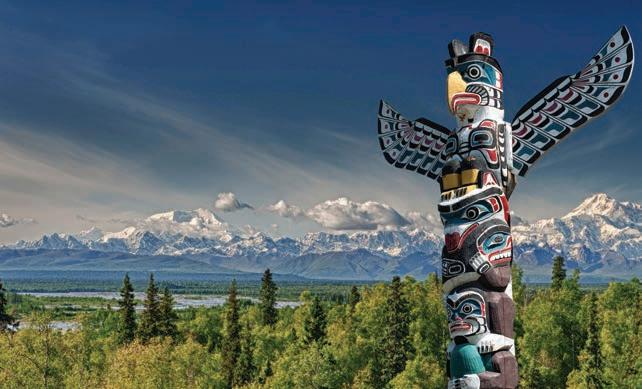


The management of mining projects in Canada must be aware of the unique rights of the Canadian Indigenous groups. These rights, which have their basis in the Canadian Constitution and in various treaties, are protected by a judicially constructed “duty to consult” whenever a government action of decision that may impact these rights is contemplated. The duty to consult may be triggered by any number of decisions in the mining context and might include the issuance of a permit or the approval of an environmental assessment, as examples. While the duty to consult is owed by the government, and not a proponent, it is well-established that the government may delegate various procedural aspects of its consultation obligations to a third party, such as a mining company. Moreover, most mining companies also realize the overall benefit of constructive engagements with Indigenous groups (over and above helping the government meet its duty to consult).
For these reasons, many operators have made the decision to consult early and often with the Indigenous Peoples on whose traditional lands they operate. The aim of these engagements is typically to gain a social license to operate in the project area and to have a measure of Indigenous support to help strengthen the resolve of government decision makers that are called to make permitting and other decisions that impact Indigenous rights. These discussions will sometimes result in commercial arrangements between an operator and an Indigenous group in the form of an exploration, cooperation, or impact benefit agreement (IBA) (or other similar such terms). Sometimes these agreements will provide Indigenous groups with equity participation rights to allow for the participation in the long-term upside of resource development in their traditional territory. These agreements are important, as they provide local Indigenous groups with short- and long-term economic benefits and a myriad of other operational guarantees. Determining whether to include equity participation will require careful consideration by mining companies and depend on the circumstances of each project and negotiation.
The problem
Canadian securities laws may make it difficult for mining companies and their Indigenous partners to fulfil the terms of their
commercial agreements in some respects. In Canada, the issuance of securities must be preceded by the filing of a prospectus with applicable regulatory authorities, or the issuance must be permitted pursuant to an exemption from the prospectus rules.

National Instrument 45-106 – Prospectus Exemptions (NI45106) contains several exemptions, many of which will be familiar to mining companies, including the ubiquitous “accredited investor” and “family, friends, and business associates” exemptions which junior issuers frequently use in private placements. Unfortunately, NI45-106 does not provide a clear exemption that can easily be used to distribute securities to an Indigenous group. Some First Nations, by virtue of their financial resources will be “accredited investors;” however, the status of First Nations as an exempt entity remains questionable when those financial thresholds are not met. The First Nation’s governance structure often does not fit neatly into any category of accredited investor. In these other cases, companies and their legal counsel may struggle to find a way to distribute these securities in compliance with applicable securities laws.
Certain issuers have availed themselves of little used exemptions in NI45-106 to make one-time distributions. NI45-106 does have an exemption for “isolated distributions by issuer.” This exemption may work to allow for an isolated distribution; however, by its nature, it may not be suitable for agreements that require a series of issuances to a counterparty over a period of

AUGUST 2023 CANADIAN MINING JOURNAL | 11
MIN(E)D YOUR BUSINESS CONTINUED ON PAGE 12
PHOTO:
IZZOTTI/ADOBE
ANDREA
IMAGES
months or years. This exemption has been used by issuers in the past for one-off distributions, such as for the settlement of legal disputes. When relied upon, the use of this exemption has been scrutinized by securities regulators and may not be considered appropriate for distributions to First Nations.



Where exemptions have not been clearly available to an issuer, issuers have sought relief from securities regulators. For example, Benchmark Metals Inc. (Re: Benchmark Metals Inc., 2021 ABASC 109) obtained exemption order from their principal regulator, the Alberta Securities Commission (ASC), to allow them to distribute securities in this context. Benchmark entered an exploration, cooperation, and benefits agreement with the Tsay Keh Dene Nation, the Kwadacha Nation and the Takla Nation in connection with advancing their Lawyers Gold-Silver project in British Columbia. As part of that agreement, Benchmark agreed to issue to the First Nations warrants to purchase Benchmark common shares. In the Benchmark case, the company decided, that there was no exemption available to distribute share purchase warrants which had been negotiated for. Benchmark sought and obtained an exemption order from the ASC for the distribution of warrants to the affected First Nations. While exemption orders may provide an avenue for relief, as it did in the Benchmark instance, they can be costly (in terms of application and legal fees) and time consuming and moreover may not be readily available.


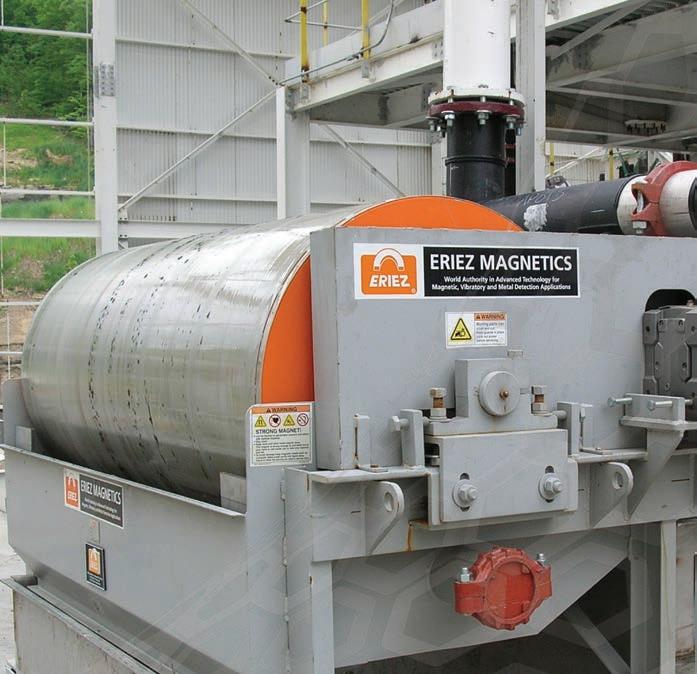




The solution


In the name of reconciliation and to permit Indigenous communities’ participation in the capital markets and in the financial upside associated with resource development on their traditional territory, the Canadian securities administrators must push the provinces and territories to modernize to NI45-106. More specifically, Indigenous governments and other community groups should be deemed “accredited investors” in the same way as other government entities such as municipalities, public boards, or commissions. To deem school boards as accredited while denying this status to Indigenous governments in certain cases is paternalistic. It makes it more difficult for these groups to fully participate as equity holders in the companies operating in their traditional territory. The Canadian Federal Government identified “creating prosperity with Indigenous Peoples,” “supporting Indigenous economic participation in major projects,” and “advancing economic reconciliation by unlocking the potential of First Nations lands” as major aims of the 2023 budget. The provinces and securities regulators need to do their part to help realize these goals too. CMJ

MIN(E)D YOUR BUSINESS 12 | CANADIAN MINING JOURNAL www.canadianminingjournal.com Eriez.com | 814.835.6000 Greater Recovery Better Grade with Eriez Deep Field 3,500 Gauss Magnetic Wet Drums Optimize Your Roughing, Cleaning & Scavenging with Eriez Magnetic Elements & Tanks • Hybrid Rare Earth-Ceramic elements produce greater recovery in cobbing and roughing stages • Cleaning and finishing magnetic elements improve selective separation WetDrum_HalfPg_CMJ_8_23.qxp_Layout 1 7/18/23 2:08 PM Page 1
ANDREW SPENCER and SASA JARVIS are partners, capital markets and securities, at McMillan LLP. ROBIN JUNGER is a partner, Indigenous law environment, at McMillan LLP. CORY KENT is an office management partner, Vancouver, B.C. and a partner, capital markets and securities, at McMillan LLP.
By Ali Vossoughian
The effect of rock’s compressive strength on costs
The mining industry operates in a dynamic and challenging environment where various factors influence the overall cost of mining operations. Efficiently managing these parameters is crucial for optimizing productivity and ensuring profitability. While many aspects have been extensively studied and incorporated into mining strategies, certain key factors, such as compressive strength, have often been overlooked or not given sufficient attention. This article aims to shed light on the significance of compressive strength as one of the major factors of mining costs.
Mining operations involve a multitude of parameters that directly or indirectly impact the cost of extraction, processing, and transportation. Parameters like ore grade, deposit depth, and mineralogy have long been recognized as critical factors affecting mining costs. Other parameters, such as labour costs, energy consumption, and environmental regulations, have also received considerable attention in the mining industry. Companies invest significant resources in analyzing and optimizing these factors to minimize costs and maximize operational efficiency. However, the influence of compressive strength on mining costs has often been underestimated, despite its crucial role in determining the feasibility and profitability of mining operations.
Compressive strength, referring to the ability of a rock or ore body to resist compression or breakage, is an essential geological property that directly influences the choice of mining methods, equipment selection, fragmentation, and overall operational planning. This article targets the effects of compressive strength on open-pit gold heap leach mining operations. A set of five identical models with different compressive strength values, ranging from 80,000 kPa to 240,000 kPa with a 40,000 kPa increment, were created using cloud-based SHERPA Surface software powered by Costmine. It is worth mentioning that all other parameters, such as labour costs, equipment costs, and supply costs, were provided by other Costmine publications, including Mining and Mill Equipment Costs Guide and Mining Cost Service. These established sources ensure the reliability and accuracy of the cost-related information incorporated in the analysis. For further information, please visit the Costmine website at costmine.com.
This article addresses the impact of compressive strength on blasting supply, equipment, hourly personnel requirement operating costs, and capital costs in a specific mining operation scenario. The study assumes a mine life of 14 years, comprising a two-year pre-production period with 3,500,000 tonnes of stripping and four three-year phases, each averaging 40,000 ore t/d. The total minable resources

are estimated at 168 million tonnes, and the mine operates on a schedule of two 12-hour shifts per day for 350 days per year. The rock quality designation (RQD) is assumed to be 82% and has a 2.60 t/m3 density.
Blasting supply
By increasing the compressive strength of rock, the powder factor, which represents the weight of explosive required to fragment a specific amount of rock, also rises. Consequently, the amount of explosive agent needed increases accordingly. Moreover, as compressive strength influences the drill hole pattern, it becomes necessary to increase the number of drill holes leading to a greater requirement for cap, primers, and detonation cord.
The correlation between compressive strength and bit wear is a crucial aspect to consider in drilling operations as well. As the compressive strength of the rock increases, it tends to have a direct impact on the wear and tear experienced by the drilling bits. Higher compressive strength leads to increased resistance and hardness of the rock, which can result in accelerated bit wear.
Equipment
Compressive strength exerts a profound impact on rock drilling, playing a pivotal role in determining the efficiency and effectiveness of drilling operations. As the compressive strength of the rock increases, the drilling process becomes more arduous and challenging. Depending on the scale of the operation, it necessitates a higher utilization of drill equipment and may even require additional drills.
Moreover, as discussed in the previous section on blasting supply, the heightened compressive strength demands an increased
AUGUST 2023 CANADIAN MINING JOURNAL | 13
COSTMINE
»
Figure 1. The correlation between compressive strength and operating cost.
COSTMINE
amount of explosive agent. This, in turn, prompts a need to either augment the utilization of bulk trucks or increase their numbers. It is worth noting that escalation in equipment utilization or the addition of more equipment directly correlates with an increase in fuel consumption.
Hourly personnel requirements
In the equipment section, it was observed that the number of equipment or their utilization rises with increasing compressive strength. Consequently, this leads to heightened demand for drillers, mechanics, and labour responsible for operating the drills, maintaining the equipment, and operating the bulk trucks, respectively.
Operating and capital cost
The operating costs in mining operations encompass various components that contribute to the overall financial expenditure.
Figure 1 outlines the operating costs associated with supplies, hourly labour, equipment operation, salaried labour, and miscel-
laneous expenses. As depicted in Figure 1, these costs tend to increase with higher compressive strength, indicating the impact of rock properties on operational expenses. Notably, the total operating costs exhibit an upward trend as compressive strength rises.
Capital costs are a vital consideration in mining ventures, covering a range of expenditures, such as equipment, pre-production development, facilities, working capital, engineering/ management, and contingency, which is 10% of the summation of all the parameters. Figure 2 visually represents the capital costs associated with various compressive strength scenarios, showcasing the financial investment required for mining operations. Notably, the figure reveals a clear trend indicating that as the compressive strength increases, so does the total capital cost. This correlation emphasizes the impact of rock properties on the financial aspects of mining projects, highlighting the need for careful budgeting and resource allocation. CMJ

14 | CANADIAN MINING JOURNAL www.canadianminingjournal.com
Ali Vossoughian is a mining engineer with Costmine.
Figure 2. Relationship between compressive strength and capital cost.
Canada’s TOP 40 2022
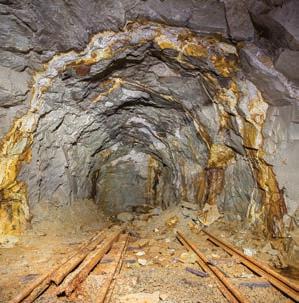
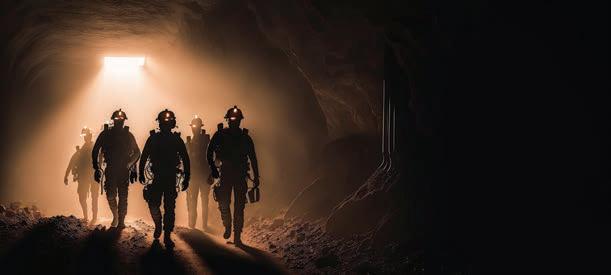
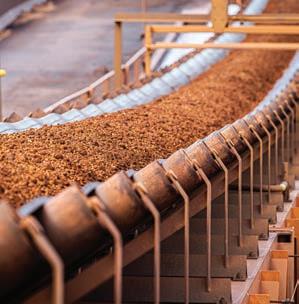

AUGUST 2023 CANADIAN MINING JOURNAL | 15
PHOTO: VECTORO, TIMOFEEV, MISHAINIK, JOHN, ADIN/ADOBE IMAGES
By Tamer Elbokl, PhD
Canada’s TOP 40
Top 40 revenues reach a record
$177 billion in 2022: up $28 billion from the previous year
Nutrien dominates again and Japanese Sumitomo joins the list for the first time
Top 40 revenues climbed up to more than $177 billion in 2022, mainly enhanced by Nutrien’s total revenue boost by almost $15 billion. Therefore, it is no surprise to our readers to see Nutrien, again, on top of our annual Top 40 list for 2022. In 2018, the Agrium and PotashCorp merger created Nutrien, a leader in global agriculture. Since then, Nutrien has dominated our Top 40 list. In July 2022, Nutrien announced agreements to acquire Brazilian agricultural retail companies Casa do Adubo S.A. and Marca Agro Mercantil. These acquisitions are meant to support Nutrien’s retail growth strategy in Brazil and may have added to Nutrien’s revenue boost in 2022.
It is interesting to realize that Nutrien’s domination on top of the list may not be affected in 2023 ranking by the recent acquisition of Newcrest by Newmont, as evident by combining Newmont’s and Newcrest’s revenues in 2022. Last May, Newmont agreed to acquire Newcrest by way of an Australian scheme of arrangement under which Newmont will acquire 100% of the issued shares in Newcrest Mining. The acquisition, though, “creates an industry-leading portfolio with a multi-decade gold and copper production profile in the world’s most favorable mining jurisdictions,” said Tom Palmer, president and CEO of Newmont.
Again, most of the companies on this year’s list are primary gold miners. That includes the new additions to the Top 40: Sumitomo and Aries. There are some copper-gold miners and many gold-silver miners. Several companies moved up the list assisted by their acquisitions and mergers in 2022. Both gold and copper continued their gains overall last year.
The good, the bad, and the ugly!
Good news is that 26 out of the 40 on the list achieved more total revenue in 2022 than in 2021. The bad news is that only four companies: Nutrien, Tech Resources, Agnico Eagle, and Capstone Copper bagged the biggest revenue gains in 2022 compared with 2021; good for them! In the next section, we will explain how they were able to make those profits.
Additionally, 14 companies were unable to improve their revenues in 2022 over 2021 numbers.
Net revenue (synonymous with profit) refers to the company’s total revenue less its operating expenses, interest paid, depreciation, and taxes. Surprisingly, only 12 of the 40 were able to report positive net revenue change in 2022, and that is the ugly truth.
Notable changes
Other than Nutrien’s stronghold to the first place, this year’s ranking has been dynamic. Among the many changes, Teck resources moved up to the second place from the fourth place in 2021 and 2020.
Yamana Gold (11th place last year) disappeared from the list, and Pan American moved up the list to 12th place, following the completion of its previously announced acquisition of all the issued and outstanding common shares of Yamana, also following the sale by Yamana of its Canadian assets to Agnico Eagle. It is worth noting that Agnico Eagle’s merger with Kirkland Lake Gold (completed in February 2022) may have
The criteria for choosing the TOP 40
To be eligible for CMJ’s Top 40 Canadian miners list, companies must meet two of the following three criteria:
1 Be domiciled in Canada.
2 Trade on a Canadian stock exchange.
3 Have a significant share of an operating mine or advanced development in Canada.
We have put extra effort into checking the eligibility of all the miners on the current list. However, we remain open to the suggestions of our readers.
16 | CANADIAN MINING JOURNAL www.canadianminingjournal.com
contributed to its total revenue boost by more than $2.6 billion in 2022 compared to 2021.
Capstone Copper climbed from 27th place in 2021 to 16th in 2022, likely a result of its combination with Mantos Copper.
Turquoise Hill Resources (10th place in 2021) disappeared from the list this year, as Rio Tinto has completed its acquisition of Turquoise Hill in Dec. 2022.
Only two royalty and streaming companies (Franco-Nevada and Wheaton Precious Metals) made the list this year, down from three last year. Despite the acquisition of Great Bear Resources, Kinross Gold moved down slightly only to the ninth place (from eighth in 2021). Fortuna Silver Mines combined with Roxgold late in 2021, and Fortuna moved up the list from 31st to 28th place in 2022 (see our report on Fortuna’s Séguéla mine visit on page 29 of this issue).
New to the list
Aris Gold joined the list this year. GCM Mining (formerly Gran Colombia Gold) was 31st on the list in 2021, but it is no longer on the list this year due to the fact that it acquired all outstanding Aris Gold shares that were not already held by GCM Mining in July 2022, and the resulting entity was named Aris Gold Corp., which explains why Aris Gold suddenly made it to the 34th place on the list this year out of nowhere.
The Japanese are here: Why Sumitomo?
Also, new to the list is the Japanese Sumitomo Metal Mining. Listed on a Canadian stock exchange (TSE: 5713), and based on several agreements between Sumitomo and Iamgold, Sumitomo now owns 30% of the Côté-Gosselin gold mine in Canada. The Côté-Gosselin gold project remains on track for gold production in early 2024. Additionally, beginning in January 2023, Sumitomo will contribute funding amounts to the Côté-Gosselin gold project for approximately $340 million over the course of 2023. In exchange, Iamgold will transfer an approximate 10% interest in the Côté-Gosselin JV to Sumitomo. Sumitomo also owns 80% of the advanced exploration Frotet gold mine in Quebec, with 20% owned by Kenorland Minerals. Whether this is the beginning of a Japanese wave of companies added to our list or not is something that we can only tell in the next few years.

The runner-ups
Again, this year, a list of five runner-ups is provided. As usual, the list was predominated by new companies that made it for the first time, including SilverCorp Metals, Endeavour Silver, K92 Mining, and Osisko Gold Royalties (all mainly gold and copper miners). And like last year’s runner-ups list, only Wesdome Gold from the previous year’s runner-ups made the list this year, advancing up to 43rd from 44th in 2021.
The oilsands
Canada has committed to net-zero by 2050. However, an interim goal would require the oil and gas industry to cut 42% of its greenhouse gas (GHG) emissions below 2019 levels by 2030. Both levels of government are providing support to the industry in the form of funding and tax credits but disagree on the methods to reach a carbon-neutral economy.
Ottawa is crafting policies that would put legislative pressure on the sector to decarbonize more quickly, including an impending emissions cap and killing “inefficient” fossil fuel
subsidies. Despite that, as shown in the oilsands table, Canada’s oilsands sector saw tremendous increases in revenues in 2022, compared to 2021. Oil prices continued to soar due to the geopolitical instability caused by the war in Ukraine.
Cenovus Energy replaced Suncor Energy on top of the list. In June 2022, Cenovus Energy acquired BP’s 50% stake in Sunrise oilsands project. British energy giant, BP, is planning to focus on offshore oil development instead of Alberta’s oilsands. Cenovus also completed the acquisition of Husky Energy for $3.9 billion in stock in Jan. 2021.
At the time of drafting this article, Imperial Oil’s 2022 total revenue had not been reported yet.
2023 Forecast
In May 2023, Teck Resources confirmed that it has received a revised, unsolicited, non-binding proposal from Glencore, which would see that company acquire Teck. However, later in June 2023, Glencore confirmed that it submitted alternative proposal to acquire Teck’s steelmaking coal business. As a result, Teck Resources may disappear from the list next year and may or may not be replaced by Glencore.
Copper Mountain will disappear from the list, since it was announced in June 2023 that Hudbay Minerals has acquired all the outstanding common shares of Copper Mountain, which made the latter a wholly owned subsidiary of Hudbay. However, the transaction created a premier American focused copper miner. In general, big acquisitions and mergers are expected in 2023. CMJ
AUGUST 2023 CANADIAN MINING JOURNAL | 17
Top 40 2022
18 | CANADIAN MINING JOURNAL www.canadianminingjournal.com Number of operating Rank mines in 2021 2022 Company HQ Country Industry Listed at Symbol Canada Commodity exposure 1 1 Nutrien Canada Mining & Chemicals TSX NTR 6 Potash, Phosphate Rock 4 2 Teck Resources Canada Mining Company TSX TECK.B 3 Widely diversified 2 3 Newmont United States Mining Company NYSE NEM 3 Copper, Gold, Lead, Silver, Zinc, Indium, Molybdenum, Uranium, Cobalt 3 4 Barrick Gold Canada Mining Company TSX ABX 1 Cobalt, Copper, Gold, Lead, Molybdenum, Nickel, Silver, Uranium, Zinc 5 Sumitomo Metal Mining Japan Mining & Manufacturing TSE 5713 0 Antimony, Copper, Gold, Nickel, Silver, Cobalt, Molybdenum 5 6 First Quantum Minerals Canada Mining Company TSX FM 0 Widely diversified 7 7 Agnico Eagle Canada Mining Company TSX AEM 13 Copper, Gold, Lead, Silver, Uranium, Zinc 6 8 Newcrest Mining Australia Mining Company ASX NCM 2 Copper, Gold, Lead, Molybdenum, Niobium, Rare Earth, Silver, Tungsten, Zinc, Iron Ore, Phosphate Rock, Cobalt 8 9 Kinross Gold Canada Mining Company TSX K 0 Copper, Gold, Silver, Tin, Zinc 9 10 Lundin Mining Canada Mining Company TSX LUN 0 Cobalt, Copper, Gold, Lead, Nickel, Palladium, Platinum, Silver, Tin, Zinc 11 11 B2Gold Canada Mining Company TSX BTO 1 Gold, Copper, Diamond, Magnetite, Phosphate Rock, Silver, Titanium, Uranium, Vanadium, Zinc 13 12 Pan American Silver Canada Mining Company TSX PAAS 2 Copper, Gold, Lead, Molybdenum, Silver, Zinc 14 13 Hudbay Minerals Canada Mining Company TSX HBM 1 Copper, Gold, Molybdenum, Silver, Zinc 17 14 Cameco Canada Mining Company TSX CCO 5 Cobalt, Copper, Gold, Lead, Nickel, Silver, Uranium, Zinc 16 15 Franco-Nevada Canada Royalty & Streaming TSX FNV 0 Widely diversified 27 16 Capstone Copper Canada Mining Company TSX CS 0 Cobalt, Copper, Gold, Iron Ore, Lead, Magnetite, Molybdenum, Silver, Zinc 15 17 SSR Mining United States Mining Company TSX SSRM 1 Copper, Gold, Lead, Molybdenum, Manganese, Silver, Zinc 22 18 Champion Iron Canada Mining Company ASX CIA 1 Cobalt, Copper, Gold, Iron - Total, Iron Ore, Magnetite, Silver, Zinc 20 19 China Gold International Canada Mining Company TSX CGG 0 Copper, Gold, Lead, Molybdenum, Silver, Zinc 18 20 Wheaton Precious Metals Canada Royalty & Streaming TSX WPM 0 Cobalt, Copper, Gold, Iron Ore, Lead, Molybdenum, Nickel, Palladium, Platinum, Silver, Tin, Zinc 19 21 Iamgold Canada Mining Company TSX IMG 3 Antimony, Copper, Gold, Lead, Nickel, Platinum, Silver, Zinc 21 22 Equinox Gold Canada Mining Company TSX EQX 1 Copper, Gold, Molybdenum, Silver 23 23 Eldorado Gold Canada Mining Company TSX ELD 1 Copper, Gold, Lead, Silver, Zinc 25 24 Torex Gold Resources Canada Mining Company TSX TXG 0 Copper, Gold, Silver 24 25 Centerra Gold Canada Mining Company TSX CG 1 Copper, Gold, Molybdenum, Silver 26 26 Alamos Gold Canada Mining Company TSX AGI 2 Copper, Gold, Lead, Silver, Zinc 29 27 Lundin Gold Canada Mining Company TSX LUG 0 Gold, Silver 31 28 Fortuna Silver Mines Canada Mining Company TSX FVI 0 Copper, Gold, Lead, Silver, Zinc 32 29 First Majestic Silver Canada Mining Company TSX FR 0 Copper, Gold, Iron Ore, Lead, Molybdenum, Silver, Zinc 28 30 New Gold Canada Mining Company TSX NGD 2 Copper, Gold, Lead, Molybdenum, Silver, Tungsten, Zinc 30 31 Dundee Precious Metals Canada Mining Company TSX DPM 0 Arsenic, Copper, Gold, Lead, Silver, Sulphur, Zinc 33 32 Ero Copper Canada Mining Company TSX ERO 0 Copper, Gold, Nickel, Silver 38 33 Calibre Mining Canada Mining Company TSX CXB 0 Copper, Gold, Silver 34 Aris Mining Canada Mining Company TSX ARIS 0 Copper, Gold, Silver 35 35 Argonaut Gold United States Mining Company TSX AR 1 Copper, Gold, Silver, Lead, Zinc 37 36 Taseko Mines Canada Mining Company TSX TKO 1 Copper, Gold, Molybdenum, Niobium, Silver 40 37 Victoria Gold Canada Mining Company TSX-V VIT 1 Cobalt, Copper, Gold, Nickel, Platinum, Silver 43 38 Karora Resources Canada Mining Company TSX KRR 0 Copper, Gold, Nickel, Silver, Zinc 34 39 Copper Mountain Canada Mining Company TSX CMMC 1 Copper, Gold, Silver, Zinc 45 40 Largo Canada Mining & Manufacturing TSX LGO 0 Vanadium, Iron Ore, Tungsten, Molybdenum, Fluorite, Titanium
Sorted by total revenue

AUGUST 2023 CANADIAN MINING JOURNAL | 19
DOLLARS
figures
THE REDPATH WAY SINCE 1962. SAFE, DEPENDABLE, PROFESSIONAL redpathmining.com AFRICA | ASIA | AUSTRALIA | EUROPE NORTH AMERICA | SOUTH AMERICA Mine Development Shaft Sinking Mass Excavation Production Mining Raiseboring Raise Mining Underground Construction Mechanical Excavation Engineering & Technical Services Specialty Services Total revenue in Net income in Operating cash million C$ million C$ flow in million C$ 2022 2021 2022 2021 2022 2021 49,298 34,737 9,968 3,949 10,554 4,871 22,533 13,481 3,317 2,868 7,983 4,738 15,505 15,320 –558 1,460 4,190 5,364 14,331 15,023 562 2,532 4,530 5,488 12,515 10,576 2,794 940 1,585 1,045 9,924 9,040 1,346 1,042 3,035 3,616 7,471 4,793 872 680 2,728 1,650 5,475 5,736 1,135 1,458 4,496 4,675 –788 277 1,367 1,423 3,958 4,173 555 977 1,141 1,861 2,255 2,209 329 526 775 908 1,945 2,047 –445 122 42 492 1,902 1,883 92 –306 635 481 1,868 1,475 89 –103 305 458 1,712 1,630 912 919 1,301 1,198 1,687 996 159 284 114 694 1,494 1,848 253 461 209 763 1,461 1,282 523 464 470 624 1,438 1,426 290 335 582 523 1,386 1,506 871 945 967 1,059 1,248 1,444 –91 –319 532 357 1,239 1,357 –138 695 74 402 1,134 1,179 –460 –170 275 454 1,130 1,073 246 190 531 414 1,106 1,128 –100 –478 –3 520 1,069 1,032 48 –84 388 447 1,061 919 96 277 555 524 887 752 –167 72 253 184 816 736 –149 –6 25 86 787 934 –87 176 248 406 741 804 47 263 302 317 555 614 133 252 187 457 525 411 56 73 126 132 520 480 1 233 100 101 505 548 –198 33 –5 164 392 433 –26 36 81 175 322 356 36 111 84 132 317 264 10 27 88 107 301 578 32 104 20 316 298 249 –2 28 5 50
Canada’s TOP 40 CANADIAN
All
in the tables are expressed in millions of Canadian dollars. -
Top 40 runner ups
THE FINE PRINT

> We recognize that revenues are an imperfect way of looking at companies, as they discount the value of near-term expansions and development projects. Since the cut-off for our Top 40 can be close, we have also included a runners-up table to highlight other Canadian companies that are generating strong revenues.

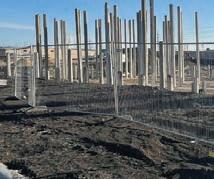

> Please see also the criteria for our Top 40 eligibility, which is unchanged from past years.
> Differences in reported revenue figures between this year and last are attributable to different exchange rates used to convert U.S. dollar figures for each year and to some companies having restated prior years’ revenue. Financial results are also impacted by commodity prices and exchange rates. For comparability purposes, note that cash flow from operations is calculated after changes in working capital.
> We use the Bank of Canada’s average exchange rate when converting U.S. to Canadian dollars: for 2022, the average was US$1.00 for C$1.301.
> This year, we also added a column displaying the number of operating mines in Canada for each company to the main table and displayed the full commodity exposure for each company.
> We are thankful to Katja Freitag, Manager of Mining Intelligence, for her help in generating the data for the tables using the Mining Intelligence database.

20 | CANADIAN MINING JOURNAL www.canadianminingjournal.com
Number of Total revenue in net income in Operating cash operating million C$ million C$ flow in million C$ Rank HQ Listed mines in 2021 2022 Company Country Industry at Symbol Canada Commodity exposure 2022 2021 2022 2021 2022 2021 41 SilverCorp Metals Canada Mining Company TSX SVM 0 Copper, Gold, Lead, Silver, Zinc 284 241 40 58 140 108 42 Endeavour Silver Canada Mining Company TSX EDR 0 Copper, Gold, Lead, Silver, Zinc 273 207 8 17 72 29 43 43 Wesdome Gold Mines Canada Mining Company TSX WDO 3 Copper, Gold, Silver, Zinc 265 263 –15 164 65 131 44 K92 Mining Canada Mining Company TSX-V KNT 0 Copper, Gold, Silver 245 193 46 34 95 77 45 Osisko Gold Royalties Canada Royalty & Streaming TSX OR 0 Gold-Silver-Copper 218 225 –119 –24 110 106
Sorted by total revenue (2022) C$ millions Total revenue net income Company TSX ticker 2022 2021 2022 2021 Cenovus Energy CVE 71,765 48,811 6,450 587 Suncor Ener gy SU 62,907 41,133 9,077 4,119 Canadian Natur al Resources CNQ 49,530 32,854 10,937 7,664 MEG Energy MEG 6,343 4,397 902 283 Imperial Oil IMO 37,508 2,479
Providing Safe, Simple & Secure fencing solutions for your boundary and security needs. We have the temporary fencing solution for your next project in stock and ready to deliver - fast! Call for a quote today! 1-855-993-0499 BROADFENCE.COM ANTICLIMB PANELS WATER-FILLED BARRIERS BARRICADE PANELS SLOT BLOCKS 6’ and 8’ panels available
Canadian oilsands producers
Net income
Net income change
C$ millions Rank Company Total Net Net income/ revenue income revenue 20 Wheaton Precious Metals 1,386 871 63 15 Franco–Nevada 1,712 912 53 18 Champion Iron 1,461 523 36 32 Ero Copper 555 133 24 5 Sumitomo Metal Mining 12,515 2,794 22 24 Torex Gold Resources 1,130 246 22 8 Newcrest Mining 5,475 1,135 21 1 Nutrien 49,298 9,968 20 19 China Gold International 1,438 290 20 17 SSR Mining 1,494 253 17 2 Teck Resources 22,533 3,317 15 11 B2Gold 2,255 329 15 10 Lundin Mining 3,958 555 14 6 First Quantum Minerals 9,924 1,346 14 7 Agnico Eagle 7,471 872 12 37 Victoria Gold 322 36 11 33 Calibre Mining 525 56 11 39 Copper Mountain 301 32 11 16 Capstone Copper 1,687 159 9 27 Lundin Gold 1,061 96 9 31 Dundee Precious Metals 741 47 6 13 Hudbay Minerals 1,902 92 5 14 Cameco 1,868 89 5 26 Alamos Gold 1,069 48 4 4 Barrick Gold 14,331 562 4 38 Karora Resources 317 10 3 34 Aris Mining 520 1 0 40 Largo 298 –2 –1 3 Newmont 15,505 –558 –4 36 Taseko Mines 392 –26 –7 21 Iamgold 1,248 –91 –7 25 Centerra Gold 1,106 –100 –9 30 New Gold 787 –87 –11 22 Equinox Gold 1,239 –138 –11 9 Kinross Gold 4,496 –788 –18 29 First Majestic Silver 816 –149 –18 28 Fortuna Silver Mines 887 –167 –19 12 Pan American Silver 1,945 –445 –23 35 Argonaut Gold 505 –198 –39 23 Eldorado Gold 1,134 –460 –41 AUGUST 2023 CANADIAN MINING JOURNAL | 21
Canada’s TOP 40
C$ millions Company 2022 2021 Income Change Nutrien 9,967.96 3,948.50 6,019.46 Sumitomo Metal Mining 2,793.51 940.36 1,853.14 Teck Resources 3,317.00 2,868.00 449.00 Hudbay Minerals 91.59 –306.01 397.60 Centerra Gold –100.47 –478.09 377.62 First Quantum Minerals 1,345.54 1,041.91 303.63 Iamgold –91.22 –318.59 227.36 Agnico Eagle 872.20 680.01 192.18 Cameco 89.38 –102.58 191.96 Alamos Gold 48.28 –83.53 131.81 Champion Iron 522.59 464.43 58.16 Torex Gold Resources 245.69 189.97 55.71 Franco-Nevada 911.69 918.81 –7.12 Calibre Mining 56.40 72.88 –16.49 Karora Resources 9.90 27.47 –17.57 Largo –1.89 28.26 –30.15 China Gold International 289.85 334.81 –44.96 Taseko Mines –25.97 36.47 –62.44 Copper Mountain 31.96 104.09 –72.13 Victoria Gold 36.47 110.72 –74.25 Wheaton Precious Metals 870.74 945.35 –74.61 Ero Copper 132.51 251.77 –119.26 Capstone Copper 159.02 284.06 –125.04 First Majestic Silver –148.71 –6.16 –142.55 Lundin Gold 95.72 277.30 –181.57 B2Gold 329.06 526.05 –196.99 SSR Mining 252.63 460.95 –208.31 Dundee Precious Metals 46.74 263.11 –216.37 Argonaut Gold –198.06 33.22 –231.28 Aris Mining 0.81 233.22 –232.41 Fortuna Silver Mines –166.74 72.48 –239.22 New Gold –86.93 176.07 –263.00 Eldorado Gold –460.43 –170.34 –290.09 Newcrest Mining 1,134.73 1,457.68 –322.94 Lundin Mining 555.46 977.23 –421.77 Pan American Silver –444.72 122.01 –566.73 Equinox Gold –137.98 694.89 –832.87 Kinross Gold –787.55 277.01 –1,064.56 Barrick Gold 562.16 2,532.15 –1,969.99 Newmont –558.26 1,460.18 –2,018.44
Operating cash flow
Revenue Change %
22 | CANADIAN MINING JOURNAL www.canadianminingjournal.com
C$ millions Rank 2022 Company Revenue Revenue 2022 2021 Change 16 Capstone Copper 1,687 996 69% 2 Teck Resources 22,533 13,481 67% 7 Agnico Eagle 7,471 4,793 56% 1 Nutrien 49,298 34,737 42% 33 Calibre Mining 525 411 28% 14 Cameco 1,868 1,475 27% 38 Karora Resources 317 264 20% 40 Largo 298 249 20% 5 Sumitomo Metal Mining 12,515 10,576 18% 28 Fortuna Silver Mines 887 752 18% 27 Lundin Gold 1,061 919 15% 18 Champion Iron 1,461 1,282 14% 29 First Majestic Silver 816 736 11% 6 First Quantum Minerals 9,924 9,040 10% 34 Aris Mining 520 480 8% 24 Torex Gold Resources 1,130 1,073 5% 15 Franco-Nevada 1,712 1,630 5% 26 Alamos Gold 1,069 1,032 4% 11 B2Gold 2,255 2,209 2% 3 Newmont 15,505 15,320 1% 13 Hudbay Minerals 1,902 1,883 1% 19 China Gold International 1,438 1,426 1% 25 Centerra Gold 1,106 1,128 –2% 23 Eldorado Gold 1,134 1,179 –4% 9 Kinross Gold 4,496 4,675 –4% 8 Newcrest Mining 5,475 5,736 –5% 4 Barrick Gold 14,331 15,023 –5% 12 Pan American Silver 1,945 2,047 –5% 10 Lundin Mining 3,958 4,173 –5% 31 Dundee Precious Metals 741 804 –8% 35 Argonaut Gold 505 548 –8% 20 Wheaton Precious Metals 1,386 1,506 –8% 22 Equinox Gold 1,239 1,357 –9% 36 Taseko Mines 392 433 –9% 37 Victoria Gold 322 356 –10% 32 Ero Copper 555 614 –10% 21 Iamgold 1,248 1,444 –14% 30 New Gold 787 934 –16% 17 SSR Mining 1,494 1,848 –19% 39 Copper Mountain 301 578 –48%
(sorted by cash flow) Total Operating Operating revenue cash flow cash flow/ in million in million revenue Rank Company C$ C$ (%) 1 Nutrien 49,298 10,554 21 2 Teck Resources 22,533 7,983 35 3 Newmont 15,505 4,190 27 4 Barrick Gold 14,331 4,530 32 5 Sumitomo Metal Mining 12,515 1,585 13 6 First Quantum Minerals 9,924 3,035 31 7 Agnico Eagle 7,471 2,728 37 8 Newcrest Mining 5,475 N/A 9 Kinross Gold 4,496 1,367 30 10 Lundin Mining 3,958 1,141 29 11 B2Gold 2,255 775 34 12 Pan American Silver 1,945 42 2 13 Hudbay Minerals 1,902 635 33 14 Cameco 1,868 305 16 15 Franco-Nevada 1,712 1,301 76 16 Capstone Copper 1,687 114 7 17 SSR Mining 1,494 209 14 18 Champion Iron 1,461 470 32 19 China Gold International 1,438 582 40 20 Wheaton Precious Metals 1,386 967 70 21 Iamgold 1,248 532 43 22 Equinox Gold 1,239 74 6 23 Eldorado Gold 1,134 275 24 24 Torex Gold Resources 1,130 531 47 25 Centerra Gold 1,106 –3 –0.3 26 Alamos Gold 1,069 388 36 27 Lundin Gold 1,061 555 52 28 Fortuna Silver Mines 887 253 29 29 First Majestic Silver 816 25 3 30 New Gold 787 248 32 31 Dundee Precious Metals 741 302 41 32 Ero Copper 555 187 34 33 Calibre Mining 525 126 24 34 Aris Mining 520 100 19 35 Argonaut Gold 505 –5 –1 36 Taseko Mines 392 81 21 37 Victoria Gold 322 84 26 38 Karora Resources 317 88 28 39 Copper Mountain 301 20 7 40 Largo 298 5 2
TOP 40
Canada’s
By Steve Gravel
Is there a mining technology investment
LANDS CAPE?
One of the most frequent questions I get asked when working with mining technology companies is “how do I access capital?” These tech firms have all the hallmarks of other tech companies. They employ highly skilled people, they use disruptive technology like artificial intelligence, and they engage in world-class applied R&D. Traditionally, industrial technology companies have not used third party investment as an instrument to raise capital as much as other sectors like digital technologies and life sciences. Lacking a universally compelling story, consumer facing products, and having typically longer returns on investments, industrial tech companies have long struggled to attract venture capital interest. This, however, is starting to change.
While not typically seen as a bastion of new ways of doing things, the mining sector is undeniably an industry that consumes innovative technologies. There is much written on this topic regularly by industry insiders profiling the latest solu-
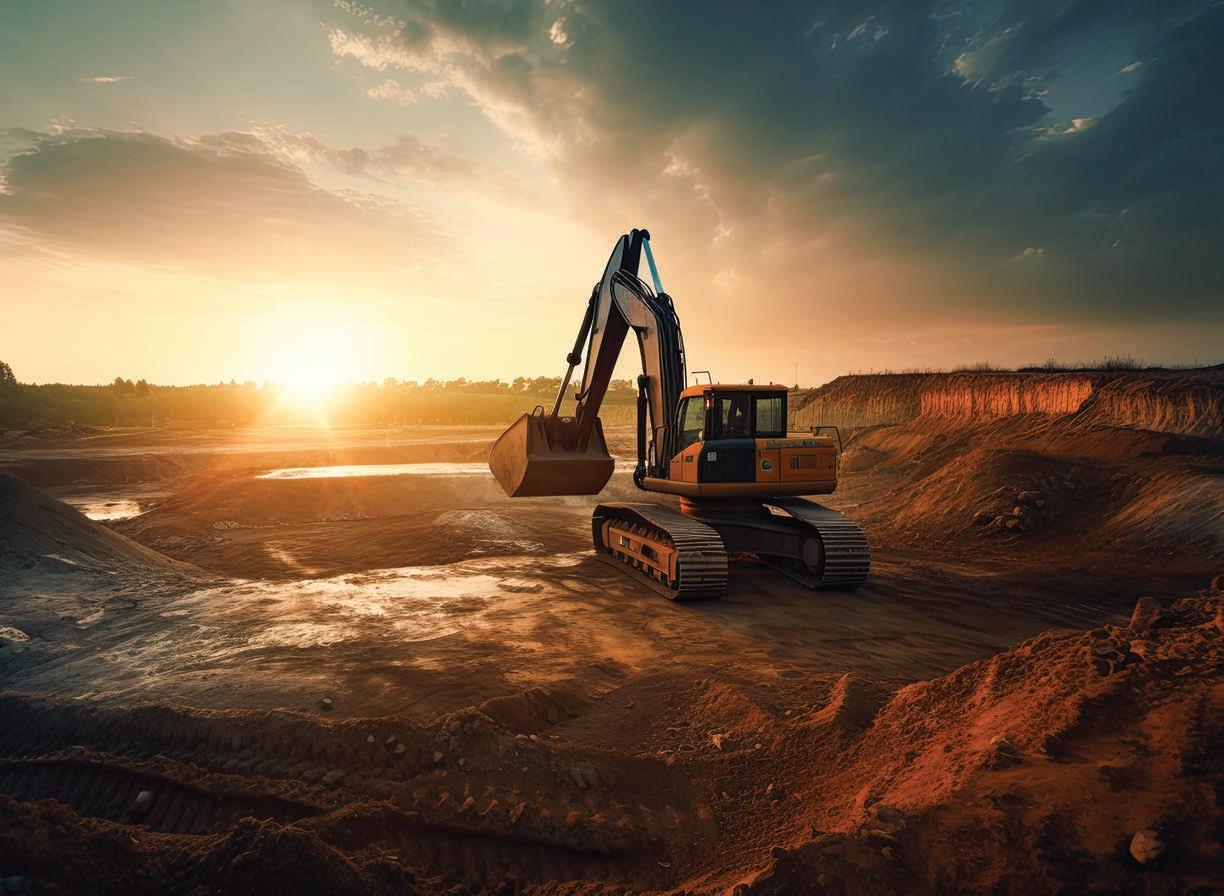
tion that will save money or make mines safer or more profitable. Many of these mining technology companies were formed on the basis of solving a specific challenge for the mines, and many of them are bootstrapped and grow through typical means like personal investment, patient capital (friends and family), or traditional bank loans.
In my experience, mining technology companies usually do not raise capital the way other technology sectors do. Quite often, I have heard from angel investors and venture capital fund managers that the mining technology sales cycle is too long and therefore too risky to invest in. What has become increasingly clear is that there is a nascent mining technology investment landscape that is starting to take shape and much of this important work is happening right here in Canada.
From a cursory look at the investments that have been made in mining technologies, the types of deals can be divided into a few categories; industry specific
corporate venture capital (VC), traditional venture capital funds with a focus on industrial technologies, and academic linked start-up programs.
Corporate VC is the direct investment of corporate funds into an external startup company. Typically, this is characterized by large companies recognizing a unique technology offering that can offer benefit within the large firm’s value chain or business process. Often, the corporate will invest through joint venture agreements, direct funding to R&D, and/ or taking an equity position in the start-up. The investing corporation may also provide the startup with management and marketing expertise, strategic direction, and/or a line of credit. Some interesting examples of corporate VCs that have invested in some mining tech start-ups that I have come across in recent years include ABB Technology Ventures and Caterpillar Ventures.
ABB Technology Ventures (ATV) is the venture capital arm of the well-known
AUGUST 2023 CANADIAN MINING JOURNAL | 23
TECHNOLOGY
PHOTO: ADOBE STOCK/CENDECED
CONTINUED ON PAGE 24
TECHNOLOGY
electrical and automation firm, the ABB Group. ATV looks for breakthrough technology companies aligned with ABB’s business goals and more altruistic vision for society. Some notable investments include the B.C.-based digital ore sorting solution company, MineSense, and the Sweden-based battery developer and manufacturer, NorthVolt, which is becoming a household name for those interested in the EV supply chain.
Caterpillar Ventures (CV) was founded in 2015, and it invests in early-stage startups focusing on the energy sector and the digital economy. While many of the firms’ investments have been in industrial technology companies with wide cross-sectoral appeal, several of them have mining as a key segment of focus. For example, CV has invested in Guardhat, an industrial IoT firm that facilitates lone worker scenarios through wearable tracking devices and other solutions. CV have also invested in Waterloo-based tech company, Clearpath Robotics. Clearpath has had several forays in the mining sector from intelligent inspection robots to autonomous mapping robots and fully
autonomous mine vehicles. In all, CV has invested in 17 firms to date and is actively recruiting new investment opportunities in energy, digital solutions, robotics, and advanced materials.
Furthermore, mining companies themselves have started to see the value in the technology ecosystem and have launched corporate VCs to accelerate new ventures towards commercialization. NEXA Resources, for example, launched its Mining Lab program in 2016, and Vale launched its corporate VC arm, Vale Ventures, in 2022 to invest in disruptive technological innovation projects for the mining and metallurgy industry.

When it comes to VC firms that have a focus on mining technology, it appears there are only a handful of firms zeroed in on mining from which to draw. The term commonly used in the investment community for these funds is “industrial innovation venture capital.” Far and away, the most prolific VC I have encountered in the space is the Vancouver-headquartered Chrysalix Venture Capital. While some of its 20+ portfolio companies focus on multiple sectors, the threads
that link them all are mining, metals, and energy. The portfolio companies are truly a great example of technological innovations in the industry as they range from utilizing AI in mineral exploration to advanced IoT sensors and even autonomous inspection robots.
In the angel investment space, there is momentum growing behind a few opportunities led by the Northern Ontario Angels (NOA), Archangel’s Axion fund, and the Sudbury-based Catalyst fund. These funds have a focus on investing in northern Ontario-based companies and have mobilized capital for several mining-based technology ventures such as the IoT firm, Symboticware, and the autonomous mining equipment venture, Fortai.
In addition to direct investment in start-ups, there are university-linked accelerators that have healthy numbers of portfolio companies focused on the mining sector. University of Toronto’s Creative Destruction Lab, for example, have had nearly a dozen companies targeting mining and mineral processing from AI geological solutions and tailings treatment technologies to advanced robotics and novel lithium extraction technologies. Involvement in academic linked accelerators provides early-stage companies access to mentors and introduction to the angel and venture investment community.
The mining sector has been a consumer and developer of innovation for over a century. The rise of the modern tech firm has occurred relatively recently over the last three decades. Mining and tech are now, more than ever, getting to know each other. With the recent re-focusing of attention on critical minerals, more technology ventures are starting to see the sector as an opportunity. Mines are now closer to the consumer with the advent of the electric vehicle supply chain, and they are more prevalent in the public consciousness. This, coupled with the sector’s recognition of the need to decarbonize, make it ripe for new technology adoption. While still in the early stages, the investment community is starting to consider mining-focused firms as viable ventures to invest in. Canada has an opportunity to lead in this space and become a destination for industrial tech start-ups. CMJ
www.canadianminingjournal.com
Steve Gravel is the manager of the Centre for Smart Mining at Cambrian College.
Is your mine design based on sound geology?
.com
By Tamer Elbokl, PhD

turnarounds Profitable
Interview with Lewis Black, CEO and president of Almonty Industries
Almonty Industries is a global mining company focused on tungsten mining and exploration. The company is listed on the Toronto Stock Exchange and its current portfolio includes operations in Spain, Portugal, and South Korea. Almonty specializes in acquiring distressed and underperforming tungsten operations and assets. The company’s operational experience and unrivaled expertise in the tungsten market help revitalize these operations.
The company’s acquisitions have been fast and very profitable turnarounds. Almonty continues to actively pursue other growth opportunities via acquisitions where it can apply its tungsten expertise to create additional value for all stakeholders.
Tungsten is an irreplaceable component in the production of much modern technology. For example, tungsten is an additive in the production of specialty alloys; filament wire for lighting (2%); and specialty uses for mobile phone handsets, military, ballistics (defense equipment) automotive parts, aerospace components, drilling, boring and cutting equipment, logging equipment, electrical
Tungsten is on the list of 31 minerals currently considers to be “critical” by the Canadian government. It is a chemical element with the symbol W and atomic number 74. Tungsten is a rare metal found naturally compounded with other elements. It was identified as a new element in 1781 and first isolated as a metal in 1783.
Fast facts about tungsten
> Tungsten is the heaviest engineering material with a density of 19.25 g/cm3.
> It has the highest melting point of all metals at 3,410°C with a boiling point of 5,700°C.
> It has the lowest vapour pressure of all metals.
> It has the highest modulus of elasticity of the metals (E = 400 GPa).
> It is the hardest pure metal.
> Excellent high-temperature strength characteristics.
> It has the highest tensile strength at temperatures above 1,650°C.
> It has a low thermal expansion co-efficient (4.4 x 10-6 m/m/C) like that of borosilicate glass, and therefore makes it useful for glass to metal seals.
> It does not oxidize in air and needs no protection from oxidation at elevated temperatures.
> Its corrosion resistance is excellent, and it is not attacked by nitric, hydrofluoric, or sulphuric acid solutions.
> Environmentally friendly; does not break down or decompose.
and electronics appliances, chemical applications, and many other end-uses. Recently, I had the opportunity to chat with Lewis Black (LB), CEO and president of Almonty Industries. Black talked about tungsten and the recent developments in the global markets and how it affects the company’s projects and investments.
CMJ: As a conversation starter, can you please talk to us briefly about the history of Almonty Industries and how you became the CEO and president of the company?
LB: Almonty Industries was created about 12 years ago by myself, which is how I
>
AUGUST 2023 CANADIAN MINING JOURNAL | 25 GLOBAL MINING
“Highly regarded as a hands-on, turnaround investor-operator, Almonty is an expert at overseeing projects regarded as too complex or difficult for the average, pure “financial investor.”
LEWIS BLACK, CEO AND PRESIDENT OF ALMONTY INDUSTRIES.
became CEO. I put about $9 million into the company when we made our first acquisition, which was the Los Santos mine in Spain. I was the founding partner back in 2011.
Previously, we had been under a ticker of PMI where we had had the Panca mine. We had bought that mine, turned it around, and sold it for 21 times earnings. So, after that event, we rebranded a few years later with Almonty
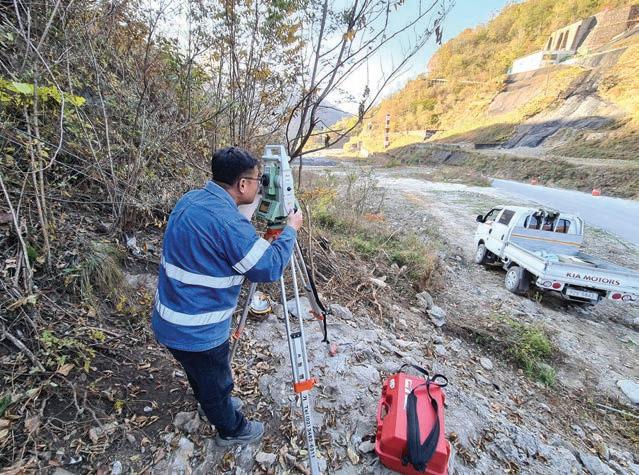
CMJ: In your opinion, how are political risks and defense implications affecting the industry now?
LB: Both these points have really taken front and center in the last four years. Everyone was very aware of certain jurisdictions and their dominance of certain commodities for the last 30 years.
We saw this in 2008 when most of the supply contracts out of China were canceled in the national interest. At that point, everyone in the economic meltdown and the thought was: we are going to diversify, and of course, the EU (European Union) pivoted towards Russia to diversify, which has not worked out quite as they planned. In the last four years, we have seen this geopolitical risk elevate dramatically. Also, one thing we have learned during the last three years of the pandemic is that governments have much more capacity to act than we all realized. Whether you are a corporation or a consumer, it does not really matter what jurisdiction you are in, because if a national emergency or a strategic reason is declared, the government can do whatever it wants. And there is really nothing you can do about it.
Things are no different with commodities. So, there has been a focus on tungsten which is extensively used in defense. One thing that has been highlighted in the first traditional land war that we have seen in a generation, which is in Ukraine, is that currently the West has an exceedingly small capacity for munitions production compared to what it had 30 years ago.
And in Ukraine, they are consuming every day more munitions than we could produce daily. So, you can see why it is problematic to have 90% of the world’s tungsten coming from China and Russia. Even if you can get the tungsten, which is exceedingly difficult right now, 90% of it
must come from the very people that you have to prepare yourself to defend against. It is an extraordinary predicament that we found ourselves in.
CMJ: Is the situation any different because we have a war going on? Did we not realize that problem before even the war?
LB: I think we must look at the concept of the democratic system. The democratic system is reliant on a popularity contest every few years. So, the focus is on the things that make you popular. During the Cold War, of course, defense was front and center, but since then, we have become a much more progressive society, and now we can solve our issues over croissants and coffee. The harsh reality is when one country plants 167,000 troops on the border of a sovereign nation that borders into Europe, and you call their bluff, they roll right across you.
When the war started, Germany said they have two days’ worth of munitions inventory, and they are sending tanks to Ukraine but no munitions. Also, the U.S. very generously, promised to give 31 Abrahams tanks to Ukraine, but they cannot ship them because they need to replace the existing armor with tungsten and webbing armor, which they cannot procure right now because there is no tungsten. Unfortunately, people knew but no one really cared.
The issue is that no politician was going to get elected in the last 30 years saying I am stockpiling munitions. And we have obviously seen what happens when someone calls our bluff.
CMJ: The global supply chain is facing many increasing challenges. Can you talk to us about that? What created the current situation in addition to the war?
LB: In the 1980s, there were 100 tungsten mines outside of China around the world. By the mid-nineties, only two were left, and this was not unique to tungsten.
What happened to several commodities is that pre-WTO membership of China, they arrived at the market, and bought market share by making certain commodities available at prices that we were in disbelief at. As a result, no one could compete.
We never really understood this market share dominance. And once you got a foot in the door, supplying raw materials would become supplying of downstream materials, and you would keep expanding your dominance. It was just business, and we dropped the ball. How we resolve it now is the $24,000 question.
What we saw during COVID was not just any typical global event. We saw enormous ripples of interference with a smooth-running global operation.
For example, shipping has been an absolute disaster for the last three years.
26 | CANADIAN MINING JOURNAL www.canadianminingjournal.com GLOBAL MINING
A surveyor takes topographic alignment readings as the development of supporting infrastructure for Almonty’s Sangdong mine continues CREDIT: ALMONTY INDUSTRIES
It has been hugely expensive, enormously unreliable, and chaotic. We have sanctions on Russia but not really. Sanctions only work if everyone signs up. So, Russian tungsten still finds its way to the market. It just does not go through the EU anymore. It goes through China.
Globalization conceptually is a fantastic and worthy ambition, but we do not really have a global supply chain. What we have is a supply chain that is dominated by certain jurisdictions. The fact that it crosses the world to get to you does not make it a global supply chain. A global supply chain implies that if you are not happy buying from place A, then you have options to buy in place B, C, D, and E; that is a global supply chain. We do not have that. Currently, you can buy it in place A, and that is it. And so, shipping has obviously been an issue.
We are talking about commodities that are dominated by two countries, Russia and China. We have no idea what they will do to defend that market share. Will they cut you off? Will they restrict supply? Will they crash pricing? We do not know how they will defend it. And that is the great unknown for governments. So, we need diversification.
CMJ: Outside of China and Russia, how can countries in conflict with those two countries secure their supply of tungsten?

LB: High level solutions include government offtake, loans, and subsidies. We know that countries would like to have a choice but want certain conditions with that choice. They want to know that the mines are ESG compliant and that they operate in transparency.
I know from first-hand experience that building and operating in democracies is not for the fainthearted. It is a journey and the countries where the journey to opening a mine is much smoother are less transparent democracies, and the level of ESG compliance is really starting to diminish. Now, they have no choice but to obtain tungsten that has a more spurious ESG background because there is no other option.
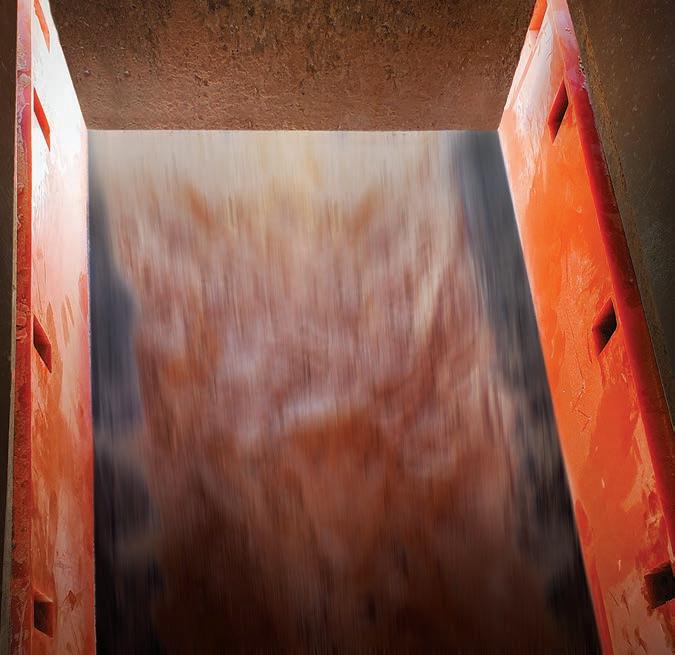
So, what can we do about supply chains? I have always felt the most palatable solution is for governments to issue offtakes with ESG requirements contained within those offtakes. Basically, they put all those problems on the producer. If you can have a project that com-

plies with the ESG, here is a government offtake, and what that government offtake does for you is that it gives you access to the state capital because you can get state loans from local banks.
An offtake is an instrument that you can trade against, but you must comply with these levels of ESG. It is similar, I suppose, to the fact that if you want to be able to sell a diesel vehicle in Canada, you have to comply to the emissions
requirements. That would be my mid-tolong-term solution.
In the 1950s and 1960s, tungsten was more valuable than gold. So, every man and his dog were out there prospecting. Some of the projects survived, and some did not. The projects from the 1980s are in areas of natural beauty. For instance, there is one in northern California amongst the redwoods. No one is ever
AUGUST 2023 CANADIAN MINING JOURNAL | 27
CONTINUED ON PAGE 28 ® C M Y CM MY CY CMY K 7-3_CMJad_insertV1.pdf 1 7/5/23 6:24 PM
going to be allowed to mine there, and you should not.
There are other projects that are up in the Arctic Circle in Canada. How can you compete in that environment against a Chinese producer? You cannot. So, I think it is a difficult situation for tungsten. There are mines in Africa and Mongolia, but these are artisanal mines that will require vast amounts of investment to become significant producers.
And then back to the ESG story, can you really comply? Jurisdictions in southern Europe have not issued any permits in years. In Canada, First Nations legislation is so complicated and confusing it has almost brought all new mines to a standstill. If you look at the building activity in Canada for mines, it is significantly diminished, and it is mainly because of the delays in the permitting and the delays because of the First Nations legislation.
You must have an impact benefit agreement (IBA) with the Indigenous or First Nations, and those negotiations take an exceedingly long time. Also, you must be involved in several environmental studies. Not every First Nation is business savvy. There is the Tahltan Nation, for example in B.C., which is a very business-savvy First Nation. They have their own business counsel, and it is really a pleasure for mining companies to work with them, but that is not the case everywhere else.
We can look at it as a glass half full or a glass half empty as to why the government did it [delays], but ultimately, they did, and they are not the only ones. In Portugal for example, they have not issued a mining permit in six years. It is the same in Spain. Even in South Korea where we are building the Sangdong mine, we are truly fortunate because that town was built for this mine. So, everyone in that town has a history with that mine, but they do not issue permits anywhere else. So, all governments say we must diversify, but we just do not want to do it here!
LB: It could potentially secure 10% to 15% of the world supply. If we open it up further and further, we will account for about 30% of non-Chinese supply, which is more than adequate in phase one. We financed it through KFW IPEX-Bank, with a traditional project finance loan, and that is unusual for a company of our size to be able to attract that type of financing. The project is a very robust tier one project. The independent engineers for the bank did a 2.5-year forensic due diligence, and they came to two conclusions: One, we are not as stupid as we look because all we know is tungsten, we do not know anything else, and two, they were extremely impressed with our operational approach. We converted this mine from an early 20th-century concept to an Equator Principles concept that is commercially viable in the 21st Century. And secondly, there is nothing else like this project within tungsten. The low grade is higher than most other projects. And the high grade is close to the highest on the planet. It is of extraordinary scale. We know of 20% of the deposit and there are more than 90 years of reserves right there.
Within 150 metres of our existing infrastructure, we have one of southeast Asia’s largest high-grade molybdenum deposits, and South Korea is the fourth largest importer of molybdenum. We were truly fortunate to be able to acquire Sangdong. It is the holy grail in our sector.
We were also fortunate through hard work to get a project loan from KFW IPEX-Bank because an environment of expensive money is normally the start of the death spiral of most junior mines.
The project is financed very affordably with possibly the best lender on the planet. Certainly, the most credible and the most prestigious. We started work later than people would have liked.
going to be in the top 5% of ESG compliant projects. It will be carbon neutral because all the power comes from nuclear power stations. It is automated on the surface, and it will be fully automated underground within three years of commissioning.
As KFW said, “it is in one of the most advanced mines in the world because you have an enormous digital infrastructure and career to capitalize on.” So, we are lucky to be able to be the operators of such a unique once in a lifetime opportunity.
CMJ: Finally, what sets Almonty Industries apart from other mining companies, in your opinion, and how does the future look like to you?
LB: We have a mine in Portugal that has been going on for 126 years. The bulk of the team are five-generation tungsten people. We know how to get tungsten out of the ground, and we know how to get some copper out of by-products.
Ultimately, tungsten is our thing, and it is a difficult metal to process. If you have not done it before, you should not do it because it will break you, as we have seen in many examples of people who have opened tungsten mines and then closed [them].
CMJ: Almonty is close to reopening the Almonty South Korea tungsten project (the Sangdong mine), which hosts one of the world’s largest tungsten deposits and can potentially produce a huge percentage of the world’s tungsten supply; can you please talk to us about this project and how Almonty got to this stage?
Currently, we are looking, as we have disclosed, to build a downstream plant in South Korea. It is the start of the first and it will be the only vertical transparent smelter in the world. The only one because the other vertical smelters are in Vietnam and China. So, it is really going to have an enormous impact on the tungsten market.
Ultimately, everyone just must bear with us, because the best cake is always the one that takes a little longer to bake, but it tastes great when you get it out of the oven. This is a work of art; this is
Within tungsten, we are different because we are considered the best operational team in the world. Even the Chinese have engaged us in the past to help them with environmental compliance. We have a long history within tungsten in all forms. And I think that distinguishes us from other mining companies. Other mining companies may have an engineer or a geologist who is a specialist in many fields, many minerals but a master of none. We are not specialists in many fields; we are only a master of one field, which is tungsten, and that has meant that we have been able to compete with China. It is why we were able to bring someone like KFW to finance the world’s biggest tungsten mine. Ultimately, we are the last man standing.
We have always looked to refine what we do and always been very aware that just because we are a Western supplier does not mean that we are entitled to a different price than our Chinese colleagues. We must be competitive. Otherwise, we have no right to survive. CMJ
28 | CANADIAN MINING JOURNAL www.canadianminingjournal.com
GLOBAL MINING
A Canadian success story in West Africa
Reporting on the Fortuna Silver Mines’ Séguéla mine visit

Invited by Fortuna Silver Mines, on June 4, 2023, I embarked on a trip to the beautiful West African country of Côte D’Ivoire to visit Fortuna’s new Séguéla gold mine in the north of the country. Twenty-six hours later, I arrived in Abidjan, and was accompanied by the most dedicated staff to my hotel in the city. The trip to visit the mine site started by a 2.5-hour helicopter ride. Upon arrival, the group was welcomed by Fortuna executives and staff and debriefed on the schedule of the visit, which started immediately by visiting the plant.

CANADIAN MINING JOURNAL | 29
TOP 40/MINE VISIT
By Tamer Elbokl, PhD
»
Canadian Mining Journal’s Editor in Chief, Dr. Tamer Elbokl in front of the processing plant.
TOP 40/MINE VISIT
Fortuna Silver Mines Inc. is a Canadian precious metals mining company with four operating mines and a development project in Argentina, Mexico, Peru, Côte d’Ivoire, and Burkina Faso. Fortuna produces gold and silver and improved its ranking on our Top 40 list (see pages 15 to 22 of this issue) from 31 in 2021 to 28 in 2022.
Flashback
In July 2021, Fortuna Silver Mines and Roxgold completed a combination to create a global premier growth-oriented intermediate gold and silver producer. Consequently, Fortuna inherited the Séguéla project, located 480 km northwest of Abidjan, when it acquired the Canadian gold miner. The deal resulted in Fortuna, a gold and silver producer with operating mines in Mexico, Peru, and Argentina, gaining a strong foothold in West Africa. According to Jorge A. Ganoza, president, CEO, and co-founder of Fortuna, “The business combination creates a low-cost intermediate gold and silver producer with four operating mines (at that time) and a permitted development project (Séguéla mine). The company will benefit from a robust exploration pipeline and expanded presence in the Americas and West Africa, two of the fastest growing precious metals producing regions.”
In September 2021, Fortuna made the decision to proceed with the construction of an open pit gold mine at Séguéla, with sustainability being an intrinsic part of the design, construction, and future operation of the project.

Location
The Séguéla mine is in the Worodougou region of the Woroba district, Côte d’Ivoire, approximately 480 km from Abidjan. From Séguéla, the property is accessed via 40 km of unsealed roads. The Séguéla mine operation permits combined cover an area of 62,000 hectares.

Exploration and reserves
Séguéla mine exhibits excellent grades, low operating costs, and good growth potential. Séguéla has compelling economics, with a nine-year mine life in reserves. The initial six years are expected to report 133,000 oz. of gold production annu-
30 | CANADIAN MINING JOURNAL www.canadianminingjournal.com
Table 1. Mineral reserves and resources
Mineral reserves – proven and probable Deposit Classification Thousand Au Au tonnes (g/t) (koz.) Antenna Probable 7,200 2.09 482 Koula Probable 1,200 6.46 243 Ancien Probable 1,300 4.88 211 Agouti Probable 1,200 2.20 88 Boulder Probable 1,100 1.77 64 Combined Proven + Probable 12,100 2.80 1,088 Mineral resources – measured and indicated Deposit Classification Thousand Au Au tonnes (g/t) (koz.) Antenna Indicated 2,097 1.55 104 Koula Indicated 213 6.24 43 Ancien Indicated 303 3.96 39 Agouti Indicated 388 1.96 24 Boulder Indicated 810 1.29 34 Sunbird Indicated 3,260 2.66 279 Combined Measured + Indicated 7,071 2.30 523 Mineral resources – inferred Deposit Classification Thousand Au Au tonnes (g/t) (koz.) Antenna Inferred 1,112 1.94 69 Koula Inferred 158 2.91 15 Ancien Inferred 35 10.21 11 Agouti Inferred 103 1.73 6 Boulder Inferred 81 1.17 3 Sunbird Inferred 4,219 3.73 506 Combined Inferred 5,708 3.33 610
SOURCE: FORTUNA SILVER MINES
Map of the mine location. CREDIT: FORTUNA SILVER MINES.
ally. With the total initial capital investment of US$173.5 million, the fast-tracked construction schedule was approximately 20 months and ramp-up to name plate capacity of 3,750 t/d is expected in the third quarter of 2023.
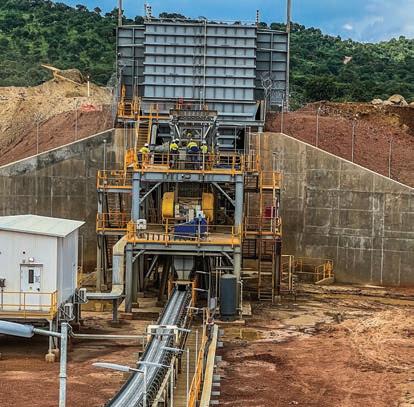

The mine is expected to produce between 60,000 to 75,000 oz. of gold in 2023 at an all-in sustaining cost of between US$880 and $1,080 per oz. of gold.
Mining activities at Séguéla include the simultaneous exploitation of the main Antenna deposit and the satellite deposits at Koula, Ancien, Agouti, Boulder, and most recently Sunbird, using open pit methods.
In 2022, Fortuna announced an inferred resource for the newly discovered Sunbird deposit which is not included in Séguéla’s current mine plan. This discovery is located just a couple of kilometres from the plant site. Table 1 shows the current mineral reserves and resources; numbers are likely to grow as Fortuna continues conducting exploration work. The Sunbird deposit is planned for conversion into mineral reserves by Dec. 2023.
The processing plant
The processing flowsheet, shown to us
during the pre-tour presentation, comprises conventional crushing, milling, gravity recovery, a carbon in leach (CIL) circuit, carbon elution, and a gold recovery circuit. Felix Asamoah, the metallurgy superintendent at Séguéla mine, started our plant tour by stating, “the process starts by running the raw material through the crusher. We have a simple crushing circuit with just one-stage crushing, and from there, the material is transported on the conveyor to the milling area. It is also a simple milling circuit.
NATURAL RESOURCES
Trusted.
Independent. Committed.
A SAG mill which is in closed circuit with cyclones and a gravity circuit.” The CIL circuit has seven tanks, each has a capacity of about 700 m3. The first tank is only for leaching; it is where the cyanide (NaCN) is added, and it starts dissolving the gold in the slurry. The six other tanks have activated carbon added into the cycle. While the cyanide is dissolving the gold, the activated carbon is absorbing the gold from the solution. Each equipment can be monitored from the control room, and there are selected process parameters that can be monitored from there in a single view. The carbon is recovered through the acid wash process/column to clean it from contaminants, then flown into an elution column. In the elution circuit, a solution that contains caustic soda (NaOH) and cyanide is run through the carbon bed to take the gold off the carbon into that solution. While the fresh, regenerated carbon is sent back to the CIL circuit, the solution is sent to the gold room through the ICR Electrowinning cells, which have positive and negative contacts, and the gold in the solution deposits on the cathode.
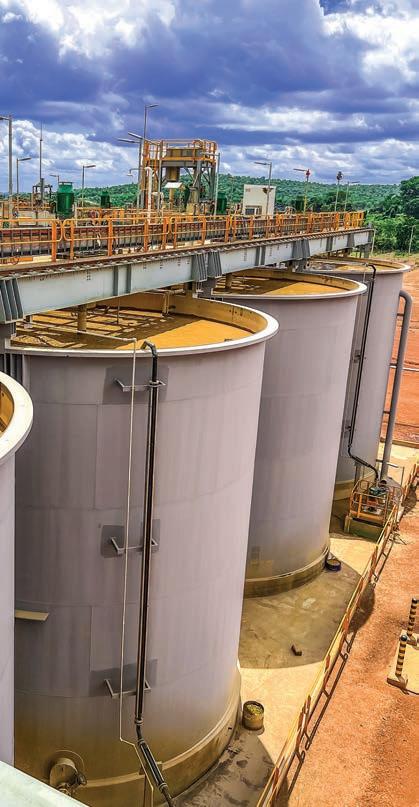
The gold pour
In May 2023, Séguéla poured its first gold on-time and on-budget, and consequently became Fortuna’s fifth operating mine.
CONTINUED ON PAGE 32
Delivering fit-for-purpose solutions across the entire mining life cycle
Our fit-for-purpose solutions encompass the skills of qualified geologists, geostaticians, analytical chemists, mineralogists, metallurgists, process engineers and mining engineers brought together to provide accurate and timely mineral and process evaluation services across the mining life cycle.

AUGUST 2023 CANADIAN MINING JOURNAL | 31
Far Left: A view of the CIL tanks.
Top: A side view of the mill.
Bottom: ROM bin and crushing circuit and conveyor belt leading to the mill feed. CREDIT: TAMER ELBOKL
SGS IS THE WORLD’S LEADING
INSPECTION AND CERTIFICATION COMPANY WWW.SGS.COM/NATURALRESOURCES NAM.NATURALRESOURCES@SGS.COM
TESTING,
TOP 40/MINE VISIT
We attended the second gold pour during our visit, as evident from the photo of the author of this article with a big smile holding a more than 700 oz. gold bar from the pour.
Tailings management
David Whittle, chief operating officer, West Africa, at Fortuna Silver, explained that the tailings storage facility is con-
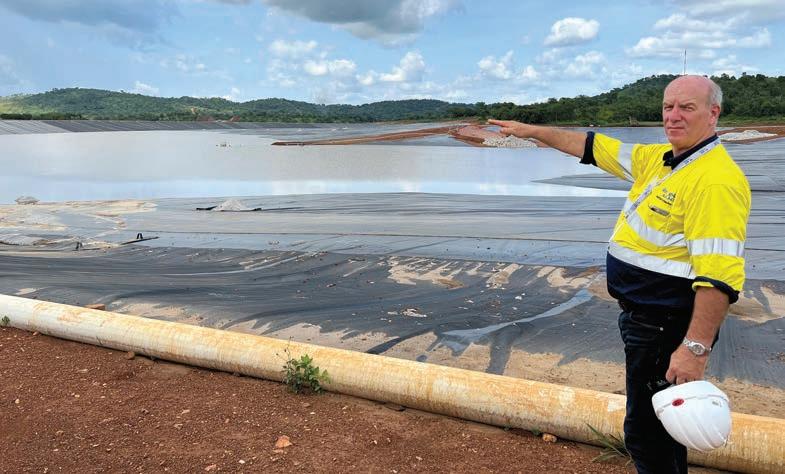
According to Neil Colbourne, general manager and the first operations employee to join Séguéla in the middle of construction, the EPC contractor is Australia’s Lycopodium, responsible for more than a dozen gold plants in West Africa since 2009, while the mining contractor is Mota-Engil, an internationally renowned Portuguese company. De Simone is the earthworks and civil contractor for Séguéla.
Superior industrial-grade protection
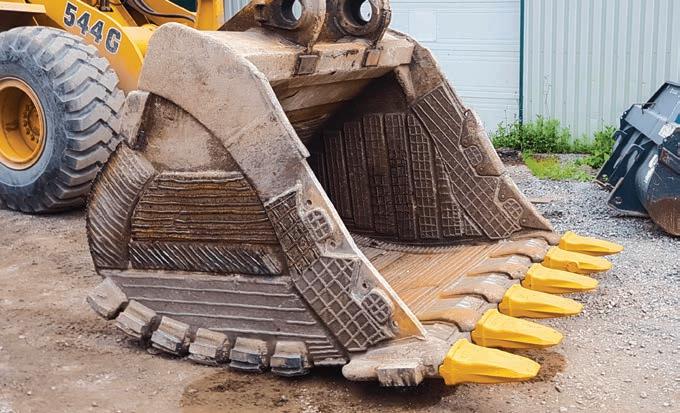
Soluroc designs and manufactures innovative wear solutions for industrial equipment.

Soluroc.comsales@Soluroc.com
Above: The second gold pour.
CREDIT: TAMER ELBOKL
Inset: Canadian Mining Journal’s Editor in Chief, Dr. Tamer Elbokl, happily holding a freshly poured gold bar from the second pour at Séguéla mine.
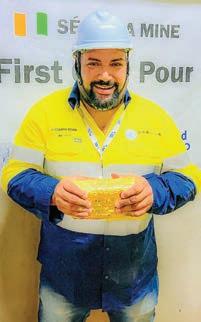
structed as a side-valley storage facility formed by two multi-zoned earth fill embankments, designed to accommodate 13 million tonnes of tailings, and built using the downstream construction methodology. Water storage dam (WSD) reserves are at levels above requirements, and the plan is for the dam to reach 18 metres in height.
Social responsibility and community relations
When it comes to community relations, Fortuna’s objectives are to build trust, manage expectations, and positively impact communities. “The villages of Tiéma, Kouégo, and Bangana, located several kilometers from the mine site, are the closest settlements. Trust and strong relationships established with the local communities are pivotal to the success of the project development and its upcoming operation,” said Carlos Baca, director of investor relations at Fortuna Silver Mines. “We have been building this trust and cultivating these relationships for over five years. In 2022, we employed 153 community members from local communities, and we also partnered with 10 local suppliers,” Baca added. CMJ
32 | CANADIAN MINING JOURNAL www.canadianminingjournal.com
David Whittle, chief operating officer, West Africa, at Fortuna Silver, showing the tailing storage facility (TSF) with a visible high-density polyethylene (HDPE) full lining and water storage dam (WSD).
CREDIT: TAMER ELBOKL
Zero carbon solutions for tomorrow’s clean technologies
Q&A with Eric Desaulniers, founder, president, and CEO of Nouveau Monde Graphite
Recently, I caught up with Eric Desaulniers, founder, president, and CEO of Nouveau Monde Graphite (NMG), during CIM 2023 in Montreal. We discussed the latest updates on NMG’s Matawinie mine operation. NMG is developing a turnkey natural graphite operation with competitive advantages due to its privileged location, vertical integration, cost structure, ESG credentials, and experienced team.
NMG owns a 100% interest in the Matawinie graphite property located in Saint-Michel-des-Saints, 150 km north of Montréal, Québec. The Matawinie mine project demonstrates exceptional potential due to its significant high-purity mineral reserve and low-cost operational model. Skilled workforce, high-quality infrastructure, including paved roads and hydroelectricity, as well as the dynamic regional business ecosystem provide an ideal environment for the development of the property.
CONTINUED ON PAGE 34
Phase-2 Matawinie mine and Bécancour battery material plant projects show attractive economics and robust operational parameters underpinned by a large mineral property, NMG’s proprietary technologies, and clean hydroelectricity powering its operations.
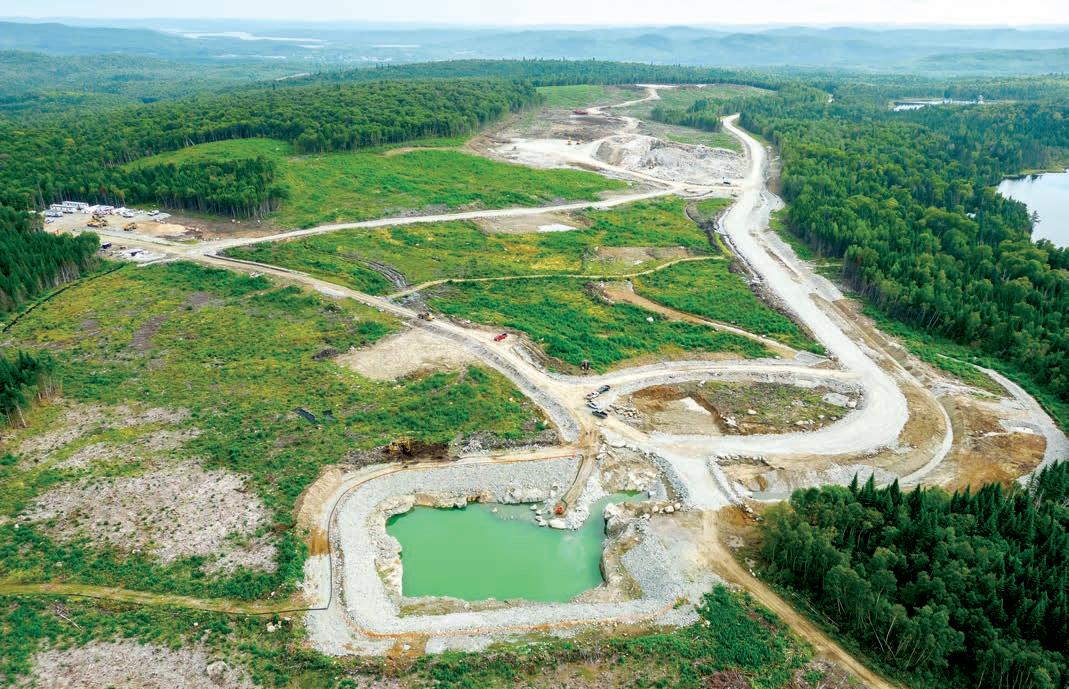 Eric Desaulniers, founder, president, and CEO of Nouveau Monde Graphite.
Eric Desaulniers, founder, president, and CEO of Nouveau Monde Graphite.
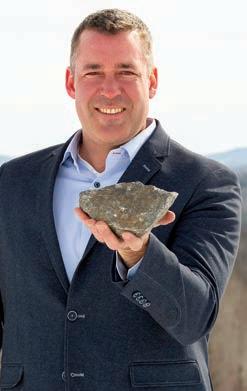
AUGUST 2023 CANADIAN MINING JOURNAL | 33
DECARBONIZATION
By Tamer Elbokl, PhD
Aerial view of the Matawinie mine under construction.
CREDIT: NMG
CREDIT: NMG
QNMG’s Matawinie mine is considered the world’s first all-electric open pit mine. How did you reach to this point?
AIt started with a bold vision; electrification was not as mainstream in 2017 as it is today, even less so in heavy industries. But we felt that going all-electric for our Matawinie mine was the way to go, environmentally to limit our GHG emissions and footprint, socially to rally the community behind a new mining development plus to reduce the sound level of our operations, and commercially to engage to battery/EV manufacturers and tap into consumers’ responsible purchasing desires.
Once we confirmed our intentions and validated the technical and financial viability through our bankable feasibility study (BFS), we focused on making it a reality by engaging with OEMs. We found in Caterpillar a stellar partner to help us bring our vision to reality. We signed a collaboration agreement in 2021 to map the journey for developing, testing, and producing Cat zero-exhaust emissions machines. Since then, technical teams have been working hard to advance electrification plans.
QRecently, Caterpillar and NMG strengthened their zero-exhaust emission collaboration through agreements for sourcing the Matawinie mine’s fleet and infrastructure, followed by an offtake MOU targeting
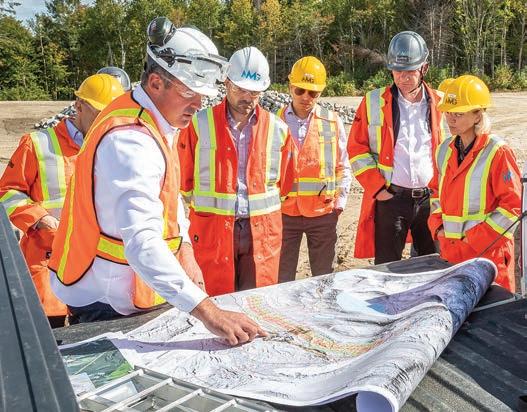
NMG’s battery materials. Can you please talk to us about that development? How were you able to build a business relationship with Caterpillar that eventually led to those key agreements?
ACaterpillar shared our enthusiasm for all-electric mining and was ready to commit to the challenge. We could not have found a better partner. They are providing us with a comprehensive solution, de-risking the adoption of new tech-

34 | CANADIAN MINING JOURNAL www.canadianminingjournal.com
DECARBONIZATION
Eric Desaulniers reviews map of the Matawinie deposit during a site tour. CREDIT: NMG
RICHWOOD BELT CLEANING SYSTEMS
Rely on Canadian Mining Journal 7 4 78 4 23.indd 1 4/13/23 2:07 PM
©Richwood 2023
nologies and optimizing operational excellence through integrated infrastructure. Our respective teams are working closely together – them visiting our site and us visiting their facilities – sharing plans and engaging to develop the best fleet and infrastructure. I was privileged to see their first battery electric 793 large mining truck at their Tucson Proving Ground in Arizona in February and see firsthand the depth of their expertise and commitment to bringing green, reliable, and performing solutions to the industry.
QHow does the offtake MOU help to supply carbonneutral graphite materials to Caterpillar for the development of its secure, resilient, and sustainable battery supply chain?
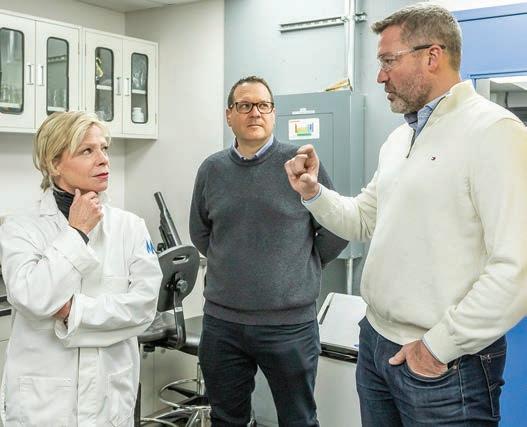
AWe are quite excited about that! Through this offtake MOU, we are looking to establish a full circular value chain! NMG would supply carbon-neutral graphite materials to Caterpillar for the development of its secure, resilient, and sustainable battery supply chain that would in turn serve to electrify heavy vehicles, including NMG’s Matawinie fleet, which would help to continue the cycle and support the electrification of vehicles from light-passenger to heavy industry segments!
QFinally, what are the next steps for NMG, especially within its goals for responsible mining?





AWe are looking to finalize definitive offtakes with our anchor customers and secure project financing in the coming months to bring our projects to FID/construction. The market is actively seeking local and green sources of graphite to meet the booming EV demand and more stringent IRA regulation for non-Chinese battery materials. We are focused on bringing our Matawinie mine and Bécancour battery material plant to commercial production to supply the North American market and drive greater sustainability into the sector. At Matawinie, environmental measures are underway to test and inform our future mining practices such as gradual site reclamation, innovation dry-stack co-disposal of tailings, and of course, electrification! CMJ

AUGUST 2023 CANADIAN MINING JOURNAL | 35 SERVICING THE ABRASION RESISTANCE MARKET SINCE 1988 www.sprs.ca Technocore® GMAW wire field version of "brazing" rope Top Performing Tungsten Carbide "brazing" rope Upgraded PTA hardfacing Multipurpose weld-on wear bars 1/2" thick rope overlay on 1" mild steel bars MEMBER OF EDMONTON, ALBERTA CANADA Contact Patrick@sprs.ca
Eric Desaulniers with employees at NMG’s Phase 1 facility. CREDIT: NMG
By Elizabeth Fillatre Miller
RECLAMATION OF FORMER JOHNNY MOUNTAIN MINE:
Seabridge Gold’s model for responsible exploration, mining, and Indigenous engagement
Having spent most of my career in mining, I firmly believe that our industry has a fundamental responsibility to mitigate the impacts of our activities and create a positive, enduring legacy in the regions where we operate.
In recent years, the environmental impact of mining has been under greater scrutiny, including scrutiny for future mines, current operating mines and particularly in relation to abandoned mine sites. As we focus our current efforts to act as responsible miners, we must not overlook the repercussions of past practices. Our industry has an obligation to address the environmental damage left
behind by these abandoned sites and proactively reclaim and restore these areas. Not only is it the right thing to do, but it also clearly demonstrates our unwavering commitment to sustainable practices, environmental stewardship and the well-being of the regions we operate in. By addressing our industry’s past, we have a unique opportunity to shape the future perception of our industry and inspire positive change.
About Iskut project
One example of this is the voluntary reclamation work Seabridge Gold, through its 100% owned subsidiary SnipGold
Corp., is doing at the Johnny Mountain mine (JMM), part of the Iskut project.
Located approximately 110 km northwest of Stewart, B.C., within Tahltan Territory, the Iskut project is a gold exploration project covering 29,436 hectares in the region’s famed Golden Triangle. Given its vast exploration potential Seabridge acquired the project through our acquisition of SnipGold in June 2016, which included the former JMM and Bronson Slope gold-copper deposit. The acquisition was driven by the vast exploration potential and project’s proximity to the KSM project. Seabridge’s KSM project is the world’s
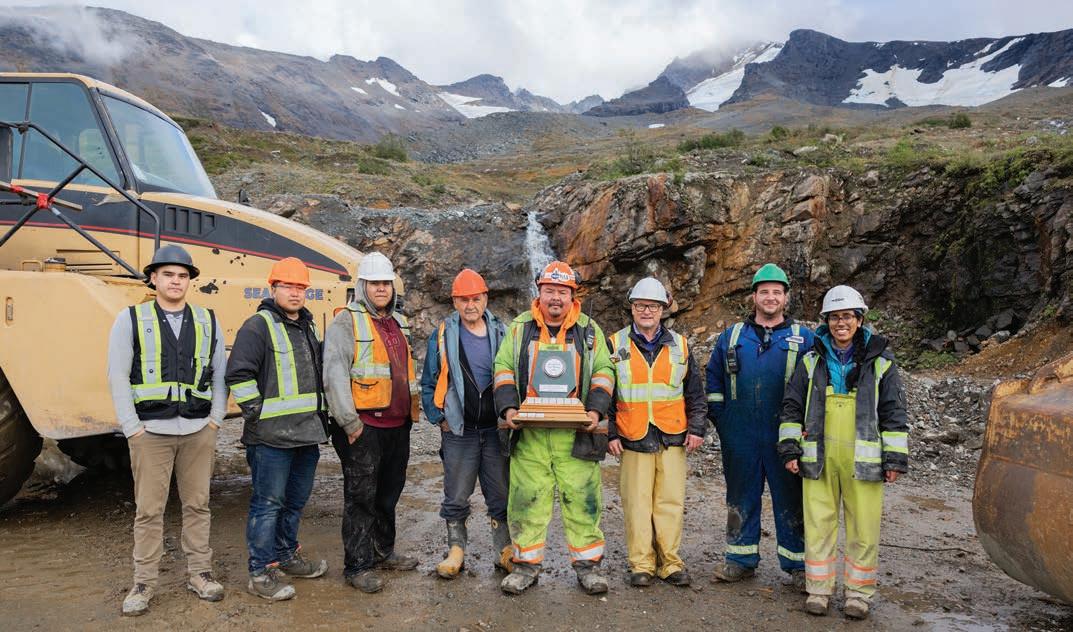
36 | CANADIAN MINING JOURNAL www.canadianminingjournal.com
RECLAMATION
Seabridge Gold Inc. is the recipient of the Jake McDonald Annual Mine Reclamation Award for its work at the past producing Johnny Mountain mine. CREDIT: SEABRIDGE GOLD
largest undeveloped gold and third-largest undeveloped copper project.

Voluntarily reclamation of Johnny Mountain mine

It’s an unfortunate reality that past mining activities have sometimes left behind a legacy of environmental degradation, including disturbed landscapes, abandoned equipment and unfulfilled environmental commitments. JMM was no exception. This remote, fly-in fly-out underground gold mine started commercial production on Nov. 1, 1988, and operated until September 1990. It experienced a brief re-opening from September to November 1993. Sporadic reclamation activities took place from 1999 to 2015, but when Seabridge acquired the project, it was apparent that the site was still burdened by significant reclamation liabilities and unresolved environmental orders from the B.C. Ministry of Environment. JMM’s operation involved numerous companies over the years, leading to a lack of cohesive and focused environmental management strategies. As a result, the mine was never properly closed or reclaimed. The historic infrastructure which remained on the JMM site included a 350-t/d processing plant, a fuel tank farm, an airstrip, 3.5 km of underground workings, an 11.5 hectares tailings impoundment facility, waste rock dumps, abandoned mechanical equipment, and multiple unauthorized landfills.
The state of disrepair and incomplete reclamation stands in stark contrast to how Seabridge views responsible mining. Hence, despite the substantial financial commitment, we will voluntarily close and reclaim the former mine site, restoring it to its original tundra habitat, according to the approved closure and reclamation plan.
Fostering partnership with Tahltan Nation Building relationships with Indigenous partners is essential for responsible resource development and advancing reconciliation. One remarkable aspect of our reclamation efforts is our collaboration with the Tahltan Nation, whose traditional territory encompasses the Iskut project area. Early on we recognized the value of engaging the Tahltan Nation as key partners in the reclamation process. After acquiring the Iskut property, our first step was to inform the Tahltan leadership about the project acquisition, our exploration plans for the site and our commitment to address the reclamation of the JMM site. Leveraging our established relationships with the Tahltan central government (TCG) and the Tahltan lands department through our work at the nearby KSM project, we invited the TCG to work with us on remediation.
We mutually agreed on five objectives for the remediation program:
> Develop a closure scenario that prevents impacts to surface and groundwater resources.
> Restore the natural appearance of the area through recontouring and revegeta-
tion of disturbed lands and anthropogenic landforms.
> Ensure that disturbances and re-developed landforms are stable from a longterm geotechnical and geochemical perspective.
> Re-vegetate the site through the development of self-sustaining natural successional processes.
> Develop landforms and vegetative cover that provide stable and productive wildlife habitats for species utilizing the area.
In partnership with the TCG, we established a comprehensive and detailed project execution plan (PEP) that guides the reclamation process, outlines clear expectations and provides details of on-the-ground reclamation activities. TCG is actively involved in the annual review process, where progress is measured, and additional information is added to the project databank and reclamation progress.
Furthermore, TCG thoroughly reviews and provides input on planned permit applications before they are submitted to regulatory agencies in British Columbia.
AUGUST 2023 CANADIAN MINING JOURNAL | 37
Area after demolishing the mill building. CREDIT: SEABRIDGE GOLD
ON PAGE 38
CONTINUED
Mill building before demolition. CREDIT: SEABRIDGE GOLD
SnipGold has demonstrated clear and transparent intentions of addressing historic mining activities at the former Johnny Mountain Mine site, located in Tahltan Territory. We are pleased to work with them collaboratively to support and further the reclamation programs at the site by providing services through Tahltan businesses and people. We are pleased that SnipGold is addressing this historic issue and look forward to this continued relationship with SnipGold.
– CHAD DAY, PRESIDENT, TAHLTAN CENTRAL GOVERNMENT
We have also collaboratively developed a framework for communications, environmental management, employment, and contracting to ensure the Tahltan Nation can continue to exercise its stewardship responsibilities and protect culturally sensitive areas. This includes an opportunity sharing agreement with TCG, which outlines operational expectations, engagement and dispute resolution processes, annual planning, hiring and contract opportunities.
By actively involving the Tahltan Nation in decision-making processes and incorporating their traditional knowledge, we ensure that the reclamation efforts not only meet regulatory standards but also align with Tahltan cultural and environmental values.
Overcoming challenges
Located in a sub-alpine plateau, JMM used to be a remote fly-in fly-out mine, making project entry and transportation of supplies particularly challenging. Additionally, the age and condition of the on-site equipment, which had not been used since the mine’s production 30 years ago, resulted in frequent breakdowns and the need for constant servicing. Recognizing the need to make the most of the brief, snow-free work season, from July to September (eight to 12 weeks), Seabridge decided to purchase some limited new equipment to assist with the reclamation project progress. Thanks to the expertise and dedication of our talented team, we are currently on track to meet our reclamation objectives by the targeted completion year of 2025.
Reclamation activities
Following the reclamation plan’s approval,
we assembled a qualified team made up of Seabridge employees and Tahltan contractors. In 2016, in collaboration with Tahltan Nation, we started to implement remediation programs that demonstrate tangible progress in restoring the JMM site to its original pre-mine conditions. Besides a general site clean-up, to date, we have:
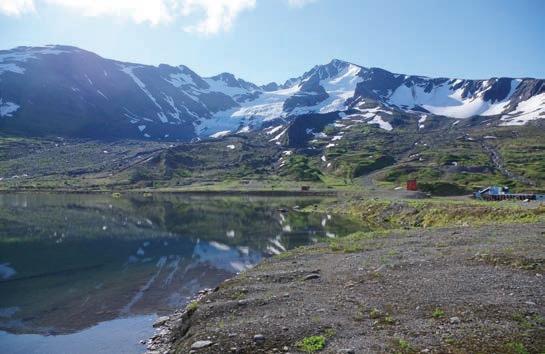
> Demolished the mill building
> Conducted multiple dam safety reviews, dam safety inspections and established an independent technical review board, and advanced closure engineering designs of the tailings impoundment facility
> Completed an aquatic characterization study, and detailed groundwater drilling program and site investigation of surface water, groundwater and soil conditions
> Removed hazardous materials including miscellaneous chemicals, batteries, mercury lights, and asbestos from the mill building and sent them offsite to a licensed hazardous waste disposal facility
> Cleaned and dismantled the fuel tank farm comprised of 23 26.500-litre fuel tanks and one 380,000-litre fuel tank which were left at the site
> Initiated on-site in situ hydrocarbon remediation of any hydrocarbon contaminated soils
> Closed and reclaimed three portals and five vent raises associated with the underground mine
> Removed contents from five unauthorized landfills and inert waste from across the site and moved them to the newly approved engineered landfill
> Moved potentially acid generating waste rock from underground portal pads to the tailings management facility to be stored underwater
> Completed detailed environmental
monitoring and permit compliance activities
Seabridge is proud of all that the team has accomplished. In 2022 we were grateful and humbled when those efforts were recognized with the prestigious Jake McDonald Annual Mine Reclamation Award, presented by the B.C. Technical and Research Committee on Reclamation.
Economic opportunities for Tahltan Nation
Our partnership with the Tahltan Nation extends beyond our commitment to environmental stewardship; it also prioritizes the creation of economic opportunities. To achieve this, we are working with the Tahltan Nation, Tahltan Nation Development Corp. and Tahltan businesses to engage their labour and services in reclamation efforts. Over 90% of the investments made by Seabridge at the Iskut project to date have been directed toward B.C. contractors, Tahltan employees, and businesses affiliated with the Tahltan Nation. This deliberate approach generates sustainable livelihoods within the Tahltan community, contributes to capacity building in the areas of reclamation and closure, and empowers them to actively participate in shaping the future of their ancestral lands. By nurturing this mutually beneficial relationship, we aim to exemplify how responsible exploration and mining can harmoniously coexist with the preservation of cultural heritage and the overall well-being of Indigenous communities.
Abandoned and former mine sites have strained relationships between the mining industry, local and Indigenous communities. It is our responsibility to adopt responsible exploration and mining practices that align with the values and aspirations of Indigenous and local communities.
The work our industry must do to rectify the mistakes of the past is far from complete. We hope that our JMM reclamation work serves as an inspiration for other mining and exploration companies to responsibly advance projects and take action to address legacy issues while charting a new path forward for our industry. CMJ
38 | CANADIAN MINING JOURNAL www.canadianminingjournal.com
Elizabeth Fillatre Miller is vice-president environment and social responsibility (ESR) at Seabridge Gold.
RECLAMATION
View of Iskut project. CREDIT: SEABRIDGE GOLD
ELECTRIFICATION IN MINING:
The new age of productivity and sustainability
Change is constant, and its pace seems to be ever accelerating. In the mining industry, it is widespread – from the types of deposits, mining methods, mining equipment, maintenance strategies – supported by the advancement of technology. The change that is currently having a major influence on everything we do in mining, however, is in how we value environmental and social governance. Sustainability is everyone’s responsibility, and the mining industry is no exception – in fact, mining could be a continued leader in ESG (environmental, social, and governance). There is no doubt that mining is necessary more than ever, and tackling the challenges associated with responsible mining are much easier when we work together.
The media is full of stories about EVs, electric developments, and new prototypes. In the industry, we have already seen the adoption of smaller scale electric vehicles, as well as mining operations utilizing existing electrification technologies including AC (alternating current) powered equipment and hybrid drivetrains.
In underground mining specifically, battery electric vehicles (BEVs) are already changing the game by eliminating diesel emissions and enabling operations to work at more extreme depths, all while reducing overall ventilation costs.
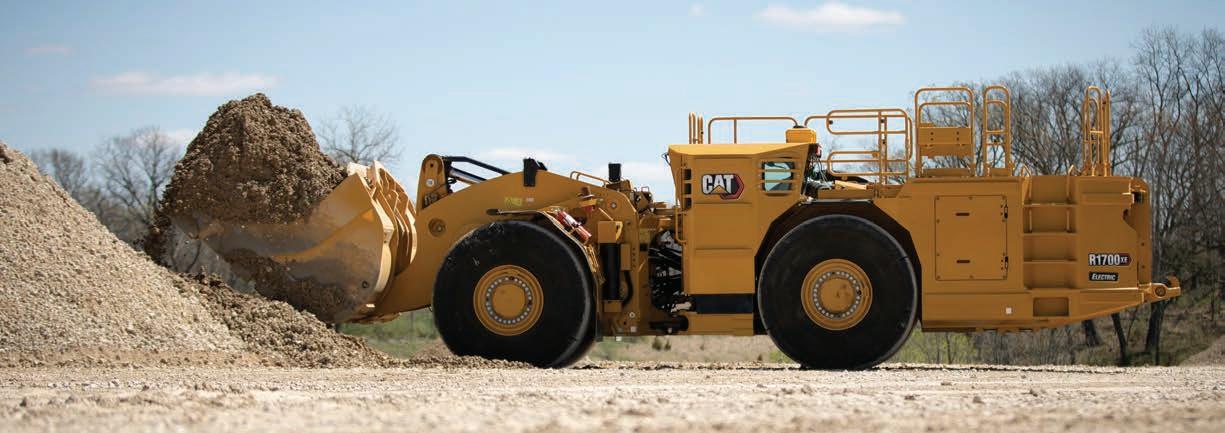
But let us think bigger, much bigger! Now, we are seeing innovation in battery electric technology in heavy duty mining trucks and machinery. Electrification in mining is coming, and it is crucial that mining operations can learn and implement the latest developments as new advancements in decarbonization technology evolve. With many years of mining experience, we are privileged to be part of the technology revolution in mining equipment. The possibilities with electrification are especially exciting. Our focus is on partnerships – working
with customers on finding solutions that fit their dynamic and challenging environments, all while aiming to keep pace with emissions reduction targets.
What has become clear early on is that no “one” solution will work for all. Each site may have its own unique carbon reduction system that fits its application and timeline. When putting advanced BEVsinto the most challenging conditions, it is important to collaborate throughout the entire process and share the findings – both the successes and the challenges. Change management and adapting to this innovative technology and equipment are equally important and learning to optimize and implement into it in your operation.
How do you bridge the gap?
Today, the mining industry is in a middle ground, executing the present operation while looking to the future. Before a total shift to net-zero mining with future technologies, it is critical that we make the best use of what we do have at our disposal to minimize our environmental
AUGUST 2023 CANADIAN MINING JOURNAL | 39
and
Barbar ELECTRIFICATION
By Cayce Kerr
Mitchell
“What has become clear early on is that no ‘one’ solution will work for all.”
In 2021, Caterpillar unveiled the R1700 XE battery electric LHD; a high productivity, zero-emission loader. CREDIT: FINNING CANADA
PAGE 40
CONTINUED ON
ELECTRIFICATION
footprint until the technology catches up. This is where partnerships and transparency are key, and it all starts with a conversation. It is about being realistic on where we are today, where we can get to tomorrow, and where we want to be in the future.
Realistically, many miners will not be able to implement electrification or decarbonization technologies for one reason or another – economic feasibility, timelines, application, etc. However, every operation can make the conscious effort to be a responsible miner. As the saying goes “you cannot improve what you do not measure.” The industry standard measure to focus on is carbon intensity – how many greenhouse gasses (GHG) were produced for every tonne of production?
Understanding how we can influence this metric is key. It is about striking a balance between keeping production as high as possible, while keeping GHG emissions as low as possible. So, what can you do today to improve carbon intensity? Some here and now solutions to bridge the gap include the following:
Rolling resistance: Reducing haul road rolling resistance has multiple benefits like boosting truck speed and production, which helps to cut fuel consumption and emissions, while reducing maintenance costs. It is important to establish a standard for haul roads, specifying road materials, ramp grades, super-elevations, and road crowns. Well-maintained haul roads not only lower carbon emissions but also decrease the overall cost per tonne.
Proper maintenance and machine specification: Following the recommended maintenance guidelines by original equipment manufacturers (OEMs), particularly for engines, are essential. This involves using the appropriate oils for each season, adhering to maintenance intervals, and updating equipment with the latest fuel mapping or software to enhance fuel efficiency.
Lower haul truck tare weight: Lowering the weight of haul trucks increases the target payload, that results in improved production and reduced fuel consumption. Some considerations include utilizing lightweight truck bodies, rims, and tires, diligent washing practices, and carefully considering machine specifications and add-ons.
Improve operational efficiency: To enhance operational efficiency, implementing autonomous haulage systems is highly advantageous. But, if you are not using such systems, having a structured hot change protocol during shift changes or breaks is important for minimizing idle time. Tracking idle time is also key for monitoring and improving overall efficiency.
Renewable diesel, biodiesel, and additives: Lower carbon fuels like renewable diesel, biodiesel, and additives are demonstrating the potential to lower overall emissions. Supply of large volumes of renewable diesel and biodiesel has been a concern in the past; however, suppliers are ramping up production for these emission-reduction diesel alternatives, making them a viable opportunity for mining operations.
Many miners and earthmovers are practicing these tips today. Focusing on these tips to improve carbon intensity will also have beneficial side effects on overall cost per tonne, and these tips are necessary steps to support future electrification machines – it is really a win-winwin scenario.
Walk before you run: This is not a rush to market Decarbonization is not a quick process. It is a “walk before you run” challenge, taken one piece of equipment at a time. A move to net-zero mining will have an enormous impact on operations, with lots to discover with how it will function in our operations. Starting small scale and through constant learning and adapting, we can accommodate the technology into our operations.
The investment and change management component of a transition to netzero can be significant, so that is why
thinking about the transition sooner, rather than later is important. Advanced planning and understanding how to efficiently implement these solutions, and when, will be critical. Some important considerations include the following:
> Mine plan and design: Specific focus on haul road length, width, and longevity to assess the feasibility of charging while moving.
> Fleet strategy: Understanding where your truck fleet is in its life cycle, how it lines up with current battery electric production timelines, and the trade-offs between replacing fleets versus rebuilding legacy fleets.
> Power infrastructure: As well as engaging early in conversations to understand what the operations peak power requirements will be, what access to this power will look like, and what impact this will have on the grid.
> Battery storage and recycling: Understanding the safety and regulations of battery storage and handling, determining a battery recycling strategy, and planning for the site infrastructure.
> Employee training and skills: Extensive training and technical knowledge is required across the workforce, including technicians, operators, management. This will represent a generational workforce shift.
> Mine regulations and safety: Partnering with regulatory entities to develop guidelines to ensure proper safety protocols are established and adhered to within mining operations.

Looking to the future
As we transition to sustainable mining, in sharing our visions and expectations between OEMs and mining operations, we can begin planning and developing the path to net-zero mining. The biggest opportunity today is starting the conversation, having transparent communication, and open sharing of knowledge. The future is coming faster than some might expect – equipment OEMs are prototyping and trialing their early learner electrified machines in the next few years, with production following shortly after. Electrification in mining is a growing industry, and it is forging great working partnerships for an exciting future. CMJ
Cayce Kerr is the director of mining marketing commercial, and Mitchell Barbar is industry manager at Finning Canada.
40 | CANADIAN MINING JOURNAL www.canadianminingjournal.com
Battery electric versions of the Caterpillar 793F haul trucks are in development. CREDIT: FINNING CANADA
By Raymond Ippersiel
Efficient shaft revitalization with remotecontrolled demolition equipment
The benefits of remote-controlled equipment have long been understood in mining applications. This technology increases safety in hazardous undertakings such as securing ore production. However, common mining machines tend to be cumbersome and highly specialized – a great tool for drilling in large, open areas, but not suited for all mining methods. Looking to apply mechanized solutions to ultra-deep, narrow-vein applications, some operations are employing a different kind of remote-controlled machine with a more sustainable approach that increases productivity while minimizing the cost of extraction. Compact, highly versatile remote-controlled demolition machines are uniquely suited for the demanding conditions deep underground. These compact machines offer exceptional power-to-weight ratios – on par with classic excavators three times their size – while an advanced three-part arm provides unrivaled range of motion for drilling, scaling, breaking, and bolting in any direction.
Technically, there is a lot more these flexible, hard-hitting machines can offer modern mining operations. In addition to ultra-deep applications, the power and versatility of remote-controlled demolition machines makes them an ideal solution for support tasks such as shaft revitalization and maintenance. Miners are finding that employing a demolition robot not only speeds up progress in these situations, but it also increases safety by taking on much of the physical work while keeping employees out of harm’s way.

Revitalization versatility
Mining techniques have changed over the years, and tonnes per man have decreased steadily since the 1960s. Notwithstanding technological innovations since then, the increased safety culture in present day practices is also a key factor. For many operations, returning old shafts to profitability with more modern equipment can revitalize assets and supplement production. However, getting these shafts in shape to meet modern safety regulations can be a complicated process requiring substantial work. Most are found in a very deteriorated state, littered with rubble, collapsed supports, and downed utilities, making the process of opening them up slow and dangerous.
In these types of situations, the versatility of remote-controlled demolition machines can minimize equipment and personnel requirements for highly efficient renovations. Armed with a suite of attachments, a demolition machine can perform almost any required task.
Commonly, a hydraulic hammer is used for scaling. Owing to the power these machines carry, they can also serve on a grizzly or for breaking oversized, in the place of task-dedicated machines like scalers or stationary mounts. When breaking is complete, operators can easily switch out attachments without requiring additional crew members. Various shears including grapple saws are available to remove sets and services and dismantle old supports, either steel or timber. Simply attach a bucket for material handling and mucking out. Secondary blasting, support
AUGUST 2023 CANADIAN MINING JOURNAL | 41
DEMOLITION
In shaft maintenance and revitalization operations, the versatility of remote-controlled demolition machines can minimize equipment and personnel requirements for highly efficient renovation. CREDIT: BROKK
»
units, and suspension can all be managed with drill attachments. A beam grapple can be used to help erect support ribs. Installing safety netting or wire mesh, as well as setting new services such as rails, pipes or cables, other types of grapples can be easily adapted for use. Dedicated sorting and demolition grapples with continuous rotation are tailor-made for loading, sorting, and separating debris. A grapple saw attachment replaces handheld equipment and leaves a nice, clean cut. This reduces handling and cuts the steel to premium scrap lengths safely while working off a Galloway or in underground structural demolitions.
Primary and secondary blasting and rock bolting can all be managed with the drill attachments while keeping the operators away from the face or the back. Cameras assist in line-ofsight, and full remote operation is commonly used for some ground conditions. Remote-controlled demolition machines are also used for retrievals in stopes, either tethered power, battery- or diesel-powered. The same basic machine has been adapted to carry a laser measuring device for immediate production data transfers to surface, pre and post blast. Finally, shotcrete attachments are also available.
More efficient maintenance
These attachments also make it easier for mines to maximize productivity for shaft and tunnel maintenance tasks. Replacing large crews with a small team and a remote-controlled demolition machine can result in significantly more efficient processes when digging safety niches and sumps, dealing safely with rock creep problems at a distance, or wherever there are hazardous conditions that warrant extreme safety precautions.
One operation was able to eliminate all manual labour in a shotcrete removal application and advance their maintenance schedule by months. They positioned the demolition machine on a platform that rotated around the core of a shaft boring machine. After the shotcrete was removed, they used the unit to pin and bolt new screening.
In addition to making shaft maintenance easier, demolition machines are increasing safety and efficiency for widening operations. They can be underhung from a Galloway stage, hammer, drill and blast, drill and split, and replace old clam buckets for mucking out.
The future of mining
With extensive equipment and attachment options available from innovative manufacturers, there is an opportunity to use demolition machines in about every high-risk, heavy-labour shaft maintenance situation.
With full-remote capability and instant data retrieval for maintenance and troubleshooting, demolition machines are ideally positioned to bring the industry into the modern era. Modern mining has many exciting challenges in store for the new generation of technologists who will need creative solutions to supply the world’s ever-growing demand for metals in support of green technologies and more. Working with remote-controlled demolition machine manufacturers to provide mechanized mining and maintenance solutions promises to improve productivity and ensure a safer, sustainable future operations. CMJ

42 | CANADIAN MINING JOURNAL www.canadianminingjournal.com
DEMOLITION Schedule today! 1-800-325-5993 procheck@haverniagara.ca haverniagara.com/procheck See how PROcheck can maximize your operation. CHECK YOUR PULSE. PROcheck is our signature, expert analysis beginning with our diagnostic tools. Pulse Vibration Analysis examines the health of any brand of vibrating screen, while our Pulse Impact Test prevents your screen from operating in resonance. HAVE R & BOECKE R NIAGAR A
Raymond Ippersiel is a training and application specialist for Brokk Inc.
MOBILE CRUSHING carves A PATH INTO MINING

When visiting a mine site, our eyes are drawn to the big equipment: primary gyratories, grinding mills, and the other core equipment that are well-known in the mining industry. Recently, we have seen a change in the dynamic where it is not just about stationary equipment. The flexibility of mobile crushing units has become a viable option for mines around the world.
Mobile crushing plants are often operated by mining contractors, providing crushing and screening services for the mine at a cost per tonne basis. This saves the mine CAPEX, allows for more predictability in OPEX, and releases limited resources and know-how to more valuable work at the mine. CONTINUED ON PAGE 44
AUGUST 2023 CANADIAN MINING JOURNAL | 43 By Metso staff CRUSHERS
Lokotrack LT330D mobile cone crusher is an all-electric hybrid cone crushing and screening plant with a three-deck dual slope screen and a patented centrifugal conveyor on the same chassis. CREDIT: METSO
CRUSHERS
“It is nothing new that mining contractors are crushing aggregates for mine road maintenance, tailing dams, stemming, to name few of the applications,” says Julius Makela, vice-president of mid-sized and mobile crushers at Metso.
What is new is that you see them more often crushing the ore for concentration plant. This is true, especially in small to medium size operations, such as lithium, gold, and silver. In higher volume operations like iron and copper ore, it is not that common to use mobile units. You will see them around crushing ore during maintenance breaks, as a backup, or when expanding production or when testing impact of different gradations to refining process.
One typical application is to have primary crushing in the pit to reduce and ease haulage, especially when combined with bulk ore sorting or when dealing with different ore grades and waste ore. Another application where you might find mobile crushing units is in underground operations. Mobile crushing units could provide a very flexible and cost-efficient solution

for tight and space restricted areas.
In the past, mobile crushing units were not as energy efficient as stationary units. This is now changing with an industrywide focus on sustainability.
“Sustainability, being so critical for mine operators, has forced them to think differently about the solutions they have on site. This has also forced OEMs to consider what we can do to support our customers in a unique way,” stated Julius.
Well-known in the industry are the Metso Lokotrack mobile crushing solutions. Originally developed in 1985, Lokotracks are now evolving to meet the needs of a mining duty application.
Most of the mining size mobile units are fully electric or hybrids, such as Metso Lokotrack LT130E and LT330D. Hybrid means that there is diesel engine onboard, which runs the generator. Crusher, conveyors, feeders, and screens are all electric driven, and hybrid units can be plugged into an external power grid when available. With onboard process control systems and remote monitoring, they are fully equipped


44 | CANADIAN MINING JOURNAL www.canadianminingjournal.com
Lokotrack LT330D
Lokotrack LT130E hybrid
mobile crushing plants.
The Lokotrack e-Power solutions give you twice the choice, with new job opportunities, cost savings, and ease of maintenance. Additionally, the solution has been tested, proven, and developed for decades.
“Fuel cost is getting higher and higher everyday. We have seen customers save up to 40% in fuel costs without sacrificing productivity, which they are very happy to see,” says Justin Ayotte, vice-president of sales and service for Canada at Metso.
Another advantage of the Lokotrack is that the design has been adapted to respect strict noise and dust emission regulations. This contributes to a safer work environment, while increasing the overall sustainability of the operation. So, electric power not only has the advantage cost efficiency, but also of being quiet, emission-free, and economical whenever the grid is available.
One may wonder why diesel engines are still needed where there is always electricity available at mine site. Mobile units and mining contractors are often the first equipment and operators you see around the new mine, even before the roads or power grid exist. Once the mine is running, they work in the pit or opening new deposits nearby. For those reasons, you need fully mobile, self-propelled equipment. When working in the same location(s) for longer times (e.g., when waste rock or ore is brought in by dump trucks), then typically, the power station is arranged by the mining company. This is done to reduce cost
CASE EXAMPLE: A mining contractor, operating at multiple mines in Sweden and Finland
Typical set-up at mine: Excavator, Metso LT130E, Jonsson L550, Metso LT330D, wheel loader.
Application 1: Processing waste/side rock from copper mine. Mining company is hauling feed material to three different locations. Crushed aggregates used for mine roads and other construction at mine.
Feed capacity around 6,000 t/d (approximately 20 hours effective crushing, two shifts). Medium hard, extremely stiff material. End products: – 32 mm (time on time, for base material), zero to 2 mm, 2 to12 mm, 12 to 20 mm (this is the core product, for stemming)
Application 2: LT130E only. Crushing ore for the concentration plant. Target to meet primary gyratory product curve to have proper feed for MP800 cone crusher. “Produce as much as you can.” This application is used when there is planned or unplanned shutdown of primary gyratory to keep concentration plant at full capacity.
Units are moved within a mine every two to three days. Mine has allocated three different crushing areas, two of them have fixed electricity. The contract period was only a few years at the time and multiple crushing locations, so mobile units were an obvious choice.

and save energy to be as sustainable as possible.
Mobility also helps to improve work safety and risk of oil spillages (or other operation-related risks) during maintenance, as mobile crushers can be tracked to a designated maintenance area. Such a maintenance area should include overhead cranes, proper working platforms or man lifters, tools, and oil handling equipment, just to name a few.
Overall, it is not a secret that mobile crushing units are making their way into mining and making an impact. They provide a flexible solution to an ever-changing industry that is also enabling even more sustainable mining. CMJ
AUGUST 2023 CANADIAN MINING JOURNAL | 45
Lokotrack LT130E hybrid mobile jaw crusher with e-Power is Metso’s largest standard primary crusher model with a 1,000 mm feed opening.
CREDIT: METSO
It is not a secret that mobile crushing units are making their way into mining and making an impact. They provide a flexible solution to an ever-changing industry that is also enabling even more sustainable mining.
By Lars Bräunling
Diagnosing screen media problems
Finding the best solution to common screening issues
Persistent problems with uptime and production quality can be frustrating. Aggregates and mining operations must work as quickly as they can to resolve issues and minimize losses from downtime and repairs. Common screening complications that operations face include contaminated piles, clogged screens, or lower-than-expected screen media life. Knowing how to diagnose problems and find the best fix can expedite the process.
Many of these problems have more than one solution. Operations first need to identify the issue and potential for future problems, then look into fixing them. Material issues such as blinding, pegging, and carryover require a fresh style of screen media. Screen media breakage problems may require an alternative type of screen media but often also an examination of the vibrating screen maintenance and the installation practices of the screen media.
First step: Identify the problem
While many problems are easily identifiable, it can be helpful to do a thorough evaluation of the process and look for any apparent screen media issues, in addition to the screen setup and equipment condition.
The easiest and most surefire way to identify problems and solutions is to work with an OEM-certified technician to complete a screening performance assessment. In this case, the expert is often the screen media manufacturer or dealer. Representatives are constantly
encountering operations with new problems, giving them valuable insight into solving common and unique issues. They also draw from a network of experts to help uncover solutions.
One key part of that assessment should be a vibration analysis conducted on the entire screen box. This technology is advancing to a point where simple-to-use sensors have no wires, work well with a smartphone, and do not require shutting down the equipment. The process serves a dual purpose. First, it gives insight into the screen box health and has the potential to help spot abnormalities unseen by the human eye that could develop into costly problems, such as premature screen media wear. The software also visualizes the setup of the machine, which plays a huge role in the performance that can be expected for each job.
Following a vibration analysis, step back and take a good look at the equipment. Examine the screen box and screen media for signs of wear or damage. Listen to the machine run to try to catch abnormalities or metallic sounds that could mean loose media, worn clamp bars or broken wires.
Look also at the crusher feed belt coming off the screen. This is a straightforward way to check whether saleable rock is being sent to the crusher or conveyor because the deck capacity was exceeded. It could be the result of blinding, pegging, poor open area, non-ideal vibration setup, or the wrong screen media configuration.

Another good indicator is the condition of screen media in the scrap pile.
Look at the underside of the spent screens to diagnose installation challenges. Black markings on the underside can show that the panels have moved and rubbed against machine supports, meaning they were not fixed in place like they should have been during proper installation. Shiny hooks are also a sign that screen media was loose and moving back and forth during operation.
Pegging, blinding, and carryover
It is no secret that operations regularly face issues with near- or odd-size material pegging screens, or fine sticky material blinding openings. The depleted open area can result in carryover or contamination of the screened product, making this a costly problem.
The primary solution for these issues is often the choice of screen media. If using woven wire, consider high-vibration wire bonded with polyurethane strips. This setup allows wires to move independently, effectively dislodging pegged or blinded openings, such as when screening material with heavy clay deposits. The extra vibration also improves overall stratification.
Operations can sometimes also benefit from polyurethane or rubber screen media, especially with tapered openings to force material through. The flexibility of this type of media helps reduce some screening issues, while the material itself is highly resistant to impact and abrasion.
If the pegging and blinding are solved, the carryover should be reduced or eliminated, as long as the machine is not
46 | CANADIAN MINING JOURNAL www.canadianminingjournal.com
SCREENS
overloaded. The improved stratification from high-vibration wire also greatly contributes to less carryover by increasing screening capacity.
Too much wear and early breakage
If the scrap pile is growing too quickly, then it may be time to look into a new screen media configuration. Ideally, the screen media should complement the three main phases of screening: the feed end, the middle of the deck, and the discharge end. Many operations use mixedscreen media for optimal results.
Materials of all sizes hit the deck at the first phase on the feed end. For that reason, this section should be able to handle large material impacting the deck, as well as fine particles. If the screen media in this area is wearing down or breaking too often, then consider something more durable. Depending on the application, this could mean thicker wires, steel plate, rubber or polyurethane, or polyurethane strips reinforcing key parts of the screen deck. The middle of the deck should still be durable but may feature a more open area to increase screening action. The discharge end features the most open area, because by this point any remain-
ing material should be near or oversize. Near-sized particles, for example, need the most tries to screen out successfully.
Some operations feature a reinforced media on the feed end and high-vibration wire screens – or self-cleaning screen media – on the rest of the deck. As mentioned above, the high-vibration media reduces common screening problems while maintaining an increased level of durability.
Another thing to consider is whether the problems may be caused by damaged equipment or improper installation. Proper tension is key for both the performance and the longevity of the screen media. Check tension weekly to ensure it is proper. Improper tension leads to early breakage.
Replace clamp bars that are getting thin or caving to prolong screen media life. Rubber or polyurethane-reinforced clamp bars are another option to improve longevity. Also, confirm there is a bolt in every hole to maximize durability. Make sure to purchase any replacement components, such as tension rails, from the OEM. Even the smallest deviation from the original design can lead to early screen media failure.
The counterpart of the clamp rails that contributes to proper tension is the crown curve of the deck. Tension cannot be achieved on a flat deck, and on a curved deck any deviation will leave the screen hanging in the air, leading to improper tension and breakage. Additionally, check that all the support bars and rubbers are in good condition and that the panels are laying firmly on the supports.
Work with an expert
Consider scheduling screen media maintenance and installation training either with the manufacturer or a local dealer. The benefit of a trained team is knowing the media is installed correctly and will have the longest wear life possible.
Work with an expert to conduct a thorough evaluation of the screening process to identify problems and the best solutions. Make sure to choose media that fit the application and the different phases of screening. Careful thought and selection can improve the bottom line and reduce headaches associated with downtime and lost profit. CMJ
Lars Bräunling is the director of product technology at Major.
Efficient Solutions for Bulk Material Handling
Wherever bulk material needs to go – across impassable terrain, rivers, highways and buildings – RopeCon® delivers without a hitch!
Long distances, capacities of up to 25,000 tonnes/hour, minimal environmental footprint, quiet operation plus low operating and maintenance costs: These are the features that convinced leading mining businesses.
doppelmayr-mts.com

AUGUST 2023 CANADIAN MINING JOURNAL | 47
CREDIT: MAJOR
RopeCon®
SCHEDULED MINE SHUTDOWN:
Prepping for maintenanceconveyor and upgrades
Scheduled mine shutdowns ensure optimum productivity and are also necessary from both a maintenance and safety standpoint. Some unwritten truths about shutdowns include the following: (1) there is never a “convenient” time, (2) it is impossible to be totally prepared, and (3) completing a shutdown with zero injuries equals success, regardless of how much was accomplished.
Demand and the need to control costs have pressured mine managers to extend periods between scheduled outages. The amount of time allotted for the outages has also come under pressure, often with many (sometimes conflicting) projects scheduled at once. Shutdowns are busy times, with in-house and contractor personnel working on tight timescales to complete an array of projects before the
scheduled restart date.
Budgets, timelines, and production quotas complicate mine shutdowns. Despite the best planning, pushing to stay under budget and ahead of time can put sub-optimal equipment back into service, resulting in early failure. The rush to get back into production can also quickly cascade into a workplace hazard causing “turnaround injuries,” or incidents that result from working too quickly under stringent (sometimes unrealistic) timelines.
In bulk handling, it is critical for conveyors and material flow systems to be brought online for production to resume. Choosing the correct contracting and servicing partner to perform maintenance and improvements on conveyors can be the key to mine shutdown success. For retrofits and new equipment installation, manufacturers may
supply a supervisor and use a subcontractor or in-house staff. This works well if both parties are experienced with the manufacturer’s equipment.

Common conveyor shutdown improvements
Operators are always looking to improve safety, efficiency, and production, and rightly so. Shutdowns are the optimum time for major retrofits and reconstructions to accomplish these goals.
Upgrading a single piece of equipment is not going lead to greater production; it usually requires a well-engineered solution that considers all related aspects of the operation. For example, increased production might involve redesigning a transfer chute to handle greater material volumes with different trajectories at faster speeds in a well-sealed environment to control wear and avoid additional
48 | CANADIAN MINING JOURNAL www.canadianminingjournal.com CONVEYORS
Shutdowns often require in-house personnel and contractors working together on tight time schedules. CREDIT: MARTIN ENGINEERING
spillage and dust. Ideally, any solution should also improve safety and reduce the amount of required maintenance.
The right solution involves a head-totail examination of material flow in the system, and consideration for appropriate changes in the capabilities of every component. This includes reviewing any equipment that supports a clean and well-centered belt return, and controls access for improved safety around the belt, such as guarding and emergency shutoffs.
Choosing servicers and contractors
The volume of work required for a smooth and timely shutdown usually exceeds the number of trained and experienced internal staff needed to complete all tasks, so there is always a need for expert services and contractors. For safety and efficiency purposes, it is wise to choose trusted providers who are familiar with the site and involve them early in the process to gather bids, discuss details, and obtain their expert input.
The terms “servicer” and “contractor” are sometimes used interchangeably, since servicers are contracted, but their roles can be specific. Servicers are technicians who perform specialized scheduled
tasks such as belt cleaner replacement or other conveyor maintenance. Contractors are often generalists supplying outside labour or specialists used for major equipment installation and construction, such as crane operators or structural engineers. However, during a shutdown, these may be the same person or company. In most cases, factory-trained technicians will have greater experience and expertise than in-house personnel or third-party workers, because they do not need to be trained on the nuances of products and installation techniques while on the job.
The goal should always be a project completed safely within the allotted time and budget. But that is not often the case. An unexpected obstacle that requires a pivot in the plan, a logistical issue with receiving the proper equipment, or a serious workplace injury can derail a timeline, resulting in extended downtime and increased costs.
The benefits of using the right specialized servicers during a shutdown are the following:
> Training and expertise –They can quickly get the job done, identify potential issues, and troubleshoot if necessary.
By R. Todd Swinderman and Daniel Marshall
Provide ample time for contractors to examine the proposed project, provide a bid, and prep worksites. CREDIT: MARTIN ENGINEERING
> Faster access to the supplier –They often have maintenance and installation documentation on hand and quick access to support from the supplier.
> Safety and certification –
Certifications are required for some specified tasks for safety purposes. Using an uncertified individual can increase the risk of injury and could be a liability issue.
> Equipment considerations –
Specialized contractors have the proper tools on hand to overcome obstacles.
> Engineering solutions –When unforeseen problems arise mid-project, experienced contractors can devise a safe workaround either onsite or by communicating with the equipment manufacturer’s engineering staff.
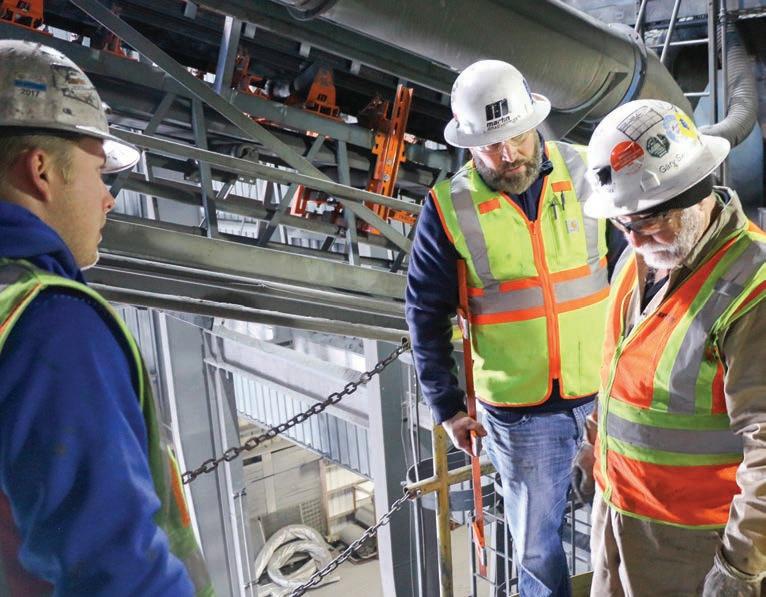
> Logistical considerations –
Servicers often work for or have a parts agreement with the equipment manufacturer, providing them quick access to replacement parts.
> Insurance – Specialty contractors typically carry specialized liability and workers compensation insurance, which provides better protection for the customer than general insurance coverage.
Elements of a mine shutdown
The planning should start directly following the previous shutdown, as it can take months to complete all the required steps. Scheduled shutdowns have the following five general (often complicated) steps:
1 Scope
2 Plan
3 Schedule
4 Execute
5 Evaluate
There are commonly unfinished projects remaining from the previous shutdown, and checklists always grow leading up to the next one. Often, tasks that seem independent of each other can be symptoms of a larger issue. For example, idler fouling, spillage issues, belt damage, and more might seem like independent problems, but could all stem from the same mistracking belt. Identifying the root cause, addressing it, then testing the solution can help reduce the overall scope of a shutdown.
AUGUST 2023 CANADIAN MINING JOURNAL | 49
CONTINUED ON PAGE 50
CONVEYORS

Once the primary areas of concern have been identified, prioritize the list by adding task labels to checklist items according to need: testing, repairing, replacing, deferring, or doing nothing.
Gathering bids
Detailed proposals are among the reasons why contractors and servicers are so valuable. Identify outside resources that can help complete items on the checklist and then solicit plans and bids, i.e., a request for quote (RFQ). These bids –delivered as a proposal or statement of work (SOW) – will offer a detailed account for materials, purchased components, contract services, and in-house labour.
Quotes for materials should consider lead time not only for the delivery, but also for the secondary operations such as preparatory engineering, electrical installation, or component fabrication. When the RFQ is issued, ensure that all necessary specifications for purchased components are provided. Of the four areas requiring hard quotes, accurate estimates on contracted labour can be the most difficult to obtain.
Any potential suppliers should review the scope, specifications, drawings, and photographs to note any exceptions or revisions that could be required as the job progresses. The project manager will also need to discuss direct labour with various resources within the company to outline both requirements and duration. The most accurate method to accomplish the estimate is to break the work into individual tasks, assess for each task and then summarize to generate the total.
Once the checklist has been prioritized and categorized, and contractors have provided their bids and requirements, estimate the time for each task and create an overall timeline. This may change during the planning and scheduling phase, but it provides a baseline to work from.
Planning a mine shutdown
Here is where the budget comes in. Once the scope, specifications, and timeline have been established, operators find that a substantial portion of planning has already been accomplished. However, sign-off is needed on the bids, which can take time. Be aware that each SOW may have a purchase order (PO), and once that is signed, the mine has committed to the provisions on the SOW.
A PO contains a payment schedule
with an upfront payment before the shutdown begins to complete material orders, confirm commitments to sub-contractors to secure their schedule, etc. Early project delivery requires a careful review of the entire supply chain, including labour requirements and site conditions regarding access and storage.
When planning, be aware of weather, holidays, pending labour contracts and compliance (permitting) issues during the closure period. All of these can bring a project to a grinding halt.
This is also the phase when key performance indicators (KPIs) are set for each project. These are metrics that indicate the performance and measures of success of each project involved in the shutdown. It is important to keep KPIs realistic, as they will later provide valuable data in the evaluation phase. Choosing to install modern automated equipment and monitoring technology connected to logistical software and mobile apps can provide critical data and help with ongoing equipment condition and system efficiency monitoring and reporting.
Scheduling a mine shutdown
When designs are finalized for components and subassemblies, the handoff between design and manufacturing must take place. The schedule, scope, and specifications should be reviewed by the project manager with all of those involved in the supply of the project components and subassemblies. After a project is underway is not the time to experiment with new vendors.
As materials, components, and subas-
semblies are delivered, they need to be inventoried and inspected. To avoid project delays, vendors need to be informed immediately of any shortages or nonconforming items and the intended resolution determined. Material shrinkage (through damage or pilferage) is a concern in many sites the world over and can affect both project cost and schedule.
Scheduling and safety
The scheduling process is a suitable time to ensure all the required safety protocols and equipment are clearly understood by everyone involved in the shutdown. Ensure that proper certifications are up-to-date and that any specialized equipment is available, lockout/tagout procedures are explicit and followed religiously, and all contractors certified with the appropriate health and safety authorities.
Underestimating timelines for projects can rush the work and drastically erode safety. Several different projects overlapping in the same area can also become a major safety concern and must be avoided.
Execution
The project manager (PM) is responsible for controlling all work produced within the project scope. The PM must watch for (and carefully control) any changes in scope, commonly called “scope creep.” Changes for any reason must be documented by a “change order” that will normally also require a contract revision or addendum to ensure validity. Scope creep can quickly erode both the project budget and schedule and is one of the primary reasons for extending downtime.
Sometimes internal employees (direct labour) will overlook safety needs when planning shutdowns, because they work at the mine every day and are familiar with the hazards that are present during operations. Most projects that are undertaken during a mine shutdown are considered “non-routine tasks” with “non-routine safety hazards.” These are projects that are out of the normal operations for the mine and should be approached with prescribed safety protocols.
Evaluation of a mine shutdown
Step-by-step instructions should be provided for both start-up and adjustment procedures. Before testing installed equipment, the project manager should
50 | CANADIAN MINING JOURNAL www.canadianminingjournal.com
An assessment of the safety needs for each project ensures that all staff understand the requirements. CREDIT: MARTIN ENGINEERING
ensure that the start-up checklist is reviewed, and all components and systems are thoroughly inspected and adjusted. This includes visually inspecting all moving equipment to confirm that all components are performing as anticipated. After initial testing of the new equipment, check performance by loading the conveyor and watching it run, then making final adjustments as needed.
This phase of the project will utilize the pre-defined KPIs to measure the success of the solution. Evaluation regarding the performance of the system should be ongoing to ensure that it meets or exceeds expectations measured against the initial requirements in the scope and specifications phase of the project.
An important part of the evaluation phase is also measuring the ROI (return on investment) for each project. This will often inform budgets moving forward and could serve to raise budgets in future shutdowns to deliver greater improvements.
Determining mine shutdown ROI
Contractor proposals often include estimated ROI but calculating it after the fact using KPIs is important. The goal is to get
Data Used in ROI Calculations
the payback period as close to (or under) one year as possible (Table 1). Keep in mind that less expensive equipment which might indicate a quicker ROI is often more costly over the long term. Categorize all probable causes of increased costs (e.g., maintenance labour, downtime, production loss, and extra equipment costs) and then determine the costs associated with each category. The true measure of the expense is the “life cycle cost,” not simply the purchase price.
ROI Conversions
For example, calculating ROI to upgrade a belt cleaner begins with identifying the challenges associated with it. Likely, one category will be spillage from carry back. Some of the common costs associated with spillage are cleanup time/labour, low air quality, safety (e.g., lockout/tagout and personal protective equipment), replacement parts (fouled rollers and machinery), and unscheduled downtime (Table 2). There are resources available that help build a compelling case for projects and upgrades that include both direct and indirect costs such as safety.
Data Units
Administrative/Operating
Cost of compliance: record keeping and reporting currency
Health and liability insurance premiums increase currency
Reduced life of equipment currency
Safety/environmental fines currency
Legal costs currency
Energy costs
Waste disposal costs currency
Production
Throughput: per hour, day, week, or month tonnes (st)
Production time hours
Cost per tonne of bulk material currency/tonne (st)
Cost of downtime currency/hour
Cleanup manual (1 tonne per hour is average) labour cost/hour
Cleanup machine (5 tonnes per hour is average) labour and machine cost/hour
Lost product due to dust and spillage 0.5% to 3% of production rate is typical
Safety
Cost of recordable incident currency
Cost of lost-time incident currency
Maintenance
New installation: Estimated cost for labour and materials currency
Adjustment: Estimated labour cost per adjustment currency
Replacement parts: Cost of parts and labour currency
Equipment wear: Cost of belt and wear-resistant materials currency
Installing only a portion of a project to meet the budget or using lower quality equipment to save costs does not necessarily translate to faster ROI. Often, half a solution does not equal half the savings. Staying with the example above, lower quality equipment might only clean 80% of material from the belt and deliver a shorter service life before unscheduled downtime starts all over again due to dust and spillage. Higher quality equipment with proven performance may carry a higher purchase price with a slightly extended ROI, but the cost is justified over the long term. It is recommended to review equipment specs, examine the materials of construction, and evaluate case studies from similar applications prior to purchase.
Conclusion
Generally, planning for a mine shutdown is not the task of a single individual but a co-ordinated effort between assigned project managers, supervisors, operations managers, contractors, and partners (e.g., equipment manufacturers and contractors). The key component is effective communication throughout.
Relying on the expertise of internal staff and contractors who have experienced similar shutdowns is an excellent step toward success. By thoroughly following the steps described, maintenance managers will have a good starting point from which to deliver a successful shutdown. Skipping any steps may result in more unanticipated complications that could extend downtime and reduce overall efficiency. Allowing the time for projects to be completed in a safe, systematic, and compliant manner results in fewer injuries and better performance of installed equipment over the long term.
CMJ
AUGUST 2023 CANADIAN MINING JOURNAL | 51
R. Todd Swinderman, P.E., is CEO emeritus, Martin Engineering, and Daniel Marshall is a process engineer at Martin Engineering.
ROI Payback Payback years Months 10% 10.0 120.0 20% 5.0 60.0 30$ 3.3 40.0 40% 2.5 30.0 50% 2.0 24.0 60% 1.7 20.0 70% 1.4 17.1 80% 1.3 15.00 90% 1.1 13.3 100% 1.0 12.0
Table 1. ROI payback over the specified time.
Table 2. ROI categories for a belt cleaner replacement.
By Dan Baxter
Essential considerations in belt conveyor design
With an unprecedented demand for raw minerals, belt conveyors are more critical to the mining industry than ever before; from transporting material over rough terrain, to delivering product to loadout and every stop in between, belt conveyors keep minerals moving from mine to market.

Troughed belt conveyors serve as the basis of all handling systems, thanks to their flexibility, opportunity for customization, and the many settings in which they can be applied. However, the harsh operating conditions, heightened risks, increasingly high-value products, and often remote locales associated with the mining industry mean that standard conveyor designs are insufficient. For a safe, reliable, and efficient conveyor system, producers must take several factors into consideration during the design stages to achieve a successful result.
Priority 1: Safe operation
Depending on the site location, different
bodies may oversee safety regulations, but maximizing safety is always a top priority. By utilizing conveyors, facility managers are already improving safety by reducing the need for manual transport, but the inclusion or reinforcement of a few additional components can further bolster site safety.
Guarding – Guarding is essential to any operation, no matter the industry, protecting workers from moving parts and pinch points. The heavy loads and high torque associated with mining conveyors makes guarding even more important in these settings. For these reasons, many producers choose to go beyond the minimum requirements for guarding, incorporating additional guarding where appropriate and ensuring guarding is made of heavy-duty materials that can withstand any potential impact.
Additional protection such as the use of closed-end housing bearings or idler guards that act as a catch basket (to protect
employees from a falling idler in the event of a failure) can also be incorporated.
Emergency shut-offs – Emergency pullcord switches should be included at regular intervals along the length of the conveyor and should include a pull-cord which runs the entire length of the conveyor.
Training – Comprehensive employee training on both operation and maintenance is critical to minimizing risks, as well as eliminating unnecessary humanequipment interaction.
Maintenance – Conveyor systems must be regularly inspected and maintained per the OEM’s recommendations. Early identification of issues typically allows them to be addressed before they can escalate into a major safety hazard. Regular inspection and maintenance are also imperative to maximizing equipment service life and efficiency.
52 | CANADIAN MINING JOURNAL www.canadianminingjournal.com
CONVEYORS
Belt conveyors with weather covers. CREDIT: FEECO INTERNATIONAL
Fugitive dust control – Fugitive dust (or other material) control measures are necessary to mitigate the many hazards associated with dust. A buildup of fugitive material is often the cause of trips, slips, and falls, as well as failed components and even premature equipment failure.
For these reasons, skirtboards are often added at loading points to prevent fugitive material from escaping. Dust pick-off points can also be incorporated, allowing fugitive dust to be captured.

Priority 2: Reliability
A stalled operation can quickly incur extensive costs in lost productivity (not to mention maintenance costs). Further, remote mine sites can often mean weeks of waiting on a repair or replacement component, making reliability a top priority.
Conveyor reliability is dependent upon a number of factors. Most notably the following:



Build quality – Mine-duty conveyors require heavy-duty components and rugged materials of construction. This might also include the use of special cover compounds, galvanization, or other treatments to protect structural components from the elements and fugitive material.
Wear liners such as UHMW, Tivar, or abrasion-resistant steel are also often incorporated.

Material characteristics such as bulk density, moisture content, particle size distribution, corrosivity, abrasiveness, and more must all be factored into the design and selection of components.

Maintenance – Even the most well-designed conveyor cannot remain reliable without proper maintenance. Pre-emptively replacing worn components not only helps to prevent unexpected downtime, but it also contributes to a safe working environment. Keeping a comprehensive inventory of spare parts also helps to minimize unnecessary downtime.
In the above photo of a conveyor head section, for example, the guarding is protecting workers from high-speed sheaves and V-belts. These should be regularly inspected and replaced as needed to avoid a failure. The head pulley cleaners, pictured in orange, also require inspection for wear, as well as regular adjustment for proper tension. A replacement blade should always be kept on site. The gear reducer, shown below the motor, also has routine maintenance requirements, including regular oil changes.
Automation – An advanced automation and controls system can be a major help, not only in making start-ups and shutdowns more seamless and reducing wear on motors, but also in identifying potential issues such as a worn bearing.
Redundancy – In cases where unexpected downtime simply is not an option, building redundancy into the system with capital spares may be a fitting option. Similarly, redundant control systems can be used to ensure that the conveyor can be safely stopped or controlled in the event of a control systems failure.
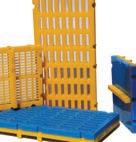

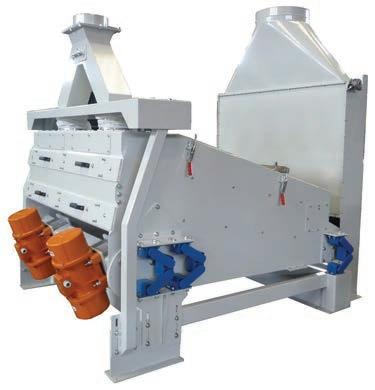
Priority 3: Efficiency
As technologies advance and we strive to maximize available resources, the importance of efficiency continues to grow, with even slight inefficiencies becoming less and less tolerable. An efficient conveyor maximizes throughput, minimizes downtime, increasing profitability.
To optimize a conveyor system for efficiency, engineers must carefully balance several factors in the initial design.

Belt speed – Belt speed must be configured according to operational priorities; it

AUGUST 2023 CANADIAN MINING JOURNAL | 53
CONTINUED ON PAGE 54 www.rosta.com – info.canada@rosta.com ROSTA Canada ROSTA AB ROSTA SE ROSTA MB Efficient Solutions for Mining & Quarrying WS 85 PANELS TEMA ISENMANN has your solutions for screening and wear life! BOLTDOWN & TENSION PANELS PIN & LEG PANELS WS 2.10 MAGNETIC WEAR LINERS U.S. Patent No. 8,267,791 40 Years’ experience in polyurethane screening and industry leading wear lining innovations. Screening Solutions: • WS85 Open Cast Modular Panels 30 to 100mm thick, 1'x1'; 1'x2' & 1'x4' • Injection Molded 1'x1' Modular Panels 30 to 50mm thick, self-relieving apertures to reduce pegging & blinding • TeePeeTM 1'x 1' Modular Panels High open area optimized for De-watering • Bolt-down & Side Tensioned Panels • Flexathon Non-pegging Panels WS 2.10 Wear Liner Solutions: • Quick-install & change out • Apply to any steel surface • NO: Bolts, Glue or Welding • Used in chutes & vibratory equipment TEMA ISENMANN Call 859-252-0613 sales@temaisenmann.com | temaisenmann.com ©2021 TEMA ISENMANN, INC. ALL RIGHTS RESERVED
TEEPEE TM PANELS
might be tempting to maximize belt speed, but this can increase wear and tear on components, while also requiring more energy to operate. Too slow, however, and belt speed can limit throughput.
The optimal belt speed depends on the specific requirements of the mining operation, including the type of material being transported, the distance and elevation of the conveyor, and the capacity of the conveyor system.
Belt width – Likewise, belt width is also a balancing act. A wider belt can increase throughput by allowing more material to be transported at once, but a narrower belt can be more efficient for transporting smaller amounts of material. In either setting, it is important to ensure that the width of the belt is compatible with the rest of the conveyor system, including the size of the rollers and other components.
Idler size and spacing – Idlers, typically CEMA D or CEMA E, should be spaced to minimize conveyor belt sag without incorporating an excessive number of

idlers. Idlers should also be sized to minimize friction between the belt and rollers to reduce unnecessary wear and tear.
Pulleys – Pulleys should be designated as heavy-duty, with mine-duty or engineered class offering more rugged options.
Loading – Loading also plays an important role in the efficiency of a conveyor system. The loading area should be designed to evenly distribute material on the center of the belt. The incorporation of a belt feeder, which meters material onto the belt from a bin or hopper is often essential in this setting.
The design of the loading area must also consider the velocity at which material will hit the belt and the size of the material. Additional components such as an impact bed may be necessary to minimize belt wear.
Drive assembly – The drive assembly is another important consideration in the overall efficiency of a conveyor. Depending on whether the system will be started
with a full load, fluid couplings or a softstart package may be necessary to reduce stress on the motor and avoid unnecessary energy costs.
Variable frequency drives (VPFs) are also often essential in the mining industry, allowing operators to promote a smoother start-up and shutdown of the system, again minimizing energy requirements and stress on the motor.

Concluding remarks
As moving minerals from mine to market as efficiently as possible becomes increasingly important, mineral producers are continuing to rely on belt conveyors to keep their operations running smoothly.
The unique challenges associated with handling minerals and ores, however, demand a tailored solution beyond the standard. Mine-duty conveyors must prioritize safety, reliability, and efficiency, with several options available to meet these demands in each category. CMJ
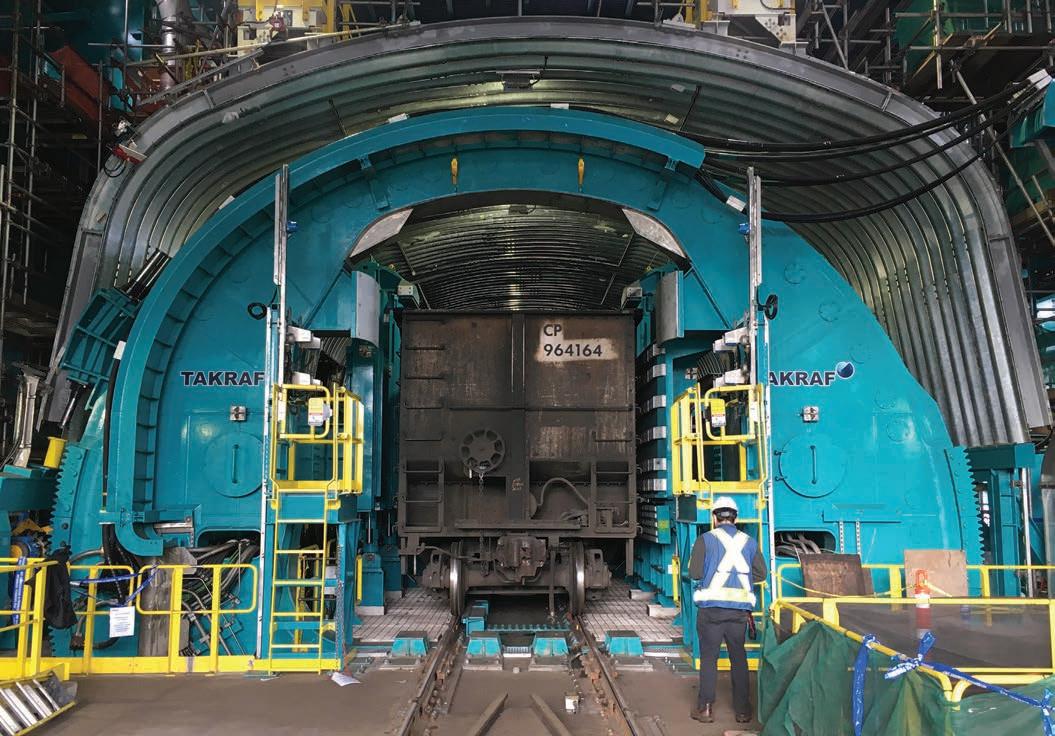
54 | CANADIAN MINING JOURNAL www.canadianminingjournal.com
Design, fabrication and supply of a wide-range of wagon unloading systems and equipment. Scan the QR-code to learn more! Your partner for: Railcar dumper systems Innovation out of traditionIt pays to talk to a specialist!
MAINTENANCE
a 7,200
TAKRAF
www.takraf.com Picture shows
t/h
tandem rotary railcar dumper (wagon tippler) in North America.
Dan Baxter is material handling sales engineer at FEECO International.
Clean mining
Various projections show that the demand for critical minerals such as copper, nickel, and lithium, will increase significantly in the next five to 10 years. In the case of copper, this is due not only to the future growth in the demand for electricity due to the development of global economies, but also to the greater use of this metal in projects and technologies that are being developed to have access to cleaner energies and reduce carbon dioxide (CO2) emissions.
According to Wood Mackenzie, a consultancy, it is estimated that under the 1.5 accelerated energy transition (AET) scenario, the additional volume of primary copper that will be required is 9.7 million tonnes. This additional demand is equivalent to almost a third of the current refined copper consumption. Meeting this demand will be a challenge because even if the current primary production rate were to be maintained and recycling rates improved, it would not be possible to meet the expected demand. However, the scenario is even more worrisome, since it is becoming more complicated and time-consuming to develop mining projects.
According to another consultancy CRU, the development of a new open pit copper project may take more than a decade. On the other hand, many of these projects are located in places with social or political complexities or limited access to water, energy, qualified technical personnel, and infratructure to operate them. The combination of these factors could jeopardize the development of greenfield projects that could help mitigate the potential supply crisis of this metal.
In addition, there are also technical challenges to solve, for example it is known that as the years go by, the deposits become poorer; some time ago the Chilean Copper Commission (Cochilco) published that between 2000 and 2016 the average
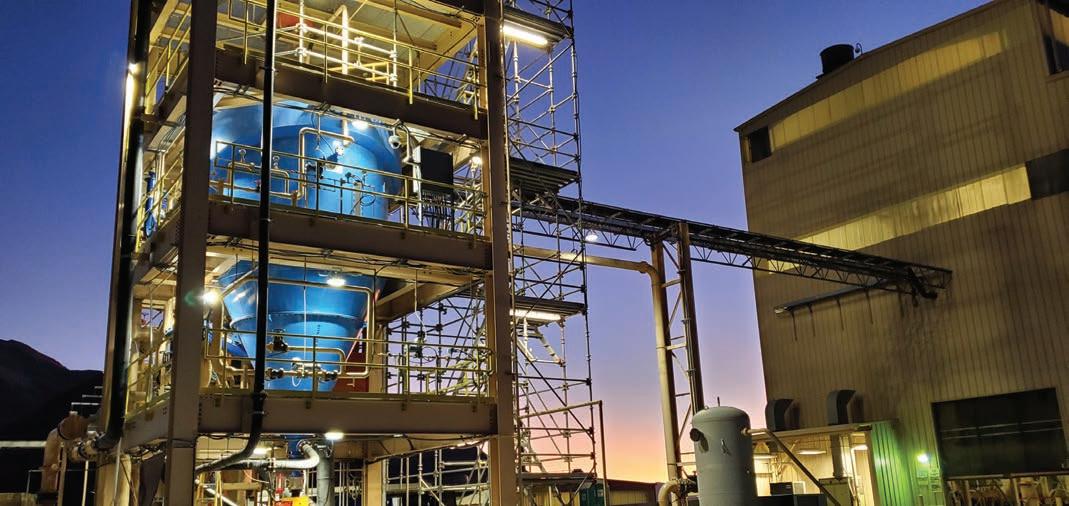
copper grades of the main mining companies in Chile fell by more than 50%. This means that to produce the same amount of copper today it is necessary to process more than twice as much ore as was needed 20 years ago. This brings with it other complications, such as higher energy consumption, higher water consumption, higher talings generation, which in addition to making the processes more complex, could also mean greater risks and possible environmental impacts that must be evaluated and mitigated during its execution. It is also widely known that as the exploitation of the deposit deepens, the ore tends to become harder with more complex mineralogies, which usually ends up negatively impacting the processing capacity and affecting the recovery, which in the end decreases the production of valuable elements.
Currently, having a profitable mining project is not enough to be successful. Mining projects also need to be respectful of the surrounding communities and the environment. To this end, new policies, practices and technologies need to be implemented during the development of these projects, so that more profitable and environmentally sustainable projects can be developed.
The authors of this article believe that this is feasible and that although it will involve taking risks to implement new practices and technologies, which may be heresy in the mining industry, an industry that has historically been characterized by being conservative, it is believed that the implementation of innovation, rather than an option or fad, will be a necessity if operations are to be feasible in the long term.
Recently, there have been encouraging advances in the development and implementation of new and more efficient
AUGUST 2023 CANADIAN MINING JOURNAL | 55 CONTINUED ON PAGE 56
DECARBONIZATION
By Jose Concha and Eric Wasmund
DECARBONIZATION
technologies to be used in mineral processing, such as pre-concentration technologies like bulk and ore sorting, hydrometallurgy technologies that allow recovering copper from low grade sulphide ores such as Jetti, and the coarse particle flotation developed by Eriez, which allows recovering efficiently particles two to three times coarser than conventional flotation technologies.
Coarse particle flotation
Coarse particle flotation (CPF) is a modern technology compared to conventional flotation technologies. The HydroFloat CPF technology has been operating industrially for 20 years. Recently the interest in the mining industry has been growing, because in addition to the metallurgical-economic benefits, it has been seen that this technology can positively impact the entire value chain and provide benefits for the development of cleaner and more sustainable mining. The HydroFloat CPF is a fluidized bed coarse particle flotation machine that has solved the restrictions of buoyancy and froth recovery using a fluidized bed, an upward flow of fluidizing water and countercurrent operation in conditions like a plug flow reactor.
Lower energy consumption and CO2 emissions
Having the possibility of efficiently recovering coarser particles by flotation allows coarser grinding, thus making it possible to reduce energy consumption per tonne of ore processed. Several independent studies carried out by Anglo American, Ausenco, Capstone, Fluor and others, have found that through the implementation of CPF processes it would be possible to reduce the energy consumption in concentrators by 10% to 20%, reaching, in some cases, even higher values. In addition, it is expected that the consumption of milling media per tonne of ore processed will decrease, which, in addition to reducing operating costs, will also have a positive impact on the reduction of CO2 emissions.
The possibility of being able to efficiently float coarser particles will be especially important for operations that expect to have to deal with harder and lower grade ores in the coming years.
Improved water recovery and tailings management
On the other hand, having the possibility to float coarser particles will also provide the opportunity to generate coarser tailings. Several studies have found that depending on the mineralogy and liberation of the processed ore, the implementation of HydroFloat CPF pre-concentration projects could allow the rejection of between 30% to 45% of the total mass processed as gangue in coarse fractions, with P80 above 400 µm to 500 µm, which improves the hydraulic conductivity of these tailings and facilitates water recovery, and disposal is safer.
On this topic, Anglo American has recently published the results of its patented hydraulic dry stacking (HDS) technology implemented at pilot scale at El Soldado. This technology intercalates coarse sand (e.g., tailings from the CPF plant) between layers of fine tailings. According to Anglo American, this novel form of tailings disposal has improved water recovery by more than 80%, and it disposes tailings in a more stable and safer way.
But in addition to this, different studies, for example, the one carried out by Professor Jan Miller of the University of Utah, have found that the HydroFloat CPF technology allows the recovery of coarse particles with very low liberation; it is estimated that 1.5% to 5% of exposed hydrophobic surface is sufficient for a particle to be efficiently recovered by HydroFloat. In other words, the particles contained in the tailings of the
HydroFloat CPF cell, besides being coarse, have very little exposed sulfides, in most cases the sulfides are totally encapsulated, which would limit their reactivity, and reduce acid generation in drainage water in tailing dams.
On the other hand, these coarse tailings (usually 100% over 150 µm) generated in the HydroFloat CPF have a high solids concentration, usually above 60%, and a narrow particle-size distribution (5:1 ratio between the coarsest to the finest particle), allowing them to be easily dewatered. New tailings disposal technologies (e.g., HDS and comingling) could take advantage of the production of coarse tailings generated in the CPF process and provide a more economical and environmentally friendly solution by generating tailings with more favorable geotechnical and geochemical properties for their safe disposal, compared to conventional techniques.
Although these new innovative technologies are a great advance in the safe disposal of tailings, the goal is to have mining operations where no tailings are generated. Although this may seem an unrealistic challenge, there are already studies in this field, such as one conducted by the University of Queensland and the University of Geneva, which has been investigating the generation of a co-product called “ore sands” that could be used as a raw material in the construction industry. In another recent study conducted by the University of Queensland in conjunction with Newcrest, a comprehensive characterization of the tailings from the HydroFloat CPF cells installed at Cadia was carried out, in which it was found that the analyzed sample appears to be suitable for use as a raw material in the construction industry.
Better use of natural resources
Another field related to the development of cleaner and more efficient mining has to do with the better use of our natural resources, either through the economic processing of historical low-grade stockpiles, or through the increased recovery of valuable elements in the flotation process. It is widely known that conventional cells are highly efficient in recovering the elements of interest contained in a narrow range of particle sizes, in most cases in the 20 µm to 150 µm range. However, in the milling process a wide range of particles are generated, which means that in most concentrators that use conventional cells, the greatest losses of valuable elements occur in the –20 µm and +150 µm fractions. In the case of copper plants, this can represent losses ranging from 10% to 20% of the total copper processed.
Through the use of high intensity cells such as the Eriez StackCell it is possible to recover more than 50% of the copper that is lost in the ultrafine fractions (e.g. particles contained in the cleaner scavenger tailings), and with the use of the HydroFloat CPF cell it is generally possible to recover more than 70% of the copper that is lost in the coarse fractions (rougher tailings at +150 µm).
Through the application of these technologies, it is possible to increase the production of the valuable elements without the need to mine more ore. According to a study carried out by McKinsey the application of the CPF process throughout the industry could result in an annual copper production of 500,000 to 1.5 million additional tonnes by 2032, without the need to extract more ore than the mines evaluated are already mining. CMJ
56 | CANADIAN MINING JOURNAL www.canadianminingjournal.com
Jose Concha is global HydroFloat product manager at Eriez, and Eric Wasmund is vice-president, global flotation business, Eriez flotation division.
By Gordon
MINING IN THE FAR NORTH IN 2023 AND BEYOND:
What future for shipping in the Arctic region?
Climate models project continued and dramatic sea ice reductions in the Arctic, including nearly icefree summer conditions by the mid-21st century. While Arctic navigation depends on other factors besides sea ice – including economics, infrastructure, bathymetry, and weather – these projections are useful for strategic planning by governments, regulatory agencies, and the global maritime industry.
The planet’s fast-warming climate brings new opportunities for international transportation networks and offers shorter maritime navigation distances, at least during summer months. In particular, the opening of Russia’s Northern Sea route (NSR) increases the need for new ports and modern infrastructure to service ships that plough through ice-free and ice-covered waters. Projections suggest that the NSR’s July-October navigation season will average about 120, 113, and 103 days for PC3, PC6, and OW vessels (respectively) by late-century.
Near-term opportunities are changing rapidly The global competition for the Arctic is clearly intensifying. One way to understand the unfolding drama is to look at the situation facing Arctic ports. The icy world which these ports have known, since the very first vessels came ashore, is changing much faster than humans had ever expected.
Arctic shipping arteries are operated by abundant vessels and icebreakers, sailing between principal locations behind the Arctic Circle, Europe, and Asia, which means that they need to be supported by a well conducted system of hubs. In lower latitudes, shipping ports are mostly located near city cores since most cargo activities start and end there. A supply of longshore labour is another reason for ports to be located close to larger cities. This means that deepwater ports (and the services they provide) are
typically close to global maritime shipping and often taken for granted.
The situation in the Arctic is quite different. Deepwater ports, places of refuge, marine salvage, adequate port reception facilities for ship-generated waste and towing services are rarely available. The availability of port infrastructure and support directly influences the level of risk associated with transiting a particular waterway – and it directly corresponds to the levels of marine insurance rates.
There are few deepwater ports in U.S. or Russian waters near the Bering Strait. The closest U.S. harbour with deep water is Dutch Harbor in the southern Bering Sea. On the Russian Federation side, the nearest deepwater port is Provideniya. Other Russian ports near the Bering Strait that are closed to foreign ships are Egvekinot, Anadyr and Beringovsky.
Between the Atlantic and Arctic, there are many Norwegian, Icelandic, and Russian deepwater ports. Also, there are several deepwater ports along the west coast of Greenland.
In the North American Arctic, there are no deepwater ports along the North Slope of Alaska, or throughout the Canadian Archipelago, except for the port of Tuktoyaktuk. Tuktoyaktuk suffers from a shallow approach channel and a high degree of in-fill silting. There are also limited port facilities at Resolute Bay, in the middle of the archipelago, which acts as a center of transportation, communications and administration for the high Arctic. However, it can only handle ships of 4.9 metres of draft alongside a sunken barge used as a dock.
In the Hudson Bay, the Port of Churchill is Canada’s only northern deepwater seaport. It enjoys a well-sheltered infrastructure, alongside berthing facilities. It provides access, via rail, to the interior of Canada and North America in general. The growing Port of Churchill offers four berths for the loading and unloading of
grain, general cargo, and tanker vessels, and it can efficiently load Panamax size vessels. The current shipping season runs from mid-July to the beginning of November, though the use of icebreakers could significantly lengthen the shipping season.
The primary Russian ports in the Arctic are Murmansk, Archangelsk, Dudinka, Varandei, Vitino, Kandalaskha. Upgrade and modernization investments are now underway in each one of these. Statistics show that Murmansk Oblast is the biggest Arctic shipping hub. Located on the Kola Peninsula at the coast of the Barents Sea, it is a non-freezing port which can service any type of vessel. Since 2004, more than €4.4 billion ($5.88 billion) has been invested in improving Murmansk’s deepwater port facilities to include new oil, coal and container terminals, as well as expanded rail lines.
At the other end of the Arctic, Vladivostok is being developed as a significant North-East Asian hub, offering access to China, Japan and South Korean markets. The port of Petropavlovsk on the coast of Kamchatka is also set to be developed as an eastern hub for the Northern Sea Route.
Russia and China invest in the Northern Sea route
The Russia-China trade corridor is now the focus of intense concern in both Beijing and Moscow. The political and trade ties of these two countries are on the rise, and with billions of dollars being spent on the hard infrastructure, those opportunities are only going to increase. With the increasing number of free trade agreements that China and Russia share, it appears certain that significant future investment potential lies within this corridor.
China has been a huge investor in the Russian Arctic economy, and not just within the region’s hyper-active oil and
AUGUST 2023 CANADIAN MINING JOURNAL | 57
GLOBAL MINING
Feller
»
gas sector. Beijing’s leaders know quite well that the Northern Sea route is set to become a major global shipping route for cargoes flowing from Asia to Europe, and vice versa. Russia has responded to the big opportunities that it sees (and that China also sees) by designating the entire region as a “free trade zone,” as defined by Russian national law. It covers an area which stretches for 5 million km2. Arctic residents will enjoy tax benefits and easier administrative procedures.
Work on this newly designated zone is focused on attracting both Russian and non-Russian private sector investments into road and rail, including Chinese investment. New (and, some think, quite generous) tax incentives are currently being offered to investors, while the knock-on infrastructure requirements are huge: US$243 billion is being set aside in funding in a region that is expected to generate US$500 billion per annum by 2030. Major projects to upgrade Arctic ports are already underway.
In October of last year, President Vladimir Putin formally adopted the “Strategy for the Development of the Russian Arctic Zone and Provision of National Security Through 2035.” The strategy gives particular significance to Murmansk Oblast, emphasizing a broad range of complex and multifaceted transformative measures targeting this province. Murmansk has long been the Russian Federation’s most prioritized Arctic entity.
The strategy document lays out the plan for multiple geographies within the country:
> Chukotka will see a series of ambitious transit projects. Those include the Pevek seaport and terminals (Chaun Bay), a transportation-logistical hub in the Provideniya port (Bering Sea), and a yearround sea terminal on the Arinay Lagoon (also on the Bering Sea).
> In the Yamal, the documents envisage several ambitions. One is the development of an integrated system of transportation infrastructure.
> In the Nenets Autonomous Okrug, the strategy it calls for the development of strategic-level transportation infrastructure. Namely, the document emphasizes plans to build a deep-water, ice-free Indiga Seaport suitable for ships with a deadweight of at least 100,000 tonnes.
In January of 2020, Russia’s government approved several acts to give new economic benefits and subsidies to busi-
nesses or investors willing to engage in projects in the country’s High North. This legal framework covers Murmansk Oblast, Chukotka, Yamalo-Nenets Autonomous Okrug and Nenets Autonomous Okrug as well as portions of five other federal subjects – Arkhangelsk Oblast, Sakha Republic (Yakutia), Krasnoyarsk Krai, the Republic of Karelia, and the Republic of Komi.
It is all aimed at attracting foreign investors capital into the Arctic territories, and Russia has outlined four main types of projects that will receive a program of benefits from the central government:
1 The extraction of hydrocarbons located offshore on Russia’s continental shelf, with a severance tax (imposed on the removal of natural resources) set at 5% for oil and 1% for natural gas over the next 15 years.
2 The extraction of hydrocarbons on the continent, with an emphasis on liquefied natural gas (LNG) and gas-chemistry (gazokhimiya). New investors are expected to be promised a severance tax of zero percent in the next 12 years upon starting industrial extraction.
3 The production of LNG (as well as other projects related to the gazokhimiya industry). Investors will have to pay the severance tax in full only after 17 years of industrial production.
4 For other projects, the potential benefits depend on what is being extracted, and the project’s scope. Aside from non-hydrocarbon-related investments (including minerals), this type includes infrastructure projects (such as seaports and pipelines).
Alexander Kozlov, who heads the Ministry for Development of the Russian Far East and Arctic, says that the Arctic zone’s share of Russian GDP is close to 10% and receives 10% of total foreign direct investment. It suffers from chronic under-population, containing less than 1.5%of the total Russian population. Over the past 15 years, the local population has decreased by 300,000, according to Kozlov.
Russia’s hopes for the region are pinned on the prospect of creating more than 21 new large regional mega-projects (including the Indiga Port in the Nenets Autonomous Okrug), exploration of large deposits of platinum and other metals in Krasnoyarsk Krai and Murmansk Oblast, and the creation of a full-cycle lumber/timber-producing complex in Arkhangelsk Oblast.
Geostrategic competition is rising
Decreasing sea ice is extending opportunities for global shipping, in turn increasing the geostrategic importance of the region. The Arctic is rapidly becoming a new theater of great-power competition – both geo-economic and geo-strategic.
Russia has been attempting to expand its exclusive economic zones in the region and is conducting enforcement operations with internationally unrecognized authority in Arctic seas. The Russian military has also been improving its capabilities to operate in the Arctic. Similarly, China, coveting Arctic shipping routes and potential resources, has been attempting to legitimize potential future Arctic claims by describing itself as a “near-Arctic” power.
Eight countries – Canada, Denmark (including Greenland), Finland, Iceland, Norway, Russia, Sweden, and the United States – have Arctic territory, while five countries (Canada, Denmark, Norway, Russia, and the U.S.) have Arctic Ocean coastline. As climate change reduces ice cover in the Arctic, Russia will experience the greatest percentage access increases to its exclusive economic zone, followed by Denmark, Norway, Canada and the U.S.
Russia has the most expansive Arctic territory of any of these countries, and it is by far the most capable Arctic competitor. The Kremlin views the Arctic as critical to its overall national defense strategy. Consequently, the country is actively preparing its military forces to operate there, while simultaneously working to secure and exploit the region’s untapped resources. Russia hopes to control enough Arctic resources, particularly energy resources, to ensure national economic stability and growth while controlling all shipping near its coastline and maintaining sufficient military power to deter any aggressors crossing the Arctic.
Russia maintains that its extensive Arctic capabilities give it additional rights and has claimed authority to regulate ships transiting international waters in the NSR. This policy has been protested by other nations, who state that it violates international laws – specifically the United Nations Convention on the Law of the Seas (UNCLOS). However, UNCLOS – along with the Polar Code – may be inadequate for the unique Arctic environment. CMJ
Gordon Feller is a multi-skilled freelance writer.
58 | CANADIAN MINING JOURNAL www.canadianminingjournal.com
GLOBAL MINING
By John Sandlos
mining scandal
Most mining industry insiders remember the Bre-X scandal of 1997 as Canada’s, and pos sibly the world’s, worst case of stock and mining fraud. It was certainly a big deal, featuring geological samples salted with gold, the suspicious death of a geologist, a raft of lawsuits, non-stop national news coverage, and a speculative stock frenzy that accompanied the company’s false proclamation of the biggest gold find in the world at Busang, East Kalimantan, Indonesia. More than two decades later, the name Bre-X is still synonymous with the greed and dishonesty that has tempted some in the mining indus try to “game” the stock market by mis representing the value of mineral strikes.
Such cases are rare in the recent history of Canadian mining, but there are examples from the very early days of the industry. Indeed, the very first European mining project in what we now call Canada, Martin Frobisher’ journeys to the eastern Arctic from 1576 to 1578, deserves a prominent place alongside Bre-X in the history of mining scandals.
Frobisher organized his first journey to the eastern Arctic in 1576, not to find minerals, but to unlock the northwest passage to China. Things went badly from the beginning, as one of the three ships on the voyage sank and the other turned back to England after a violent storm. Faced with an indiscernible maze of water and land near Baffin Island, Frobisher failed (like so many others would) to find a way through. So, he started looking for other ways to justify his voyage, grabbing ore samples from Little Rock Island, a tiny land mass of the southeast shores of Baffin Island. He also kidnapped an Inuk, who later died of illness, in retaliation for the mysterious disappearance of five of his men when they took a potential Inuk guide to shore. Upon Frobisher’s return to England, his financier and promoter Michael Lok sent the rock samples for assay. While three of the assayers

pronounced it worthless, a fourth, Giovanni Batista Agnelli, suggested that his samples contained gold.
A full-scale gold rush to the eastern Arctic was not feasible in the 16th century, but Frobisher and Lok were able to mobilize enough capital to finance a new expedition.

Lok founded a joint stock venture, the Company of Cathay. Among the many investors, Queen Elizabeth funneled £1000 toward the venture and loaned a ship, aware of the riches the Spanish royal court had reaped from New World mining operations in Mexico.
Frobisher’s fleet arrived in the Baffin region in July 1577, disappointed not to find a large deposit of gold-bearing on Little Rock Island. They did find remnants of European clothing in an abandoned Inuit camp on the southern shore of Frobisher Bay. Assuming the men had been murdered and cannibalized, Frobisher organized an attack on a nearby Inuit camp, killing five Inuk and getting wounded in the rump by an arrow. The exploration party eventually found a large deposit of what Frobisher thought was gold-bearing rock on Countess of Warwick Island (today Kodlunarn Island). By August, Frobisher’s crew had picked away about 200 tonnes of ore using hand tools, which they transported back to England along with three Inuit captives who did not survive for long.
Once again most of the assays suggested that the ore contained no gold. The assayer on the voyage, Jonas Schulz, had claimed the ore contained 2.6 oz. of gold per tonne, but the results may have been compromised due to Frobisher brandishing a knife to speed up the work. Back in England, one assayer, Benjamin Kranich, reported that the ore contained a jaw-dropping 13.5 oz. of gold and 50 oz. of silver per tonne, but his assistant warned that Kranich had added silver and gold to account for the small size of the sample.
This one questionable assay was enough to mobilize inves-
AUGUST 2023 CANADIAN MINING JOURNAL | 59
HISTORY OF MINING
CANADA’S
FIRST
Sir Martin Frobisher, the privateer and explorer who established the first English mine in North America near Baffin Island in 1570s.
CREDIT: ACROGAME/ADOBE IMAGES
English painter, John White, created this watercolour depicting a skirmish between the Inuit and Frobisher’s men. The painting was produced between 1585 and 1593 as part of a book of 113 drawings. THE IMAGE IS PRINTED WITH PERMISSION FROM FORMAC LORIMER BOOKS.
»
tors to fund a third voyage, a large fleet of 15 ships that departed for the Baffin area in June 1578. The expedition was supposed to probe more for the northwest passage and build a colony for 100 crew members to stay through the winter (an experiment to determine if they could survive). They failed to achieve either goal, befuddled by the geography of the Arctic Islands and loathe to leave men behind after the supply ship containing housing material and a winter’s supply beer had sunk. The expedition crew did manage to build the first English house in the Americas, though nobody ever lived in it. More impressive was the haul of ore, as the crew managed to load 1,350 tonnes on the ships and carry it back to England.
On the other side of the Atlantic, Lok had convinced investors to finance construction of a smelter in the town of Dartford. When the ships arrived, weighed down with ore, there must have been great anticipation through the fall of 1578 while workers wheeled cart after cart of stone up to the smelter. But repeated attempts at smelting produced no gold or silver. While angry investors and company officials at first blamed the assayer, the adage to not shoot the messenger eventually held sway. The rock was worthless, with some of it eventually used to erect a fence at a royal property in Dartford, where it can still be seen today.
If the Queen recovered a small portion of her investment, other investors were left high and dry – and extremely angry. Lok ended up in debtor’s prison over the Baffin misadventure,
while Frobisher re-focused his energies on a naval career. Neither man can be accused of actively contaminating ore samples and walking off with the stock proceeds, as in the Bre-X case, but they did misrepresent the value of their ore, raising investment capital for their adventures based on fraudulent pretenses.


Business fraud is certainly not unique to the mining industry (witness the recent allegations against crypto entrepreneur Sam Bankman-Fried and the recent conviction of medical device fraudster Elizabeth Holmes). But fraud did occur as mining expanded in North America, the temptation of quick riches often luring investors into dubious mining schemes. During the golden age of mining in the western United States, Mark Twain opined that a mine was nothing more than “a hole in the ground owned by a liar.” Twain’s rhetoric may be unfairly broad, but there is no doubt that Frobisher, as the first European mining entrepreneur in North America, was one of those liars. Even though the Baffin voyages occurred over 500 years ago, Frobisher’s fraudulent actions and destructive relationships with Inuit left a legacy that invites no small measure of reproach in the present day. CMJ
John Sandlos is a professor in the History Department at Memorial University of Newfoundland and the co-author (with Arn Keeling) of “Mining Country: A History of Canada’s Mines and Miners,” published by James Lorimer and Co. in 2021.

60 | CANADIAN MINING JOURNAL www.canadianminingjournal.com
Canadian Mining Journal’s 2023 Media Kit and Editorial Calendar. Contact Robert Seagraves at rseagraves@canadianminingjournal.com or George Agelopoulos at gagelopoulos@northernminer.com or call 1-416-510-6891 to request your copy. www.canadianminingjournal.com
HISTORY OF MINING
ON THE MOVE
Executive, Management and Board Changes in Canada’s Mining Sector
TOP MOVES IN THIS ISSUE
MANAGEMENT MOVES
» Riley Trimble has been named president, CEO, and a director of Aben Minerals
» Breanne Beh was appointed CEO of Angus Gold
» Morgan Knowles is VP investor relations at Arizona Metals.
» Arizona Sonoran appointed Bernie Loyer SVP projects and Christopher White as chief geologist.
R.Dale Ginn president and CEO.
» Gary O’Connor is leaving Moneta Gold, and Josef Vejvoda will be his interim replacement.
» Suzanne Retallack is now chief safety and sustainability officer at Newmont.

» Patriot Battery Metals named Greg Barfoot its VP project development.

Eira Thomas
Eira Thomas, president and CEO of Lucara Diamond, has joined the board of wild cat conservation organization Pantera. A Canadian geologist with over 25 years of experience, she co-founded Lucara Diamond in 2018. In 2008 Thomas was one of only four Canadians to be named to the Young Global Leaders by the World Economic Forum. The previous year she was selected as one of Canada’s Top 100 Most Powerful Women.
Carolyn Chisholm is the new chair of the Mining Association of Canada. She is also general manager, external affairs at Rio Tinto Canada, leading advocacy and engagement strategies. Prior to that, she worked for more than 20 years in external affairs and public policy in the private sector as VP of the natural resources and environmental group with a public affairs firm, and as senior advisor to federal and provincial ministers.
Cory Belyk has been promoted to president of CanAlaska Uranium and will continue his responsibilities as CEO and a director of the company. He is a professional geologist with nearly 30 years of experience in the Athabasca Basin and worldwide. He leads the company’s exploration and management teams from offices in Saskatoon. Before joining CanAlaska in 2019 as COO, Belyk was director of exploration at Cameco.
To send your management, board and award announcements directly to us for inclusion in the next newsletter, please email your submission to editor@canadianminingjournal.com
» Auxico Resources Canada appointed Pierre Gauthier president and CEO.
» Avalon Advanced Materials appointed Scott Monteith as CEO and Jim Jaques as chief administrative officer.
» Eric Caba is now president and CEO of Bear Creek Mining and will sit on the board.
» Cassiar Gold named Jill Maxwell VP exploration.
» Century Lithium named Todd S. Fayram as senior VP metallurgy.
» The new CFO at Finlay Minerals is Gordon Steblin
» FPX Nickel named Keith Patterson VP generative exploration for the Baptiste joint venture with JOGMEC
» Gold Hunter Resources welcomed Sean A. Kingsley as president, CEO and a director.
» Lancaster Resources appointed Andrew Watson VP engineering and operations.
» Claude Lemasson is now CEO of Landore Resources
» Los Andes Copper named Santiago Montt as CEO.
» Metallica Metals named Benoit Desormeaux CEO.
» Mineral Mountain Resources appointed
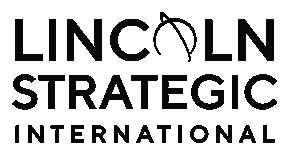
» Piedmont Lithium named James Griffiths SVP of corporate development and treasury, and Kara deBorder as VP risk management.



» Prospect Ridge Resources welcomed Yan Ducharme as president.
» Robex Resources named Daniel Marini VP operations, Joe Bannister Kiniero gold project director, Luca Maggini exploration manager, and Peter Taylor production geologist.
» Steppe Gold named Byambatseren Tsogbadrakh its new president following the resignation of Bataa Tumuor-Ochir, who will remain CEO and chair.
» Suncor Energy named Dave Oldreive EVP of downstream operations.

» Teck Resources appointed the following vicepresidents: Nick Marach (corporate controller); Sheila Risbud (coal sustainable development);
Don Sander (coal operations); and Richard Whittington (projects and operational excellence).
» Anthea Bath is now president and CEO of Wesdome Gold Mines
» Xplore Resources named Dominic Verdejo its new president and CEO.

JULY 202 3 | VOLUME 5 | ISSUE 5
SPONSORED BY ERIK BUCKLAND Partner Global Mining Recruitment M: +1 416.854.8468 E: erik.buckland@lincolnstrategic.com W: www.lincolnstrategic.com
Carolyn Chisholm
Cory Belyk
AUGUST 2023 CANADIAN MINING JOURNAL | 61
BOARD ANNOUNCEMENTS
» Alamos Gold announced the retirement of Kenneth Stowe from the board and the appointment of Shaun Usmar.
» Angus Gold appointed David Palmer as chair.
» Arizona Metals added Katherine Arnold and Mike Palmer to it slate of directors.
» Arizona Sonoran Copper added Isabella Bertani to its board.
» Atha Energy asked Dough Engdahl to join the board and serve as managing director.
» Avalon Advanced Materials added Jan Holland to its board.
» The newest director at Avino Silver & Gold Mines is Carolina Ordoñez one of the Top 10 Most Influential Hispanics in Canada.
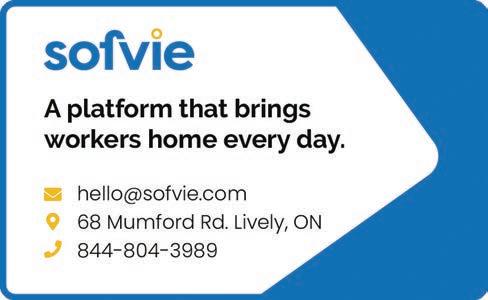
» Aya Gold and Silver asked Annie Torkia Lagace to join the board when Marc Nolet de Brauwere steps down.
» Catherine McLeod-Seltzer was named chair of Bear Creek Mining
» The newest member of the Canterra Minerals board is Nicklas Coleman.
» Carolina Rush added Gordon Babcock to its slate of directors.
» CDN Maverick Capital named CEO Adam Cegielski to the board.
» Bryan Disher is chair of Century Lithium
» Deep-South Resources appointed Alfredo Luis Riviere Rodriguez director, replacing Thomas Tumoscheit
» Desert Gold welcomed Doug Engdahl to its board.
» Flying Nickel Mining named Jim Rondeau to its board.
» Jeff Rowe joined the boards of Goldstorm Metals and Tudor Gold
» Grizzly Discoveries named V. Richard Rabbito to the board.
» Iamgold named Audra Walsh to the board.
» Edel Tully joined the board of International Tower Hill Mines
» Mike Ciricillo, Mark Cruise, and Rich Levielle joined the board of Interra Copper.
» Ivanhoe Mines elected Phumzile Mlambo-Ngcuka and Delphine Traoré to the board.
» Nav Dhaliwal is now executive chair of Mineral Mountain Resources.


» NGEx Minerals elected Alessandro Bitelli to the board.
» Patriot Battery Metals appointed Pierre Boivin to the board.
» Yan Ducharme and Michael Michaud joined the board of Prospect Ridge Resources
» Robex Resources nominated Gerard de Hert and Thomas Lagree for the board.
» Juan Carlos Ortiz was named lead independent director by Silver Mountain Resources
» Nathalie Sajous joined the board of Skeena Resources.
» The new chair of Steppe Gold is Bataa Tumor-Ochir, who is also CEO.
» Treasury Metals welcomed Michele Ashby and James (Jim) Gowans to the board.
» Former president and CEO Wesley Hanson became chair of Xplor Resources.
ADVERTISERS
Alamos Gold 17 www.alamosgold.com Almonty Industries 1 www.almonty.com AMC Consulting 62 www.amcconsultants.com Brandt Group 7 www.brandt.ca Broadfence Inc. 20 www.broadfence.com Doppelmayr 47 www.doppelmayr-mts.com Eriez Manufacturing 12 www.eriez.com Exploration Mapping 44 www.explorationmapping.com Haver & Boecker 42 www.haverniagara.com/procheck Maestro Digital Mine 5 www.maestrodigitalmine.com Martin Engineering 27 www.martin-eng.com MEMO Saskatoon 10 www.memo2023.cim.org Redpath Mining 19 www.redpathmining.com Richwood 34 www.richwood.com 53 www.rosta.com 64 www.rocktechnology.sandvik 31 www.sgs.com 62 www.sofvie.com 32 www.soluroc.com 35 www.sprs.com 24 www.srk.com 2 www.superiorglove.com/mining 54 www.takraf.com 53 www.temaisenmann.com 60 www.titanenviro.com 8 www.wsp.com BUSINESS DIRECTORY 1,800+ CLIENTS | 8,000+ PROJECTS 38+ YEARS’ EXPERIENCE Corporate Consultancy Geotechnical Engineering Geology Mining Engineering amcconsultants.com 1,800+ CLIENTS | 8,000+ PROJECTS 38+ YEARS’ EXPERIENCE Corporate Consultancy Geotechnical Engineering Geology Mining Engineering amcconsultants.com 1,800+ CLIENTS | 8,000+ PROJECTS 38+ YEARS’ EXPERIENCE Corporate Consultancy Geotechnical Engineering Geology Mining Engineering amcconsultants.com 1,800+ CLIENTS | 8,000+ PROJECTS 38+ YEARS’ EXPERIENCE Corporate Consultancy Geotechnical Engineering Geology Mining Engineering amcconsultants.com 62 | CANADIAN MINING JOURNAL www.canadianminingjournal.com
INDEX
EQUIP YOUR TEAM WITH THE
Leverage the industry knowledge of mining’s leading news and data channels to super charge your sales team with a TNM NEWS + DATA Group Membership
Keep your team up to date and in the know with unlimited access to every story from
+
Help clients discover your products and services and boost your SEO with a featured listing on

Uncover the right prospects with trusted market intelligence on thousands of companies, properties, and personnel from

Easily manage your team’s access through our intuitive Group Admin interface on
Get All of These Features and More, Plus Save Up to 45% With a Group Membership
LEARN MORE AT MEMBERSHIP.TNM.GLOBAL/ENTERPRISE
AUTOMINE MAPPING SOLUTION NEXT GENERATION AUTOMATION SOLUTIONS ®
AutoMine® Mapping Solution is the first solution from the Next Generation program at Sandvik. It brings together two of the Next Generation technologies to make one state-of-the-art solution to enhance mining operations.
This innovative AutoMine® solution is designed to maximize productivity and improve safety of autonomous vehicle navigation in underground mining operations by utilizing mapped data. It enables a vehicle to map an automated underground environment with a 3D Mine Mapping Tool and then uses the information to generate 3D maps of the mine. The data can then be used by 2D underground equipment to operate safely during mining operations

EXPLORE NEXT GENERATION AUTOMATION SOLUTIONS ROCKTECHNOLOGY.SANDVIK





















 CREDIT: HEXAGON
CREDIT: HEXAGON




















































 Eric Desaulniers, founder, president, and CEO of Nouveau Monde Graphite.
Eric Desaulniers, founder, president, and CEO of Nouveau Monde Graphite.





























































